

Shopping Cart
7 key elements to develop new tourism experiences.
- June 12, 2020
- 10 Comments

Visible impact of tourism
The international tourism industry has been on hold for the past few months due to COVID 19. Closed borders, negative travel advice and no income for a large group of people. It shows us how many of the world population are actually dependent of tourism.
The recession of tourism has shown us how quickly nature flourished due to the absence of tourists. Wildlife moved back into urban areas and the Himalayas were visible again after 30 years. On the other hand, we have also seen how wildlife conservation was threatened due to the absence of tourism. It shows us tourism has a unique position to create benefits and positive impact for nature and people. If done right.
“We should use this time as a rare chance to think about how we travel” – Leigh Barnes of Intrepid Travel
Article continues below image

Developing new tourism experiences post COVID 19
The industry has been on hold, however, the urge to travel and discover the world is stronger than ever. But what do travellers expect nowadays and how can you make sure to develop good experiences that meet their needs, and are good for the planet and local people? This article gives you 7 key elements to consider when developing new tourism experiences.
- Off the beaten track
- Slow Travel
- Less frequent but longer travel
- Local travel
- Good travel
- Self-guided travel
- Personal and flexible

1. Off the beaten track
Due to COVID, social-distancing protocols and the visible negative effects of overtourism , travellers will want to avoid busy tourism crowds. Travelling to less popular and populated places is a great solution. To combat overtourism, we need travellers to not be at the same place at the same time.
Destinations need slower flows of travellers in order to stay authentic. Local people should be made priority. Develop tourism experiences that take travellers of the beaten track, into the unknown. Escape touristic highlights and show them hidden gems, discover less visited places and spread tourism impact.
2. Slow Travel
Let travellers enjoy the destination at a slower pace than they are used to. Take the entire trip into consideration. Reduce your carbon footprint by avoiding domestic flights and take the train instead. Almost every destination has beautiful scenic routes that will add value to the experience.
There will also be an increased interest in outdoor activities. Most travellers have been in lockdown for a long time and will now appreciate nature more. Take advantage of this change and include cycling , trekking and canoeing as transport mode. It’s no longer only about the destination, but more about the journey and truly experiencing the destination.
3. Less frequent but longer travel
When travelling off the beaten track and at a slower pace, travellers simply need more time to explore the destination. Thereby, in order to slow down global warming, we simply need to fly less. This doesn’t mean we can no longer travel; it just means we need to stay longer to spread the impact.
It also means travellers have the opportunity to travel beyond country highlights, experience more unique features of a country, and be able to truly connect with locals. Travelling longer will make it more special and significant. Develop three- and four-week standard trips and extensions for short trips to offer varied options.
4. Local travel
It will most likely be a while before international borders open up. This means that your usual tourists might not come back any time soon. In the meantime, there is a lot to see and do in your own destination. People are ready and excited to start travelling again after being in lockdown and will first start exploring their own surroundings.
Start developing tourism experiences that are also relevant and interesting for local people. Tailor your existing experiences to a new audience and keep in mind the tone of voice, content and itineraries. Show locals a different side of their own surroundings and let them discover and be surprised.

5. Good travel
We’ve all seen how tourism impacts destinations, both positively as negatively. Be the change and focus on good travel. Let travellers experience the destination properly. Support local communities , learn about their culture, their food, language and history. Include local hotels, restaurants, souvenir shops and guides. Let them boost the local economy .
Be sure to focus on animal welfare , nature conservation and creating a positive impact on the destination. Provide travellers with the realisation they will enjoy their trip more if they know their travel benefitting local people instead of negatively impacting them. Create purposeful and responsible experiences.
6. Self-guided travel
Due to the new guidelines of social distancing, travellers want to stay clear of other people. Take this into account and develop tourism experiences that are suitable for more intimate travel. Instead of joining larger organised group tours, travellers will now choose to travel in small groups with family and friends.
They are also more likely to choose self-drive and self-guided experiences as they can socially distance themselves from other travellers at all times. Include smaller lodges and hotels and stay away from confined spaces and tourism crowds. Make use of an app to ‘replace’ your local guide and still provide added value.
7. Personal and flexible
Personal service and tailored experiences were already important aspects. However, now it’s become more essential than ever. Travellers want to be cared for and need to feel safe for tourism to recover completely. Keep in mind your buyer persona and be ready to tailor your experiences to your clients to create a trip they feel comfortable with.
There will be a shift to touchless travel, strict health and safety protocols and digital tools to support this movement. Embrace them and show your customers you care about them. Be prepared for last-minute bookings and offer flexible cancellation conditions to build trust with your customers. They will want to be ensured they can cancel or change their trip if they don’t feel comfortable travelling.
Focus on the future
Despite this being a very difficult time for the tourism industry, take the opportunity to see the positive side of things. Invest in your business and find inspiration to develop new, good tourism experiences for the future. Use this time as a rare chance to think about how we travel. Decide for yourself and your business how you’d like to become a better tour operator.
You must be logged in to post a comment.
This is a good and comprehensive article on tourism focussing on the current issues globally.
Thank you for the compliments Hassan, very much appreciated.
This was really worth the read. Thanks for sharing Anne.
Very happy to hear that Tina, thank you for letting us know. Hopefully it will help Continent Tours to build back better!
I really enjoyed reading the article. Its brief, practical and useful.
Thank you!!
This is really amazing for sure,
Thanks so much for this promising article.
You’re welcome Keneth, very good to hear your feedback!
Great information up there, thanks a lot
Great article right here. I enjoyed reading it
The 7 key elements to develop tourism experiences post Covid 19 are all important guidelines to pay attention to, however the idea of less frequent but longer travel has stood out. The need to develop three and four week standard trips and extension for short trips to offer varied options fits well in an immersive experience and yet slowing down on global warming.
I like the idea that we can still do some business in this post covid and tailor our existing experiences into local travel. Considering that the biggest population of our people in Uganda have not explored their country this creates a new dimension of new and future travelers with-in Uganda.
Brilliant Ideas! Thanks Team!
Anne de Jong

Roadmap to sustainable travel success (free Ebook)
Discover 6 proven paths to best-selling sustainable travel experiences.
Download free roadmap
Read our latest library additions

Understanding Gen Z travel needs and demands

How to integrate sustainability across your website

8 good tourism trends for 2024

- Share full article
Advertisement
Supported by

The 25 Travel Experiences You Must Have
A pair of internationally minded writers, a chef, an architect and a landscape photographer made a list of the most extraordinary adventures a person should seek out. Here are the results.
By Alwa Cooper , Ashlea Halpern , Debra Kamin , Aileen Kwun , Miguel Morales , Dan Piepenbring and Michael Snyder
One July morning, a five-person jury — including the writers Pico Iyer and Aatish Taseer , the architect Toshiko Mori , the chef and food scientist David Zilber and the landscape photographer Victoria Sambunaris — gathered over Zoom to debate what, exactly, constitutes a “travel experience” and how some might rise above the rest. To get the conversation started, each panelist had nominated at least 10 selections in advance of the call; their job now was to slash that list from 55 to 25.
The participants were all polite, often deferring to whomever they deemed an expert on a particular subject: Zilber, who worked at Noma and co-authored the Copenhagen restaurant’s 2018 book about fermentation, on outstanding restaurants; Sambunaris, who traverses the country several months a year by car to capture her images, on the spectacular topography of the American West. They were also quick to sacrifice their own darlings, particularly if they felt they were too familiar (Petra, Machu Picchu), too obscure (Alvar Aalto’s Muuratsalo Experimental summer house in Säynätsalo, Finland — a Mori selection), too personal (driving the Karakoram Highway connecting Pakistan and China — something Taseer heard about from his father) or too commodified (a Nile River cruise, most hotel stays ). As Iyer put it, “Hotels offer luxury and comfort, but they rarely touch my soul.”
Some panelists rescinded nominations for experiences they hadn’t had themselves, despite having dreamed for years about what it might be like to, say, hike through Japan’s remote Yakushima Island National Park , the inspiration for Hayao Miyazaki ’s “Princess Mononoke” (1997) . (“I feel like I don’t know if going there would destroy or enhance my fantasy,” Mori said.) Others opted to keep in the mix selections to which they couldn’t personally attest — proving how powerful our collective imagination can be. If something seemed too easy, they worried it might not be special enough. At the same time, not every experience chosen is rare or difficult to access: Sometimes it’s just a matter of opening your eyes (or mind) to whatever magic a place has to offer.
The panel considered safety, too, with some participants concluding that what might make a destination “dangerous” is largely, though not entirely, shaped by personal history and worldview. Others wanted to be sure readers were asked to conduct their own research before deciding whether or not to set out for a certain place, as situations on the ground can change rapidly. At the time of publication, the U.S. State Department had issued its strongest possible warning — Level 4: Do Not Travel — for four of the destinations on the following list; several others have been categorized as Level 3: Reconsider Travel. But most of the panelists agreed, time and again, to include politically, ethically and ideologically fraught locations . “War-torn countries and places in conflict right now haven’t always been and might not always be,” said Zilber. “I don’t think [their current status] should negate their inclusion.” (In the months between when this panel met — on July 20, 2022 — and the list’s publication, the world continued to shift: the Russian war with Ukraine deepened; Iran erupted in protests following the arrest and subsequent death of Mahsa Amini, a young woman accused by the country’s morality police of violating their hijab law; and Ethiopia and the Tigray Defense Forces, a paramilitary rebel group, agreed to a cease-fire after two years of ruinous civil war.)
The final lineup, which is grouped geographically but not ranked, includes experiences of art and architecture, food, history and religion. There’s something for every whim and every kind of traveler — even those who may never leave their armchairs. — Ashlea Halpern
This conversation has been edited and condensed.
Ashlea Halpern: I’m curious to hear how each of you defined the word “experience” when you sat down to make your list.
Pico Iyer: I asked myself, “Which are the moments that most stay with me 30 years on in my life? Which are the most moving and also the most unexpected?” I wouldn’t include seeing the Taj Mahal by moonlight, because most Times readers would be aware of that. So something slightly different, but something that still reverberates inside me half a lifetime later.
Victoria Sambunaris: I defined “experience” as a journey, because that’s what I do in my life: I’m on the road for months at a time, immersing myself in the landscape. I’m interacting with people and learning about the [local] culture, history, ecology and geography. No reservations anywhere, being spontaneous, camping under the stars — there’s a great sense of adventure.
Aatish Taseer: I veer toward man-made things — cultural and civilizational complications. When a natural experience leaves me with a sense of wonder that I didn’t expect, it breaks the mold. Everyone travels with a sense of what they’re going to see; no one is completely blank. Then, occasionally, there’s a real element of surprise. That’s what I looked for.
David Zilber: “Experience” is really broad; everything is an experience. Binge-watching Netflix while sick is an experience, though I can’t remember what I binge-watch when I’m bedridden at home. But I do remember my 45-minute drive through the mountains of Crete to eat at this man’s biodynamic farm with his kids running around — and I probably will when I’m 75.
Toshiko Mori: I thought of natural wonders, because we forget how small we are, and of being able to observe animal life in a habitat without interfering with it. With Instagram, everybody posts awesome images; [the depicted locations] become huge attractions and it’s destructive to the environment. Also, I thought of certain civilizations and places that have had challenging pasts — like Kurdistan after ISIS retreated. It’s essential for us to engage in experiences like this, because we are incredibly privileged and protected. I didn’t want to forget places that really need attention.
A.H.: Let’s start with Europe. Spain received four nominations from four different panelists — more than any other country on your initial longlists.
1. Taste Wood-Smoked Sorcery at Asador Etxebarri in Spain’s Basque Country
The chef Victor Arguinzoniz was raised amid the rolling green hills of Atxondo, a small village in Spain’s Basque country where, when he was a child, his family kitchen had neither electricity nor gas. Perhaps that’s why the open hearth can produce such magic for him. He has no professional training but for 30 years has overseen a temple to smoke and flame at the Michelin-starred Asador Etxebarri, a rustic restaurant minutes from his childhood home. Arriving there, with its view of cattle grazing in the foothills below, is like stopping time. But in the kitchen, the clock has inched slightly forward: The six custom-made grills, designed by Arguinzoniz and adjustable via pulleys, are tools of culinary alchemy. The chef prepares his own wood coals in special ovens that are cranked up to 750 degrees Fahrenheit. For each protein, he pairs a fuel with the precision of a sommelier, selecting holm oak for delicate shellfish and turning to heartier vine wood for red meats. There’s only one service — at 1:30 p.m. — and one menu per day. The meal, served in 15 courses, is a symphony that builds, plate by smoke-kissed plate, to a crescendo: first the smoked goat butter with Périgord truffle; then the salted, home-cured anchovies on grilled bread; then the beef chop with its crisp black sear and lustrous purple center; and finally a coda of smoky-milk ice cream with an infusion of sweet beets. This is fine dining in its purest, most unpretentious form. — Debra Kamin
D.Z.: Meals are some of the stickiest memories around, and this is definitely in the top three of my lifetime. It goes without saying that the Basque Country of Spain revolutionized food in the late 1990s and early 2000s, and the repercussions of that have been felt around the world. I started cooking in 2004, and all the techniques that I’ve learned came from that region. We can talk about Ferran Adrià and his El Bulli and all the progeny who are still cooking today in Barcelona and Madrid, but Etxebarri best encapsulates what this region is about and its deep connection to the land and its people. There’s no one who comes out of that restaurant who doesn’t leave deeply touched.
2. Search for Muslim Spain in Al-Andalus

From the eighth to the 11th centuries, the Iberian Peninsula, then under Muslim rule, was one of the world’s most important intellectual and artistic hubs. In the region of southern Spain known as Andalusia — the name a Hispanicization of Al-Andalus, as Islamic Spain was known — that heritage remains visible everywhere: in the crimped vocalizations of flamenco music; in the elaborate geometric friezes of Seville’s Alcázar Palace; in the infinite recess of the red-and-white archways of the Mezquita-Catedral de Córdoba; and, above all, in Granada’s storied Alhambra, the last Moorish stronghold on the European continent, where it glitters in honeycomb muqarnas and moonlight-washed, waterway-threaded gardens. During the so-called Reconquista, as the centuries-long process through which Catholic kings gradually eroded territories accumulated by successive Muslim dynasties has been historically misnamed, the great cities of Andalusia became spectacular palimpsests of divergent faiths superimposed on top of each other. In Seville, the 15th-century cathedral — the largest Gothic-style building in Europe — stands on the footprint of an Almohad mosque whose graceful minaret was repurposed as a church tower, while in Córdoba, a Renaissance cathedral bursts from the austere, rhythmic heart of the mezquita , itself built atop the remains of a sixth-century Visigothic basilica. After experiencing these spaces, one finds that the influence of Islamic aesthetics throughout Spain — and, indeed, throughout the Americas, devastated and remade under Spanish colonial rule — reveals itself everywhere. Beyond its beauty, Andalusia is a tribute to the indelible marks that cultures and communities leave on one another across time and space. — Michael Snyder
A.T.: Nothing in the world prepares you for the strangeness of the Grand Mosque in Cordoba [Mezquita-Catedral de Córdoba]. I’ve grown up in places where there are the mosques on the bones of temples on the bones of Buddhist viharas, but this business of church upon mosque upon church, where you walk in and see the remains of a Visigothic church but you’re in one of the most beautiful mosques in the world [and since the 13th century a church again], it’s like an act of reclamation — or historical revenge. Even the minaret is buried in the belfry of the church. It’s a theme that I love — layers upon layers of history — and just one of the reasons I thought it was absolutely marvelous.
P.I.: I was the one who suggested the Alhambra, so it comes down to whether we want a zoom lens or a wide angle. I chose the Alhambra for all the reasons that Aatish was mentioning: the overlapping of cultures, the historical significance and also the fact that the Alhambra is fairly well known. On nights when it’s open after dark, you’re getting a familiar place in a relatively unfamiliar context. So our question, really, is whether we want to introduce everyone to that entire region or just a microcosm of it.
A.T.: There’s a development I like in a broader trip, where you come to Seville, see the Giralda, which was originally built as the minaret of the old Almohad mosque, now part of this cathedral, and then you’ll journey a little farther and go to Córdoba and see this stunning mosque that has been turned into a church, and then finally it culminates in this last gasp of Islam in Spain, the Emirate of Granada, which then obviously results in the Catholic monarchs and the end of Muslim Spain. But Pico is absolutely right: The Alhambra is the epicenter — the Moors’ last sigh.
T.M.: I like this idea of a journey. This exposure to Muslim culture is so much more interesting than a single place.
3. Venture Into the Norwegian Night in Search of the Northern Lights
Spotting the aurora borealis, the elusive natural phenomenon colloquially known as the northern lights, involves careful coordination of time, place and, yes, luck. Like a digital rendering or laser beams projected above an after-hours rave, the unpredictable show illuminates the sky with dancing streaks of saturated yellow, pink, purple and green, a tangoing of solar gas and Earth’s magnetic field rendered in Technicolor. Locales roughly 66.5 degrees above the Equator, where the Arctic Circle begins, are considered prime viewing spots; cottage industries across Alaska, Canada and Scandinavia have sprung up to sell package tours and overnight accommodations to aurora hunters. Lofoten, an archipelago off Norway’s northwest coast, offers one of the most picturesque backdrops for witnessing this mercurial sight. There, a coastline framed by jagged peaks, sweeping fjords, sandy beaches and rorbu , old fishermen’s cabins painted cherry red and pine green, makes for a serene visit, day or night. Winters on the archipelago are long (November to April) and dark (for five weeks in December and January, the sun doesn’t even rise), so consider them a prime time to settle down on a north-facing beach (Unstad and Gimsøy are particularly beautiful) or sink into a hot tub at a heritage fishing lodge, neck craned skyward — and wait. The anticipation is half the fun. — Aileen Kwun
D.Z.: The northern lights are one of those earthly phenomena that don’t make sense — I don’t think that my brain could fully compute what it was like until I saw it in real life. And Lofoten is just extremely picturesque: It’s hard to get to but very rewarding once you’re there. But I don’t know. Maybe the northern lights are the Mona Lisa of the natural world?
A.H.: Anyone else seen the northern lights in Norway or elsewhere?
T.M.: Yeah, I have, because I’m in Maine and you can see it in northern Maine, but I don’t think it’s anything like what Dave is talking about. Lofoten is on my wish list.
A.T.: I saw them in Iceland but I’m 100 percent pinching David’s idea.
P.I.: I was really excited as soon as I saw this [on the list]. I’ve been up to Fairbanks, Alaska, to see the northern lights, and I know people go to Churchill in Manitoba. But the combination of the northern lights and this remote setting sounds irresistible.
4. Journey Across Two Continents and Eight Time Zones on the Trans-Siberian Railway
Traveling to Russia now, as its war with Ukraine continues, is virtually impossible: Nearly all international flights have been suspended, and the State Department has recommended that Americans steer clear of the country. How or whether Russia’s relationship with the rest of the world, not to mention its tourism industry — a frivolous concern compared to the immense suffering of the Ukrainian people — will recover remains to be seen. But in more peaceful times, riding the Trans-Siberian Railway and its shorter connecting lines is an unparalleled experience — a tour through the many and varied cultures that make up the largest country on Earth. The 5,772 miles of track from Moscow to Vladivostok, built at the turn of the 20th century at the behest of Emperor Alexander III, constitutes by itself the longest continuous railway in the world, and before the pandemic and then the war interrupted its international reach, sleeper cars could take you from most major Western European capitals to Moscow in two or three days. From there, you can make it to the other end nonstop in seven days, but arranging layovers along the way allows for a variety of side excursions: Hop off at Yekaterinburg to see the Soviet-era architecture of Russia’s fourth-largest city, for example, or Irkutsk to visit the UNESCO World Heritage site of Lake Baikal, the world’s oldest and deepest freshwater lake. Better yet, switch at Ulan Ude to the Trans-Mongolian Railway, which extends through the capital of Ulaanbaatar and into the Gobi Desert, ideal for fossil hunting and camel riding, before arriving in Beijing. — Alwa Cooper
V.S.: OK, I know Russia is controversial right now. But this is the longest [direct] train journey in the world. You’re going through ancient cities, deep forests, breathtaking mountains and Siberian outposts. You’re seeing a lot.
A.H.: How does the panel feel about including Russia?
A.T.: I feel absolutely fine. Russia existed before Putin, and Russia is going to exist after Putin. I mean, how could I, with a straight face, eliminate traveling through Russia and then go scurrying down to my Dostoyevsky and Tolstoy? I have a firewall between this idea of Russia as a culturally rich nation and the political reality that one can speak critically of. Lots of nations that we love will come to be ruled by bad people.
P.I.: I agree with Aatish. Political complication, historical complexity and texture are really what make these places something more than sites.
5. Savor an Unforgettable Lunch at Ntounias in Western Crete
It takes a 45-minute drive from Chania, Crete, through the Greek island’s White Mountains to reach this mecca of homespun cooking in Drakona. Through scenic Therrisos Gorge, with occasional stops for sheep crossings, the journey is best made with the windows down, cooled by the hillside breeze and dazzled by the sun winking across limestone mountain caps. Expect a warm greeting upon arrival — the view from the terrace of the valley below will make up for any bumps in the rugged and twisty road — but don’t expect a menu. Along with his wife, Evmorfili, Stelios Trilyrakis, the chef, farmer, shepherd, butcher, owner and maître d’, takes care of all that. The daily bounty comes from an organic garden, part of the tavern Trilyrakis took over from his parents in 2004 after years of working as a chef in Chania. Guests are invited to tour the grounds and the nearby apiary as well as the wood stoves and ovens in the kitchen, though the meal rightfully remains the primary attraction. There might be a village salad (horiatiki), farm-baked bread and freshly churned butter, stuffed vegetables cooked in a traditional clay pot, potatoes fried in olive oil for close to an hour, goat sizzling in its own fat and house wine made on-site. In a country known for its cuisine, Ntounias stands apart. — Miguel Morales
D.Z.: This man used to be a chef in Chania and then seemed to think, as I did, that the world of restaurants is just not where it’s at. So he left and founded a little biodynamic farm. He has this plot of land that overlooks a verdant gorge, and he cooks everything on an open fire. You get snails, lamb stew, whatever is in season. It’s not complicated food; it’s never going to be in the Michelin Guide or on the “World’s 50 Best” list. But it’s the closest I’ve tasted to soul food.
T.M.: I love Crete. It’s a very beautiful place and it still has a certain authenticity about it. The roads sometimes dead-end, and when I was there, you needed at least three maps to figure out where you were. It’s a real physical landscape.
D.Z.: The island itself is one of the oldest continually inhabited civilizations in all of Europe. It has a crazy history, and just going there and eating this food, the way that he cooks it, it’s so honest.
6. Join the Faithful in Addis Ababa, Ethiopia, for a Different Kind of White Christmas
There is no Santa Claus in Ethiopia, no halls decked with holly. Christmas, which in so much of the Western world is a commercialized affair, is an intensely spiritual day here, observed not with gifts but with community, incantation and candlelight. The majority of Ethiopians are Christian and most worship freely, despite a history of extremist attacks on churches across the country. The nation follows a solar calendar, and Christmas, known as Genna, is observed on Jan. 7. The holiday begins with fasting on Jan. 6, when, at dusk, devotees head into the streets. In bustling Addis Ababa, a hush falls as thousands of men, women and children, all dressed in white and many wrapped in the traditional cotton robes called netelas , file to church like slow-moving snowdrifts. Many will worship all night, traveling by foot, lit candles in hand, from one church to the next until the small hours of morning. Ethiopia is home to some of the oldest and most beautiful churches in Africa, all of which are filled to capacity on Christmas Eve. (Visitors are welcome to observe.) In the capital, these include the Medhane Alem Cathedral, with its turquoise domes and columnar facade, and the Holy Trinity Cathedral, with its grand murals, jewel-toned stained glass windows and granite tombs in which Emperor Haile Selassie and his consort are interred. Some of the world’s oldest known human fossils have been unearthed from Ethiopian sands. On Christmas Eve, a nation that continues to endure famine and ethnic violence pauses for a prayer of peace. As worshipers pass one another and declare, “ Melkam Genna! ” — “Merry Christmas” in Amharic — the streets all but vibrate. — D.K.
P.I.: I seem to be haunted by places of spiritual intensity, from Lhasa to inner Australia. But I’ve seldom found anywhere to rival the power and magnetism of Ethiopia. It is, by some accounts, the oldest Christian country in the world, and when you drive through it, you feel like you’re going through the biblical books of Kings. But it comes to its culmination on Christmas Eve, when it seems like everyone in the capital is dressed in white, gathering around what look like mangers while these burning-eyed, bearded priests are rocking back and forth with little Bibles that fit in the palms of their hands. I’m not a Christian, but you look around and feel you could be in Bethlehem at the time of the birth of Jesus and that so little has changed in the past 2,000 years. Part of the poignancy is that life tends to be very difficult in Ethiopia, [teetering] between political uncertainty and impoverishment. So there’s this real sense that the religion and the moment mean even more than they might in Madrid or Paris. Although I was there 28 years ago, I’ll never forget walking through the night from church to church, seeing these people with tears in their eyes, gathered in the darkness, holding their candles and singing.
7. Traverse the Blossoming Oases and Ancient Desert Towns of Morocco’s Draa Valley
In precolonial Morocco, the imposing grandeur of the Atlas Mountains marked the boundary between the bilad el-makhzen — land under the rule of the Alaouite sultan — and the bilad el-siba , or “region of anarchy.” Today, to drive the circuitous route through the Atlases and into the Draa Valley is to exist on that line: It’s a liminal place where verdant gardens and soaring minarets open onto the vast barrens of the Sahara. Departing from Marrakesh, head southeast to Ouarzazate, or “the door of the desert,” and then onto M’Hamid, whose Dar Paru hotel exemplifies Berber architecture, with its rammed-earth walls and geometric parapets. From there, follow the N9 and N12 roads to hew close to the Draa, a river that runs along the Algerian border, nourishing a landscape of riotous color: The mountains’ ochers, umbers and emeralds cede to rippling oases of blue palms, olive groves, fields of golden barley and sun-baked adobe casbahs. Once home to a bustling trade route, the region bears the marks of Morocco’s imbricated faiths and folkways. Fragrant date palms, first grown by Arabs who arrived in the seventh century, freckle stretches of arable land hemmed in by sand dunes. Towns such as Tissint draw their influences from the Berbers, who have lived in North Africa for more than 4,000 years. (“Tissint” is the Berber word for salt, another early commodity.) Further southeast, in Akka, more than 300 miles from Marrakesh, are the remains of a community of Jewish merchants and silversmiths who plied their trade in the area as early as the second century. Their homes — made of mud brick and stucco, with walls now jagged or altogether missing — stand as monuments to the Draa’s rich, syncretic past and to the enthralling boundlessness of its present. — Dan Piepenbring
A.T.: I’d been to Marrakesh; I’d been to Tangier. Morocco, for me, was a known commodity. Then I did this journey south a couple of years ago. This is an Arabic place, and yet there’s this very profound other culture that’s always under the surface. The most startling moment came when I arrived in a town where there was an old Jewish quarter of silversmiths and we went into a house that felt like it had been abandoned yesterday. It was just one of those moments where suddenly all of the pieces fall into place and you get a window into another vein of culture or civilization and how it interacted with this Arabized Muslim state of Morocco. I also have to say, landscape-wise, it’s the only place other than Yemen where you’re driving through and you have these discrete, scarified mountains on either side, and every now and then there’ll be, like, a flowering tree against the desert. It’s stunning stuff.
8. Come Face to Face With a Rare Marine Mammal Off the Coast of Southern Mozambique
Sea pig, sea cow, sea camel — the dugong’s epithets aren’t particularly evocative, but its serene presence is the highlight of any dive trip. The 200 or so animals that scientists estimate live in the protected waters of Bazaruto Archipelago National Park constitute the largest remaining dugong population on the East African coast. To experience them, you must fly into the nearest international airport, in the town of Vilankulo, and then organize a helicopter or dhow ride to one of the archipelago’s many resorts and lodges. There are numerous diving and snorkeling spots along Bazaruto’s famed Two-Mile Reef, which offers unusually clear visibility and a thriving coral population. Found in the shallow coastal waters of as many as 40 countries, the large and placid dugong (imagine a manatee with a wider, shorter snout) is intensely shy, and its population is considered “vulnerable,” according to the International Union for Conservation of Nature Red List of Threatened Species. Its hearing is sharp but its vision is poor; moving in slowly, silently and respectfully is key. Even so, only the luckiest Bazaruto divers will ever spot a dugong — often from a distance of several meters — drifting alone or in pairs. — A.C.
A.T.: When I’m obliged to write about the natural world, I get kind of nervous because I think, “Oh, am I going to feel something? Am I going to know how to translate that feeling in my writing?” By April [2022], I had become very scared of travel: the pandemic, the restrictions, the fear that you were going to be stuck somewhere and not allowed back. All of this was weighing on my mind, and I’d almost lost that sense of wonder, that willingness to leave home. And in this place, which is the basin of the Indian Ocean in that part of the world, the plane tilted and I saw the sand flats push through this ancient archipelago and I thought to myself, “Of course, this is why one leaves home!” I hadn’t scuba-dived in 15 years, and here I was with blacktip reef sharks and sea turtles swimming into the raking light with plankton. Dugongs are incredibly rare, but as we came up from this dive, we saw one. It was a kind of emotional state brought on by the pandemic — a fear of leaving home running smack into that total excitement to be out in the world again.
A.H.: Many other lists like this would probably include an African safari; it’s refreshing not to promote a more traditional safari experience.
T.M.: The African safari has a checkered history because it’s related to hunting animals. There’s a balance now between conservation and infringement, but how those animals are really protected or may not be … there’s a lot we don’t know. So I’m definitely sensitive about not recommending a safari as an experience.
THE MIDDLE EAST
9. discover paradise on earth in the secret courtyard gardens of yazd, iran.
The very concept of paradise was born in Iran around 550 B.C., when Cyrus the Great, in the days of the Achaemenid Empire, oversaw the construction of a spectacular walled oasis called Pasargadae — a place of symmetry, flowering trees and calming waters — setting an example of how man might bend nature in pursuit of ultimate beauty. So deep do the Iranian roots of nirvana run that even the English word “paradise” comes from paridaida , the Old Persian term for walled garden. For those wishing to commune with Eden today, there’s perhaps no better place than Yazd, a 1,600-year-old Iranian desert town that was once a critical stop on the Silk Road. Here, the garden hotels of the city, which today is home to 530,000 people, pay homage to the Iranian legacy of paradise with their hidden courtyards. From the lush Kohan and the majestic Moshir Al Mamalek to the family-run Dad Hotel, the accommodations range from humble to luxurious. For guests who step through the door and out into the enclosed garden, hushed earthly delights of fountains and flowers — soft calla lilies, tulips and desert roses — await. — D.K.
P.I.: In all my traveling life, Iran is definitely the richest, most sophisticated, most surprising place I’ve been. And it’s the one I’m always urging my friends in California to go to — partly because I worry, as with Cuba or with other Middle Eastern places, that we’re reducing them to one-dimensional stereotypes from afar. And I’m so keen for people to experience the human reality firsthand. Sometimes friends will ask me, “Is it safe to go?” Well, I’m sitting here near Los Angeles, which for most of the planet is a really scary place.
Before I went to Iran, I was told by people who had been there that you only have to worry about two things: Everywhere you go, you’re going to be swamped with more friendliness than you know what to do with, and everyone’s going to invite you to dinner. The only reason that didn’t always happen to me was that people took me for Iranian, so they weren’t as excited as if they’d seen a more visible foreigner.
A.T.: I loved Yazd. I have to say that I did run afoul of the authorities in Iran and was turfed out with 48 hours to leave and probably couldn’t go back, but I completely second what Pico said. Up until that point, I had been met with nothing but hospitality and friendship, and Yazd was one of the highlights of that trip.
10. Swim in a Desert Oasis in Oman
Many of Oman’s wadis, or desert valleys, dry up in the scorching summer months, but at Wadi Bani Khalid, wide pools of water glisten year-round. You drive through the desert and suddenly there it is: a cliché of a gleaming desert mirage. But this is no illusion. Above the pristine pools, date palms sway in the breeze, and the rocky white cliff sides of the Hajar Mountains reveal canyons and caves; if you hike into them, you can see shimmering waterfalls. Thousands of tiny garra fish flash beneath the surface of these pools, ready to nibble at the dead skin on your toes. Wadi Bani Khalid is a three-hour drive from Muscat, making it an ideal day trip, although there are lots of budget hotels and desert camps in the area. Many visitors stop first at the sandy outpost of Al Wasil for camel rides and an overnight stay in a Bedouin-style tent. From there, the mountain road winds through fishing villages until the vast expanse of Wadi Bani Khalid, with its nearly 12-mile stretch of water, appears on the horizon. Its natural beauty is as intact today as it was when Oman’s Bedouin tribes relied on it, and a visit here offers an instant connection to the region’s deep history. The Oman government has helped develop the site in recent years, too, bringing with it a paved parking lot, bridges and public restrooms. — D.K.
T.M.: I share Pico’s notions that people should travel to the Middle East. The geographical diversity is incredible, and Oman is a peaceful and stable place. It’s absolutely gorgeous, the air is clear, the food is great and the climate is wonderful. It’s so easy for people to go here, yet Dubai takes all the tourists.
P.I.: I’m so happy to see Oman on the list. I think of it as the Bhutan of the Middle East because it’s so tastefully developed and preserved.
11. Delve Into 6,000-Plus Years of History at Erbil Citadel in Iraq
The longest continuously inhabited settlement in the world, Erbil Citadel lies at the heart of the modern-day capital of Iraqi Kurdistan. To the north, the Zagros Mountains beckon. The Kurdistan Regional Government has been developing trails there to promote hiking across a range that rivals the Alps in size — an impressive backdrop for one of the cradles of civilization. The 6,000-year-old fort sits atop a tell, a 100-foot-high mound the size of 19 football fields made by generations of Muslim, Christian and Jewish communities that built on top of one another. Courtyard homes constructed with oven-fired brick, said to be inspired by the ring of tents nomads once formed around their cattle, nestle inside the citadel walls. Their plain facades conceal branching floor plans that gave privacy to the extended families who once lived there. Visit the citadel with a guide in the late afternoon, when its brick walls turn the color of amber, and then drop by the bustling Qaysari Bazaar, one of the oldest covered markets in the world. Dating to the Ottoman era, it houses stalls of jewelry, textiles, crafts and sweets. Erbil and its citadel have withstood waves of conquest by Sumerians, Akkadians, Assyrians, Babylonians, Achaemenids, Greeks, Parthians, Romans, Sassanids, Muslims, Timurids, Mongols and Ottomans. To repair and preserve the settlement, the High Commission for Erbil Citadel Revitalization was formed in 2007; the Kurdistan Regional Government has allocated more than $30 million to the undertaking. But just as the citadel was made a UNESCO World Heritage Site in 2014, the rehab stalled temporarily owing to the rise of ISIS. Work has since resumed; the ancient tell remains open; and, despite centuries of conquest and long spells of neglect, the citadel stands: a testament to the resilience of the human spirit. — M.M.
T.M.: Kurds will say, “We have no friends but mountains.” This is one of the world’s largest stateless populaces and it’s constantly in danger, sandwiched between Turkey and Iran. The citadel is still going through reconstruction. I wouldn’t say it’s beautiful, but it gives you a real sense of place and what it’s like to live in a region that has had to defend against ISIS attacks. It’s not a safe choice, but Kurdistan is a strong and resilient community that has survived ongoing and periodic attacks. There are prominent politically progressive women in the government and there are many untouched archaeological sites.
12. Marvel at the Threatened Mud-Brick Skyscrapers of Yemen
In an ancient Semitic world as yet undivided by modern faiths, long before the rise of Christianity or Islam, the cities of what we now call Yemen emerged from the desert as their inhabitants made their fortunes on frankincense and myrrh. As trade between southern Arabia and the Mediterranean flourished, beginning around the third century B.C., these new urban centers sprouted along the so-called Incense Route , their occupants developing, over time, ingenious systems of irrigation and urban planning that are as remarkable today as they were a thousand years ago. In the 2,500-year-old historic center of Sana’a, the capital of modern Yemen, residents adorned the ocher walls of their multistory homes with garlands of gypsum plaster, while in the town of Shibam, which emerged in its current form in the 16th century, rammed-earth towers rose as high as seven stories from a cliff’s edge overlooking the Wadi Hadhramaut, a vertiginous landscape that blurs the boundary between the natural and the man-made. For decades now, these ancient settlements and the people who reside within them have suffered crisis upon crisis — floods and famines and a years-long civil war that, since its beginning in 2014, has precipitated mass starvation, even as historic neighborhoods are shredded by U.S.-backed Saudi bombings. Among the most extraordinary human settlements on earth, the tower cities of Yemen — and, more important, the communities that have for millenniums called them home — are in grave danger of disappearing for good. — M.S.
A.T.: Singularly, without a doubt, this was the most incredible trip I’ve done in my life. This is a rare, stuck-in-the-past kind of country: Like pre-Islamic Arabia, it felt Semitic in the deepest sense. Yemen, for me, was that one place where there was no creeping globalization; it was unbelievably pure. There were some dangers then, too, but not like there are now. I hesitate to recommend it because of the safety situation.
P.I.: I was thrilled to see it on the list. And if we have to single out one element in Yemen, those skyscrapers would be the place to start: Anyone who’s seen them is never going to forget them. I think we shouldn’t worry about safety. It is one of the great countries on Earth and, as Aatish was saying, not like anywhere else.
V.S.: Yes, I agree. We should keep it. Just Aatish’s description — I’m ready to go.
13. Follow the Silk Road Through the Caravan Cities of Uzbekistan
Step back in time with a visit to three of the most important stops on the Silk Road, each city a distinctive meld of Greek, Turkish, Mongol, Muslim and Russian cultures. In the tiled expanse of the Registan, ancient Samarkand’s public square framed by three madrasas (Islamic schools), stand transfixed beneath the grand portals, patterned minarets and ornate cupolas. A little down the road to the west lies Gur-e-Amir, the resting place of the Turco-Mongol conqueror Tamerlane. Resplendent with intricate tile work and crowned by a heavenly blue dome, the mausoleum inspired the Mughal master craftspeople of the Taj Mahal. A leisurely walk northeast, past new developments and century-old buildings, calls for a stopover at Siyob Bazaar, where you can wander the food stalls selling pomegranates, dates, halvah, naan and more. A few hundred paces away is Bibi-Khanym: One of the largest mosques built in the 15th century, the structure was restored to much of its former glory in the latter half of the 20th, its grand azure dome and four minarets suspended against the backdrop of the iwan. There are no direct flights from Samarkand to Bukhara, so take the scenic route by train, past rippling red sands, the oases that punctuate the bleached-out plains of the Kyzylkum Desert and Poi-Kalyan, the sprawling mosque complex, where the baked brick of minaret, madrasa and mosque glow pink at sunset. And though all three cities have centuries-old caravansaries — the famed inns where Silk Road merchants stayed — Ichan-Kala, a remnant of the ancient Khiva oasis, checkered with medieval Islamic buildings, appears completely untouched by time. Countless others have walked these walls before, and now you have joined your steps to theirs, grounded together in the richness of the past. — M.M.
A.T.: I mean, unparalleled, the most wonderful Silk Road trip you can do. Stunning monuments, red desert, old Persianate culture mixing with the culture of the steppe and then, obviously, the Soviet empire. I would recommend it very highly.
14. Tour the Lofty Potala Palace in Lhasa, a Sacred Repository of Tibetan Artifacts
Rising out of a cliff face more than 12,000 feet above sea level, Tibet’s Potala Palace feels like a lavish retreat, a religious sanctuary and an impregnable fortress all in one. The climb to the top of the 13-story building is breathtaking in every sense of the word; make sure you’ve acclimated to the altitude before you attempt it. And the palace’s sloped red-and-white facade — repainted annually with a mixture of honey, milk, brown sugar and saffron — is as inviting as it is magisterial. (Frank Lloyd Wright found it so inspiring that he kept a photo of it in his drafting room.) Completed in 1649, the palace’s two divisions, one red and one white, together comprise at least one thousand rooms that encapsulate the vibrant multiplicity of Tibetan history. Guided tours, lit by traditional butter lamps, take you through rooms crowded with hundreds of murals, works of porcelain and jade, intricate carpets and Buddhist scriptures; the world’s longest scroll of Tibetan calligraphy, measuring 676 feet in length, has been housed here since 2014. Also on display are astonishing gilded stupas — wooden towers of concentric rings inlaid with jewels, each crowned with a sun and moon — containing the remains of eight Dalai Lamas. The Potala is a tribute to Buddhism and an embattled people; located on a mountaintop in the Tibetan capital, Lhasa, or “place of gods,” it has survived numerous attempts at looting and destruction since Tibet was annexed by China in 1950. Its resilience is reason enough to go. — D.P.
P.I.: Tibet is a really important place for people to visit culturally and politically because it’s so imperiled. Ladakh is more beautiful and Bhutan is more protected. But Tibet, the center of this rich culture and religion, is being destroyed very quickly, and anyone who goes there suddenly feels deeply invested in its protection.
15. Explore the Architectural Syncretism in South India’s Deccan Plateau
The vast highlands stretching between the eastern and western coastal ranges of the peninsular subcontinent have seen the rise and fall of countless kingdoms, each of which has left behind architectural remains as proof of its former glory. Nowhere is that immense cultural wealth more evident than in the temple towns and former imperial capitals of northern Karnataka, near the Deccan Plateau’s semi-arid heart. Beginning in the sixth century, the Eastern Chalukya dynasty, a vast and culturally diverse empire, turned its successive capitals in the now-sleepy villages of Aihole and Badami and the ceremonial center of Pattadakal into hubs for experimentation in religious architecture, assembling free-standing temples from elaborately carved stone that drew influence from both North and South India and excavating and erecting sites of Hindu, Jain and Buddhist devotion. In the 14th century, the Muslim Bahmani kings introduced Persianate domes and crenellated walls at the fortress capital of Bidar, while in Bijapur, roughly six hours southwest, the skyline bristles with minarets and domes left behind by the Adil Shahi sultans, who ruled there in the 16th and 17th centuries. Farther south, the subcontinent’s last great Hindu empire blossomed in the city of Vijayanagar, built over the course of 200 years, then abandoned in 1565 after its defeat by the sultanates of the northern Deccan. Now known as Hampi, that great city marks the pinnacle of Dravidian architecture, with its soaring temple towers and colonnades. Taken together, these cities and towns, clustered in the northern districts of Karnataka state, represent a practically endless trove of architectural treasures at least as rich as the Mughal mosques and Rajput temples of North India’s well-trodden tourist circuit. More important, they speak to the long tradition of syncretism that has always defined India, a tradition that contemporary politics increasingly — and tragically — aims to erase. — M.S.
A.T.: I went to school in South India, and the Deccan is very far from the world of the Taj Mahal and North Indian Islamic architecture. It was this unbelievable trail with beautiful temples in Aihole and Badami. Then you come to Hampi, which was once the capital of the Vijayanagara Empire, and it’s a site like Angkor Wat: absolutely stunning. Then you carry on to Bidar and Bijapur [Vijayapura] and you see mosques — it’s one of the most interesting, beautiful meeting points of Islam and Hinduism, but in the south of India as opposed to the north.
P.I.: I’ve been to India quite a few times and I’ve never heard about those wonders. It’s a fresh, eye-opening suggestion.
16. Hike Japan’s Lore-Steeped Kumano Kodo Trail
South of the ancient cities of Kyoto and Nara, Japan’s Kii Peninsula offers dramatic ocean vistas and dense old-growth cedar forests. Its flickering shadows, creeping mosses and shrouds of ethereal mist have enraptured pilgrims and seekers since antiquity, and the region’s awe-inspiring tranquillity has come to embody the long commingling of Shinto and Buddhist traditions. Every year, as many as 15 million people hike the Kumano Kodo, a network of trails more than a thousand years old and totaling more than 600 miles, whose cobblestone stairs and long wooden footbridges lead to three grand shrines: the Kumano Hongu Taisha, the Kumano Nachi Taisha and the Kumano Hayatama Taisha, all prized for their ability to heal and purify. (That last one is said to date to A.D. 128, when it was built for gods who’d descended to Earth.) Comprising seven routes around the peninsula or through the heart of the Kii Mountains, the Kumano Kodo is so sprawling that no two journeys will ever be alike, though all are formidable; its Kohechi trail, a four-day, 43-mile hike over three mountain passes, includes vertiginous ascents of more than 3,200 feet and is renowned for its difficulty. Those who make the strenuous climb will find weathered milestones, natural hot springs and a hand-operated cable car suspended over a riverbank. Visitors can seek shelter for the night at designated campsites or at minshuku, guesthouses scattered along the route. Further on, at the Kumano Nachi Taisha shrine, a stately three-tiered pagoda overlooks the 436-foot Nachi no Taki, Japan’s tallest single-drop waterfall, long considered a sacred entity, which has enveloped generations of travelers in its awesome roar. — D.P.
T.M.: I like the idea of Shinto mountain worship: It’s a challenging but incredibly cleansing experience — like the pilgrimage to Santiago de Compostela in Galicia.
D.Z.: I know two people who’ve done it, both after their fathers died. They said it was transformative.
T.M.: It’s arduous, and that makes it a strange spiritual experience unlike anything else.
17. Spend the Day in the Womblike Emptiness of the Teshima Art Museum in Japan
Before the pandemic, hundreds of thousands of travelers visited the art islands of Japan, a collection of some 20 former fishing and industry isles turned art havens scattered across the Seto Inland Sea, just over an hourlong flight from Tokyo. They made the trek via a combination of train, ferry, car, bus and bicycle, some with visions of Yayoi Kusama’s “Pumpkin” (1994), a polka-dot yellow fiberglass pumpkin positioned at the end of a pier, in their heads. That sculpture was responsible for much of the foot traffic at the Benesse Art Site on Naoshima, a small island with several museums designed by Tadao Ando, until it was swept out to sea during a typhoon in 2021. (The work was eventually recovered, restored and, last month, put back on display.) As Japan slowly reopens, the Art Islands continue to attract pilgrims. Inujima, Shodoshima and Megijima host installations and art fairs in once-abandoned buildings, but it’s Teshima Island, home of the Teshima Art Museum, that travelers most need to experience. Designed by the Tokyo-based architect Ryue Nishizawa, the museum’s low-lying concrete shell is a feat of engineering and a work of art in itself. Inspired by the bulbous curve of a water droplet resting on a sheet of glass, it appears to emerge organically from a forested hillside overlooking the sea. Inside, two open-air oculi frame shifting scenes of water, sky and sunlight alongside the museum’s single permanent installation, 2010’s “Bokei” (Matrix), by the Hiroshima-based artist Rei Naito. The contemplative work features beads of water that emerge from, pool atop and are reabsorbed into pinholes perforating the floor. To enjoy a few hours in its engulfing silence, watching the light change with each passing hour, is to surrender to time itself. — A.K.
P.I.: I’ve been really impressed by the art project around Naoshima in the Seto Inland Sea and how it has developed over the past 30 years. Though I would recommend the entire Naoshima project, the most piercing place is Teshima. You take a bus across a quiet island, end up on a hill and step into this vast empty space, which is the museum. There’s nothing there except two openings in the roof and drops of water being made to emerge from the ground. And somehow it’s transfixing — like a James Turrell Skyspace doubled and taken in an almost feminine direction. So many people, from billionaires to meditation teachers, have told me this is the single most moving place they have ever been.
THE AMERICAS
18. take the ultimate road trip: drive the pan-american highway from argentina to alaska.
Roughly tracing the path that early man followed after crossing the land bridge over the Bering Strait, the Pan-American Highway runs at least 19,000 miles from Prudhoe Bay in Alaska to Ushuaia at the edge of Tierra del Fuego, a subantarctic territory split between Chile and Argentina. Crossing 14 countries and interrupted only by the ecologically fragile forests of the Darién Gap between Panama and Colombia, the highway — really a collection of interconnected freeways splintered across various routes — traverses the tundra of western Canada and the peaks of the Rockies, the deserts of northern Mexico and the pampas of Patagonia. Options for detours along the way are almost endless. You might weave through the national parks of the American West. In Mexico, depending on which route you take, you might feast on roasted goat in Monterrey or raw seafood in coastal Mazatlán. You could wander colonial cities like Antigua, Guatemala, or Granada, Nicaragua, and bird-watch in the rainforests of Costa Rica. In the valleys between Colombia’s triplicate Cordilleras, you could sip coffee among green hills in the department of Quindío and salsa dance in the lowland city of Cali. Following the Andes south, you’ll gaze upon the gilded extravagance of Ecuador’s whitewashed capital, Quito, or hike in the highland planes below the snow-dusted dome of Cotopaxi, that country’s highest active volcano. You could deviate from the main road to lose yourself in the endless white expanse of Bolivia’s Salar de Uyuni, then follow the spine of South America through regions of Argentina and Chile punctuated by vineyards and lakes. To drive the Pan-American Highway is to glimpse the immensity of the Americas and the unthinkable marvels of a world both ancient and irrepressibly new. — M.S.
V.S.: You’re driving through at least 14 countries including the U.S., Canada, Mexico, Guatemala, El Salvador, Honduras, Nicaragua, Costa Rica, Panama, Colombia, Ecuador, Peru, Bolivia, Chile and Argentina. There’s surfing, jungles, swimming, birding, colonial towns, the history, the culture, glaciers, caves, blue lakes, beaches, hot springs in Mexico — it gives you everything.
19. Behold the Natural Wonders of Chile’s Atacama Desert
Ranging from the Pacific Coast to the Andean Altiplano and locked in the rain shadow of the world’s longest mountain range, the Atacama Desert, located mostly within northern Chile, is among the most alien landscapes on the planet. Pink flamingos gather at the edges of salt lakes the color of lapis or topaz or garnet. Perfectly conical volcanoes loom over salt flats and desolate plains where guanacos, elegantly proportioned cousins of llamas, and viscachas, which resemble long-tailed rabbits, drift through prickly wisps of ground-hugging vegetation. Jets of steam slip through the arid turf in some of the highest geyser fields, and rocky hills drop into the frigid blue waters of the Pacific. Uncontaminated by light or clouds or moisture, the night sky explodes with stars, recorded and studied by some of the most advanced telescopes on Earth. Covering a swath of 70,000 square miles and contiguous with similar biomes in neighboring corners of Argentina, Peru and Bolivia, the Atacama is so extreme in its atmospheric conditions that NASA used it as a test site for its Mars rovers in 2017. Until civilian space travel becomes a reality, the Atacama, with its spectral beauty, will remain perhaps the closest one can get to an extraplanetary experience. — M.S.
V.S.: The Atacama is the driest nonpolar desert on Earth. And I love extremes, obviously. I felt that this would offer a remote and diverse experience with lunar landscapes, salt pools comparable to the Dead Sea, sand dunes, rock formations, hiking and incredible stargazing.
T.M.: You can have an amazing time looking at stars, and it’s incredibly dry, so the atmosphere is very different. A truly visceral experience.
20. Feast on the Cuisines of Oaxaca City, Mexico
The state of Oaxaca has long been a focal point of Mexican culinary identity. But in the past few years, the namesake capital’s limestone buildings and dazzling evening light have attracted unprecedented numbers of visitors, upending the equilibrium between its Indigenous identity and the constant demands of tourists for elegant restaurants and luxury hotels. Yet growing awareness of Oaxaca’s cultural wealth and diversity has also made it possible for chefs with local roots to open revelatory new businesses in spaces as simple as they are unforgettable. At Levadura de Olla, for instance, the chef Thalía Barrios García prepares food straight out of the remote hill country south of the city where she grew up. Bowls of black beans fragrant with wood smoke or, in season, tacos made with the brilliant crimson flowers of the pipe tree are the closest thing to country cooking you’re likely to find in any major city. Outside the center, the chef Jorge León has turned the tranquil garden of his family home into a restaurant called Alfonsina, where he serves an ambitious, adventurous tasting menu that draws on his experience as a cook at Pujol, the high-concept gastronomic temple in Mexico City, while his mother and aunts turn out a parallel menu of traditional dishes like a meticulously prepared hoja santa-scented mole amarillo. Every corner of this wondrous city and its surrounding countryside contains its own culinary jewels — from market stalls selling steamed tamales swaddled in banana leaves and crisp corn tlayudas folded like envelopes around sheets of chile-rubbed beef, to relaxed mezcalerías and market halls redolent of barbacoa cooked overnight in underground pits. The newer restaurants aim neither to replicate nor supplant these spaces but, rather, to honor them and, in their down-to-earth manner, expand their reach. — M.S.
A.T.: A lot of food scenes can be quite fussy. What was moving to me here were restaurants like Levadura de Olla, with a woman who’s come from the hills of Oaxaca to bring the cuisine of her home to this restaurant. Besides the food being wonderful, it seemed like a real break from the sort of fine dining you find elsewhere.
21. Dance Until You Drop at Carnival in Cuba
Cuba’s massive Carnival celebrations have been held in some form or another since the 17th century. As a series of winter events tied to the Catholic Church’s calendar, Carnival was largely reserved for Cubans of mostly Spanish ancestry, while its summer counterpart, the Mamarrachos, allowed laborers and the lower classes (mostly enslaved Africans and their descendants) a period of riotous release after the sugar cane harvest. Many other Carnivals across the Caribbean are still observed in February, before Lent, but Cuba’s Carnival has evolved into an exuberant summer event that is celebrated across the country. The most famous parties, held in Havana in August and in Santiago de Cuba at the end of July, have preserved the vibrant spirit and Afro-Caribbean influences of the original Mamarrachos. Spangled and feathered groups of dancers called comparsas perform in the streets between giant effigies of religious figures and celebrities, decorated floats and conga performers. The mainstreaming of festivals that originated from marginalized communities hasn’t been entirely seamless, with periodic attempts by conservative Cubans to sanitize them, but the omnipresent rhythm of the Carnival drums is a permanent reminder of their roots in resilience, triumph and pure joy. — A.C.
P.I.: Cuba is one of the most powerful places I’ve been and Carnival is a wild concentration of its energy, music and spirit.
A.T.: That’s a great way to do Cuba — because it’s atmospheric. Going there is one of those experiences that, 20 years on, I can’t stop thinking about.
22. Take In the Magnificent Scale and Immutable Geology of the Colorado Plateau
The high desert of the Colorado Plateau covers 150,000 square miles, stretching across the Four Corners region in an arid, empyrean expanse including not only its namesake state but parts of Utah, Arizona and New Mexico, as well as the whole of the Navajo Nation. From its massive sedimentary rocks rise gnarled, sweeping geological marvels that seem to defy gravity and dwarf the human concept of space: Here are the mesas, petrified forests, monoliths, pinnacles and hoodoos that define the rugged archetype of the American West. The Ancestral Pueblo people, who lived on the plateau until around A.D. 1300, left ruins in the form of kivas — circular subterranean chambers often used for ceremonies — adobe pueblos and intricate dwellings built into the sides of cliffs. These are enshrined among the plateau’s eight national parks and 18 national monuments, which together constitute some of the greatest, most diverse terrain in the United States. In addition to the Grand Canyon, there’s Bears Ears, a pair of burnt-sienna buttes revered by Indigenous groups; and Grand Staircase-Escalante, an imbricated series of ascending rock layers punctuated with canyons and cliffs. The plateau, in its vastness, offers many opportunities for hiking, cycling, rafting and birding, but the best way to experience it is to camp there, watching as its endless horizons become a vault of stars. — D.P.
V.S.: This area of the country is physically magnificent and encompasses so much of what I find engaging in the West: the Kodachrome red rock formations; the sweeping views; the canyons, mountains, valleys, deserts; the 600-million-year-old geologic history of the plateau and the culturally significant sites of Ancestral Puebloans, reminding us of what was here before. It’s an awe-inspiring trip that will remind you of our fleeting time here while you experience the grandeur where past and present converge.
23. Witness a Solar Eclipse in a Sleepy Fishing Village in Newfoundland, Canada
The next total solar eclipse in North America will occur on April 8, 2024. Among the many scenic vantage points on its path of totality is Bonavista, a town of some 3,000 people on a bucolic peninsula in Newfoundland. There are plenty of remote places here from which to take in the atavistic spectacle: a sublime, disquieting experience, full of renewal and destruction, that shatters one’s sense of magnitude. When you’re not watching the moon engulf the sun in a rite of astronomical passage, you can enjoy more earthly pleasures at the Bonavista lighthouse, which looks out onto a seascape of unsurpassed beauty, featuring calving icebergs, breaching humpback whales and ambling colonies of puffins. Nearby are the Dungeon, a collapsed sea cave warped by erosion into a natural archway, and the Ryan Premises, a set of white clapboard buildings from the 19th century, striking in their simplicity, and once the locus of the town’s thriving cod-fishing industry. (Their slogan: “Where cod is culture.”) Bonavista takes its name from the Italian explorer Giovanni Caboto, often Anglicized as John Cabot, who is said to have exclaimed, “O buona vista!” upon glimpsing its shores in 1497. A full-scale replica of Cabot’s ship, the Matthew , floats in a harbor near the village center, where visitors can rent kayaks for whale-watching excursions. — D.P.
D.Z.: The one experience where I’m like, “I will die on this hill for this,” is to observe the next [full] solar eclipse in North America from the path of totality. I’ve never had the chance to [do this] myself, but I will be traveling to Toronto with my son — he’ll be two then — and I want to “ Lion King”-style raise him into the eye of the moon when this happens. It’s something our ancestors have built entire mythologies around: a way of keeping track of celestial bodies and realizing there were powerful forces far beyond our own imagination. With the association eclipses have historically carried with the end of the world, it’d be fitting to witness it from what’s colloquially known as the end of the world: Newfoundland. The province [Newfoundland and Labrador] doesn’t get a lot of credit, but it has some of the most beautiful coastal wild nature in North America. April is also iceberg season, which will only compound the viewing experience.
24. Labor on an Organic Farm in New Zealand
Travel can be alienating, expensive and bad for the environment. WWOOF , or World Wide Opportunities on Organic Farms, was started in England in 1971 by Susan Coppard as “a way of getting back into the countryside.” The first weekend she spent on a biodynamic farm spawned a global movement with a simple premise: Volunteers lend a hand on organic farms in exchange for food, lodging and an introduction to agriculture. WWOOFing in New Zealand, particularly in Northland, the milder, less-urbanized agrarian hub that spans much of the North Auckland Peninsula and is renowned for its white-sand beaches and giant Kauri forests, pairs this enterprise with a fairy-tale atmosphere. More than 100 farms here accept volunteer workers throughout the year, letting you experience nature and tend to it at the same time, living alongside New Zealanders, learning firsthand about their way of life and finding a way to give back to the picturesque landscape. Farm life often requires rising with the sun, but chores, whether pulling redroot weeds or tending sheep, usually conclude by lunch. Afterward, grander adventures can be had as well: backpacking Northland’s Great Walks, where you can rove through remote subtropical forests, or canoeing down the Whanganui River. But the most rewarding and memorable aspect of the trip comes from forging a bond with the earth and the resilient people who work it. — M.M.
D.Z.: Working on a farm is something everyone alive should do so that they understand where food comes from. WWOOFing is a great way to do that.
A.H.: It’s interesting in that it touches upon a recent trend toward voluntourism but in a less expected way.
T.M.: I have a miniature farm, but it takes all seasons and years to really understand a cycle. It depends on when you go, but you might see the planting, you might see harvesting; you might only get to do weeding.
D.Z.: It’s not a hotel; you can’t come and go as you please. But I don’t think the fact that you don’t get to completely embed yourself in agriculture over the course of multiple years or seasons negates the importance of learning what it’s like to farm.
A.H.: Why New Zealand specifically, David?
DZ: New Zealand, which is absolutely otherworldly for its natural landscape, is also an island nation that is super self-reliant thanks to the work of its farmers. If you chose to, say, help locals regenerate their surroundings by planting food forests, harvesting fruits in an organic orchard or rewilding land to create more habitat for native and endangered species, you would also get to reap the benefits of spending your off hours exploring Middle-earth, finding yourself a short drive from amazing landscapes like Spirits Bay [Piwhane] at the very tip of the North Island or the Te Paki sand dunes. Plus, I mean, who wouldn’t want to see a Kiwi bird in real life, crossing your path as you work in the field?
25. Float in a Zodiac to the Edge of Human Experience
The only continent with no permanent residents, Antarctica is synonymous with isolation. A two-day cruise through the notoriously rough Drake Passage (or a two-hour flight over it) from the tip of either Argentina or Chile brings you to the planet’s southernmost landmass. Once you’re there, the sights are simultaneously imposing and palpably ephemeral; the grandeur of miles-high glaciers in an exquisite spectrum of blues and greens is only heightened by the fragility of the climate that supports them. Antarctic sea ice is melting less quickly than that of the North Pole, but the vulnerability of the frozen sheet that contains more than half of the Earth’s freshwater supply has never been more difficult to ignore. Earlier this year, Antarctic ice was measured as at a record low (though it fluctuates from year to year, in contrast to Arctic ice, which has been consistently shrinking for decades). If the world’s governments fail to limit warming in the coming years to 1.5 degrees Celsius above preindustrial levels, as seems increasingly likely, ice sheet collapses in the Antarctic could cause a catastrophic rise in sea levels over the next several centuries. Still, Antarctica’s sublime beauty persists. In addition to its penguin colonies, best encountered from November till January, the whale watching is revelatory. Go in February or March, when receding ice allows the dozen or so passengers in the inflatable Zodiac rafts of expedition cruises to get up-close views of blue whales, orcas, humpback whales and other cetaceans. Travel to Antarctica remains heavily regulated: Unguided landings are forbidden, and the Protocol on Environmental Protection to the Antarctic Treaty, signed in 1991, instituted “leave no trace” guidelines designed to limit the human impact of tourism and scientific exploration alike. Before you go, do some research to identify the most sustainable way to explore . — A.C.
P.I.: I’m not very sensitive to nature, but this was beyond anything I’ve imagined or experienced, even in nearby Patagonia. It awakens you to the environmental concerns of the world, which are probably paramount in most travelers’ minds these days; being exposed to such majesty and beauty and also to the underlying frailty, you go home with important questions for your conscience as well as radiant memories.
At top: Footage of the World/Getty Images, Nick Ballon, Andrew Rowat, Iwan Baan, M’Hammed Kilito, Fernando Maquieira, Michael Turek (3), Nick Bondarev, Salvatore Di Gregorio, @SteMajourneys (2), Sjo/Getty Images, Luca Donninelli, Felix Odell, Stefan Ruiz (2), Grant Harder (2), Minasse Wondimu Hailu/Anadolu Agency/Getty Images, James Thompson, Kelly Cheng/Getty Images
Research Editors: Mario Mercado and Alexis Sottile
Copy Editors: Diego Hadis, James Camp and Polly Watson
Photo Editor: Katie Dunn
Ashlea Halpern is a Contributing Editor for T Magazine.
An earlier version of this article rendered incorrectly the name of a city in Cuba; it is Santiago de Cuba, not Santiago del Cuba.
An earlier version of this article misspelled the name of a city in the Achaemenid Empire; it was Pasargadae, not Parsargadae.
How we handle corrections
- LATIN AMERICA & CARIBBEAN
- MIDDLE EAST
- US & CANADA
San Francisco Itinerary: One, Two, or Three Days (by a Local)

The City by the Bay. It’s known for a lot of things, like for being much colder than any other California cities, for hippies and hipsters and everything in between, and for food worth waiting in lines for. Whether you’ve only got one day, one weekend, or an extended weekend, you can get to know this foggy city your own way, with my customizable San Francisco itinerary .

One note: Most San Francisco hotels are located in the downtown, so I will use this area as the starting and ending point of each day. Everyone on board? Then let’s go!
DAY ONE: DOWNTOWN & THE PIERS
Day one is the ultimate walking tour of San Francisco . If that sounds like a nightmare to you, you can cut the walking short with a classic San Francisco trolley ride . I include how at the bottom of this day one section .

Start at Dragon’s Gate , the unofficial entryway into the largest Chinatown outside of Asia . Peek into any shops that interest you as you continue walking up Grant Avenue. At every intersection, make sure to look right for awesome views of the bay.
Once you hit Washington Street, turn left, and then cross Stockton Street. Continue half a block on Stockton until you hit Good Mong Kok Bakery . There may or may not be a small line outside. Order some breakfast snacks, Chinese style, to grab and eat before continuing your walking tour of San Francisco. I can recommend the egg yolk bun , the pineapple bun (which actually has zero pineapple), and the sesame bun . The steamed pork bun is also popular, if you’re wanting something meaty.

Optional detour: Want to see how fortune cookies are made? While walking on Washington Street towards Stockton, turn right into Ross Alley. Towards the end of the alley, you’ll find the famous Golden Gate Fortune Cookie Factory , where you can watch fortune cookies made on the spot. It’s free to watch, but photos and cookies are not. If you didn’t know, fortune cookies aren’t from China, but rather an invention by Chinese immigrants to California, so this is a pretty “authentic” foodie stop for your time in Chinatown!
Continue walking up Stockton Street, the main food street of Chinatown. Keep walking until you hit Columbus Avenue.
Little Italy & North Beach
Once you hit Columbus Avenue, you’re bound to start noticing signs you’re in little Italy. Turn left on this street to continue walking north. Look back on Columbus Avenue and peep the Transamerica Building smack dab in the middle. This used to be the defining piece of San Francisco’s skyline, until the Salesforce building recently came along.

You’ll also see by all the red-white-and-green poles and lamp posts that you are now in Little Italy. Keep walking along Columbus Avenue until you hit Lombard Street. Make a left on Lombard.
Lombard Street

This is San Francisco’s most famous street . And for good reason. It’s so picturesque! Well, it’s not particularly picturesque right where it meets Columbus Avenue. But slowly make your way up those three uphill blocks until you see a crowd. Now you’ll see what I mean.
Once you have enough pictures from the bottom of this gorgeously winding street, walk the steps up for some great views over San Francisco. Make a right on Hyde Street from the top of Lombard when you’ve had your fill of tourist crowds views.
Continue walking downhill on Hyde (enjoying allllllll those views!) until you reach Beach Street. There will be a nice park here, with ample trolleys nearby for your photo-taking opportunity.

Ghirardelli Square

From Beach Street, walk left for one block until you hit Ghirardelli Square. You can’t miss it. Ever had yummy Ghirardelli Square chocolates? My favorites are the milk chocolate caramel ones. Anyways, they are headquartered in San Francisco.
Climb the steps to the square for some free samples , or go big and order their famous sundae. Walk all the way to other end of the square for cute outdoor seating, or stop by one of the bay-view restaurants if you’re hungry. There are also clean public bathrooms and a filtered water refill station in this square, if you need them.
Fisherman’s Wharf

Once you’ve had your chocolate fill, walk through the park and continue further down Hyde Street until you hit Jefferson Street. Make a right on Jefferson, then left on Taylor Street, and a right on The Embarcadero to quickly reach the tourist frenzy that is Fisherman’s Wharf.
Have some clam chowder if you fancy, or pop into Boudin Bakery for some delicious sourdough bread (or at least to check out all the animal-shaped breads!). If you REALLY want the full tourist experience, have calm chowder in a sourdough bread bowl. BAM.
Step into free-entry Musée Mécanique if you like old fashioned instruments and arcade games, or check out the docked US submarines across from it.

Continue walking down the Embarcadero until you hit Pier 39. You can’t miss it. You’ll see performing street acts, carnival food carts, OH, and a bunch of huge flags with “Pier 39” printed in huge font.
If you haven’t eaten yet, how?! do so here. There are tons of sit down meal opens as well as delicious desserts and snacks. Take some time to walk the upstairs and ground-level parts of the pier.
Then, head all the way to the end where you can see Alcatraz Island. Walk left from here, and if you’re in luck, there will be the infamous Pier 39 sea lions basking in the sun. Sometimes, this place will have so many that you can hear them before seeing them.
The Embarcadero & Ferry Building

Continue walking down the palm-tree-studded Embarcadero. You’ll see tons of locals out on their late-afternoon jog. If you want to see Coit Tower up close, make a right around Pier 23 onto Battery Street. Then turn right again onto Greenwich and walk up the steps. If you’ve had enough incline for the day and seeing the tower from afar sufficed, just keep walking. Stop at Pier 7 for a nice photo op of the city one direction and Treasure Island and the Bay Bridge the other direction.
Eventually, you’ll hit the San Francisco Ferry Building . Enter and walk around. Grab some bites to eat from this collection of some of San Francisco’s most popular eats and drinks. There are also clean public bathrooms here. Once you’re done, cross The Embarcadero at Market Street.
Financial District & Union Square

Market Street is the main street of the San Francisco financial district, also known as FIDI. The part of the city north of this street is NOMA, and the part of the city south of it is SOMA. Makes sense, right? Anyways, you’ll see all the 9-to-5-ers getting out around now.
Continue down Market until you hit Powell Street. Make a right onto Powell, and walk up until you hit Union Square. This is the main shopping square in San Francisco. Each corner of the square has heart statues painted with different designs. These designs actually change every so often. In winter, there is a large Christmas tree and ice rink in this middle of this square.
Dinner With a View

After you’ve finished with your heart statue pictures for the gram, head into the Macy’s building at the south end of Union Square. Go straight to the top, where there is a Cheesecake Factory with outdoor rooftop seating. I wouldn’t normally recommend a chain restaurant, but this reco is all about the views.
If you are not in San Francisco for more than one day and want to visit the famous island prison of Alcatraz, definitely squeeze a night tour into your one day San Francisco itinerary.
Need Less Walking?

Phew, that was a long day! 6ish miles all in all. Don’t think you can handle all that walking? After picking up some grub at the Chinatown bakery mentioned, walk back down one block to Clay Street. From here, you can take a classic San Francisco trolley ride up to the top of Lombard and avoid the uphill entirely ! Then, hop back on to get down to the park by Ghirardelli Square. Check out the trolley stops and route on this awesome map . Altogether, this will save you roughly 1.5 miles .
Free Printable Map for Day One!
Phew! That was a lot of directions. You definitely don’t want to be walking around San Francisco on your phone all day trying to get to each next spot. So, I’ve made a nifty printable map of everything you just read above with condensed directions! Just download the PDF, print it double-sided (map on one side, directions on the other), and you’re good to go your trip. Click below to get it emailed to you.

Are you in town for more than just one day? Keep on reading for day two of this San Francisco itinerary.
DAY TWO: THE MISSION & HAIGHT ASHBURY
Now that we got all the super touristy parts of the San Francisco itinerary out of the way, day two is going to get into the real heart of San Francisco. Unlike day one, day two would be pretty difficult on your legs to entirely walk. But luckily, you can just download the free MuniMobile App (get it here: iPhone or Android ), buy an unlimited muni pass for $5 , and be on your way. Ready?
Haight Ashbury
This is where San Francisco’s reputation as a hippie town started. Departing from from Market Street & Montgomery Street (underground), take Muni line N towards Ocean Beach and get off at Carl Street and Cole Street. Walk two blocks north, and you’re in Haight Ashbury.
After you’ve fully explored, walk east on Haight Street until you reach Lower Haight. Stop once you hit Steiner Street.
Full House Throwback

“Everywhere you look (everywhere)….There’s a heart (there’s a heart)….”
Even if you didn’t watch Full House while growing up, we all know the colorful row of Victorian houses made famous by the show. And they’re just a quick 10 minutes walk from Lower Haight! Once you hit Steiner Street coming from Haight Ashbury, turn left and walk four blocks slightly downhill until you reach Almer Park. Climb up to the center of the park and join in on the tourist photo shoots.
Even if you don’t care for the houses, it’s an awesome view of the city. Once you’re done, head back towards Lower Haight. Continue walking down Steiner until you hit Duboce Avenue, and then turn left. At Duboce Avenue & Church Street, hop on Muni line J towards Balboa Park. Get off four stops later at Right of Way / 20th Street, and now you’re in the Mission.
The Mission

The stop you just got off at the very top of Mission Dolores Park . It’s definitely the favorite park of San Francisco, so stay a while. Especially on a sunny weekend day, it can even be hard to find a spot to sit. Prepare for some of the best views over the city, as well as some recently legalized smells.
Every San Franciscan knowns The Mission means good food . Walk down from the park and have your pick. There’s the beloved Tartine Bakery , famous for their morning buns, though my favorite is their bread pudding with seasonal fruit. This place always has a line until later in the day, but it moves quickly. Then there’s Dandelion Cafe , where you can free sample dark chocolates from all around the world. And, of course, there’s the what The Mission is most famous for: Mexican food. The most popular burrito spot is La Taqueria , though I’m sure no place here will disappoint. None of these tickle your fancy? Just walk down Valencia Street, and something will speak to your tummy.
The Mission is also known for street art . Keep an eye out as you walk around, or head straight to famous ones like the Women’s Center (near Tartine) or Balmey Alley (near La Taqueria). Just a heads up on The Mission’s alleyways: they tend to be a refuge for the area’s homeless.
Once you’re done exploring The Mission, head back to either the stop you got off at in the park, or the park’s lower Muni stop at Church and 18th Street. Ride the Muni line J towards The Embarcadero. Get off at Montgomery or Powell, which ever is closer to your downtown place.
And just like that, you’ve seen all the main spots of San Francisco. Got one more day to really dive into the city? Keep reading for day three of this San Francisco itinerary.
DAY THREE: LET’S GET ACTIVE
For day three, you have a couple different activities to choose from. Here are my top recommendations. If these don’t fit the bill, comment below with what you’re looking for, and I’ll respond with suggestions . Feel free to email me for San Francisco itinerary help as well.
Get in Touch with Mother Nature

California is known for amazing nature, especially on the coast. San Francisco is no different. It may be a city, but it’s easy to escape the hustle and bustle. Relax the way the locals do by hiking walking the Lands Ends Trail . You can get another $5 all day Muni pass and take the 38AX bus from downtown to the start of the trail.

Walk all the way along the coast, through Sea Cliff neighborhood, to China’s Beach and then Baker’s Beach (3 miles total). Once you are done, GoogleMaps the best bus route back home. It will likely require another mile of walking to the nearest bus stop, or a transfer.
Bike Across the Golden Gate Bridge
This is San Francisco’s most famous site, and yet most tourists get nowhere close to it. Rather than just seeing it from a distance, why not do some casual exercise and bike across? You can purchase a tour from a vendor around Fisherman’s Wharf, or book one online beforehand.

Take a Ferry Boat to Tour Alcatraz
Assuming you didn’t already do a night tour of Alcatraz on nights 1 or 2, consider a day trip to that huge island in the water you’ve been seeing all trip. The jail on this island housed Al Capone at one point. Vendors sell tours for this around Fisherman’s Wharf, but the National Parks Service recommends you purchase tickets online beforehand. Ferries depart from Pier 33 on The Embarcadero.
Have a Museum Day
San Francisco has no shortage of museums. There are trendy ones, like Museum of Ice Cream downtown. If you are into contemporary art, the MOMA is downtown too, as is the Museum of the African Diaspora . Or, understand more of San Francisco’s history at the Cable Car (aka Trolley) Museum , also downtown. On the Embarcadero, there is also the Exploratorium .
The most famous museums in San Francisco, however, are nowhere near downtown. They’re almost all in Golden Gate Park . But with another $5 all-day Muni pass , they’re easy enough to reach.
- De Young Museum: has a huge 360 degree viewing tower at the top.
- Botanical Garden: lovely place for a stroll, with flowers and trees from literally all over the world. It’s free the second Tuesday of every month.
- California Academy of Sciences: there is always something interesting here.
Golden Gate Park itself is worth exploring, too. There are buffalo (yes, real life buffalo), a Japanese tea garden, and it hosts several concerts year-round.

Spend the Day at Napa Valley
This is no longer in the walking-and-public-transport department, but it’s a great day trip from San Francisco, known for wine tasting and beautiful scenery. I recommend renting a car for the day, but if you prefer not to drive back, I’m sure you can find a tour. Keep in mind that there is a hefty toll for coming back through the Golden Gate by car. Consider driving back through Oakland and crossing the cheaper (but still beautiful) Bay Bridge into SF.
WHAT DO YOU THINK?
Did you give any part of this San Francisco itinerary a try? Please let me know what you thought below! Or, do you need even MORE suggestions? Shoot me an email or drop a comment below if you have more days in SF, or will have a car!
Like It? Pin It for Later.

Further Reading...

Bergamo Day Trip from Milan: One Day Itinerary

Ait Ben Haddou Travel Guide: How to Visit from Marrakech Without a Tour

20 Top Attractions and Things to Do in Paris, France
25 comments.
Chelsea Messina
LOVE SF! My girlfriend has lived there for the past few years and I make a trip out there each year to visit her and explore the city/area more!
That Travelista
I’m glad you get to visit so often! It’s definitely a repeat type of destination (there’s way too much good food for just one trip 😉 )
The Solivagant Soul (@Thesolivsoul)
I love that half of your itinerary is built around what food to eat. You are my type of traveler. In any case, great itinerary I will save it for when I travel to the US!
I honestly didn’t even do that purposefully, but you’re totally right! A girl’s gotta eat, amirite? 😉
I hope you love SF when you get to visit!
Would so love to visit San Francisco one day! Also, I didn’t realise there was so much wall art!
Yeah, especially between Chinatown and the Mission, there’s definitely some cool wall art to see! I hope you get to see for yourself someday 🙂
I love this guide. I am happy to say that we checked the majority of these off of our list on our two visits to San Francisco. It is such an awesome city!
That’s awesome you’ve been able to visit more than once!
San Fran is such a beautiful place. I still have dreams of Baker Beach! I honestly think it’s one of the most beautiful West Coast cities in the US.
Isn’t Baker Beach straight out of a travel calendar or something?!
LOVE all your photography. I wish I had seen this two months ago! I traveled to San Francisco right before COVID hit. I couldn’t find any articles that were this detailed!
Aw, I’m sorry not to have been able to help in your trip planning! But so glad you were able to visit SF before the madness! 🙂
The best beaches in California – Bright Lights of America
[…] one, is Santa Cruz Main Beach. A visit to Santa Cruz Main Beach makes the perfect day trip while visiting the San Francisco Bay Area, or it can be a great destination for a couple nights […]
Alissa Teijeiro
I love the flexibility and variety on this itinerary. I’ve only been to SF once, but reading this makes me want to visit again!
Thanks for the feedback, Alissa! I hope you get the chance to visit SF again soon 🙂
Great suggestions! A night Alcatraz tour sounds awesome. Sending to a friend who is going soon!
Doesn’t it?! Hope your friend has an awesome time in SF 🙂
I’ve been dreaming of going to San Fransisco for ages, and your post has totally sold me. Your pictures are incredible, they really give a sense of the city.
Hi Erin, thanks so much for the kind words! I’m sure you’ll enjoy your trip – it’s a quirky and unique place 🙂
San Francisco has gone up on my bucket list!! Love all of your photos of the street art 🙂
Thanks, Kirstie! Hoping you love SF when you get to visit! 🙂
The Solivagant Soul
First, let me tell you that I thought that San Francisco was one of the warmest cities in the US all year long. And second… I have always thought the seals were a myth! I love them! And in front of Alcatraz, no less. I am so going to save this itinerary for when I visit. Thank you very much!
SF definitely IS one of the warmer cities in the US, you’re right about that! It doesn’t ever snow, after all (thank goodness!). But lots of non-Californian visitors come to SF expecting LA weather, which is not the case. It’s surrounded by water on three sides, and it experiences almost-daily fog (nick-named Karl the Fog!). If you’re looking for warm weather, definitely visit in September or October – the two warmest months.
And yes – the sea lions are real lol! Crossing my fingers that a ton of them are out sunbathing when you get to visit. Glad you found this itinerary helpful – let me know if you have any other questions when you go 🙂
Cynthia Clarke
Love this post! Definitely have to get out to the West Coast more often! Simply beautiful!
It definitely is a beautiful place indeed. Thanks for the kind words, Cynthia!
Leave a Reply Cancel Reply
Save my name, email, and website in this browser for the next time I comment.
This site uses Akismet to reduce spam. Learn how your comment data is processed .
One Week in Croatia: Ultimate 7 Day Croatia Itinerary
That travelista.


Hi & Welcome to the Full Suitcase Travel Blog!
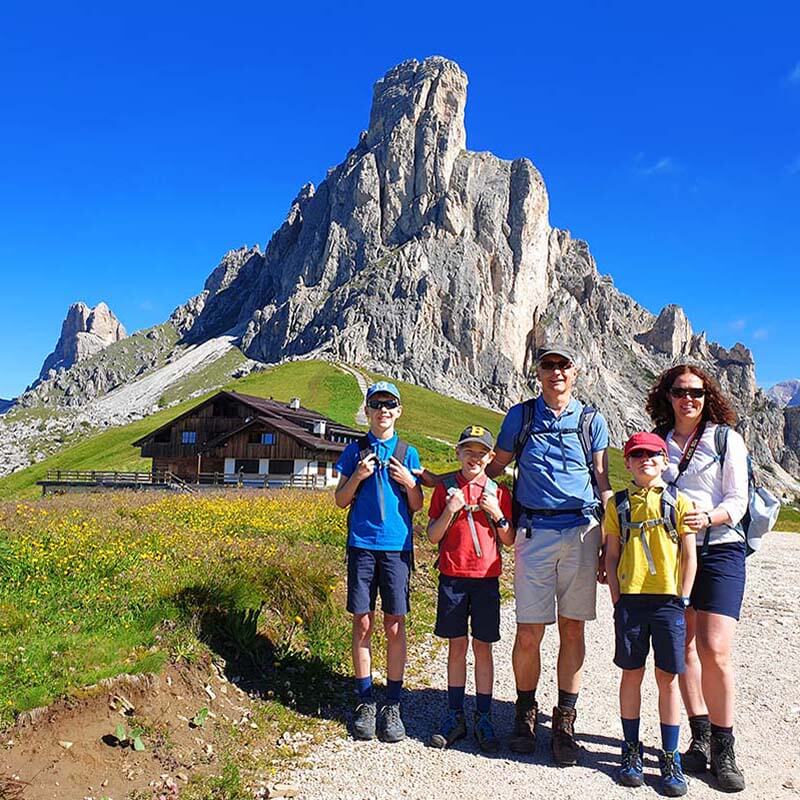
Full Suitcase is a travel website filled with inspiring travel stories, jaw-dropping images, and no-nonsense trip advice.
Established in 2015, Full Suitcase is now one of the world’s leading family travel blogs with millions of readers all over the world.
Our destination guides, trip itineraries, and practical tips will help you MAKE THE MOST OF EVERY TRIP. Check out some of our favorite destinations below or jump straight to our travel destinations page for the complete overview.

Latest from the blog
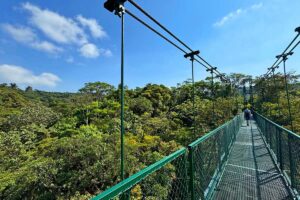
Some of Our Favorite Travel Destinations

More Travel Inspiration
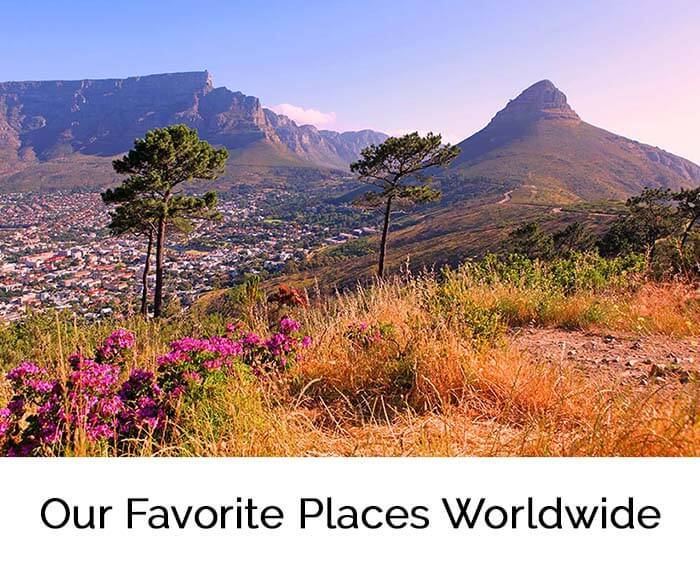
Travel Resources
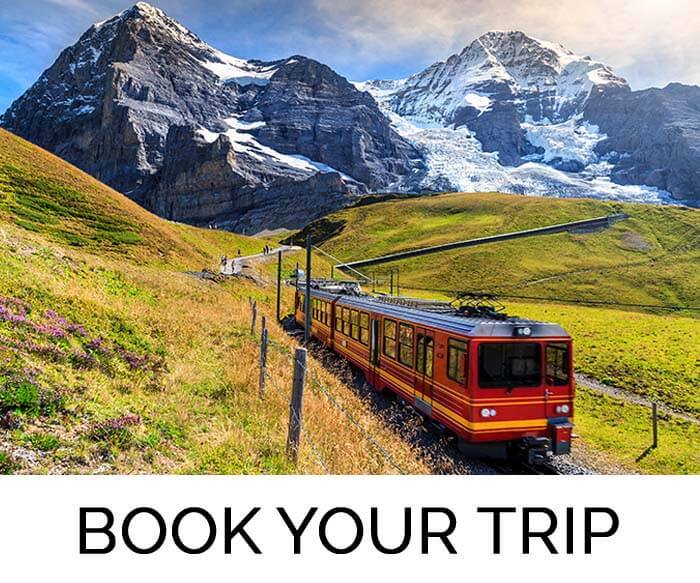
This site uses Akismet to reduce spam. Learn how your comment data is processed .

World’s best hotels for 2024
Stay somewhere award-winning.
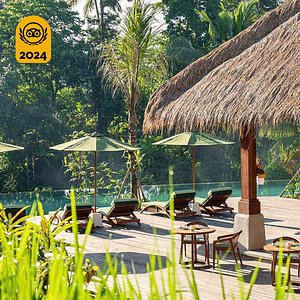
Top experiences on Tripadvisor

More to explore
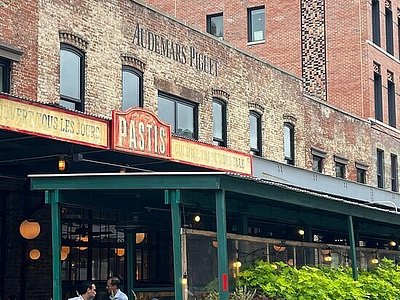
Top destinations for your next vacation
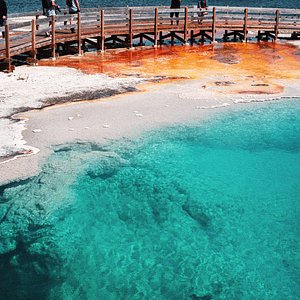
Travelers' Choice Awards Best of the Best
ORIGINAL RESEARCH article
What makes tourist experiences interesting.

- 1 Department of Psychosocial Science, Faculty of Psychology, University of Bergen, Bergen, Norway
- 2 Norwegian School of Hotel Management, Faculty of Social Sciences, University of Stavanger, Stavanger, Norway
Traditional tourist role theory implies that tourists are either novelty seekers or familiarity seekers, while the interaction-hypothesis-of-inherent-interest predicts that interestingness is maximal when novel and familiar elements simultaneously are present in the experience. This paper tests these conflicting theoretical perspectives in three large surveys. In Study 1 ( N = 1,029), both novelty and familiarity seeking tourists were asked about how interesting it would be for them to meet tourists from their home country (familiar) or from a foreign country (unfamiliar), either at home (familiar) or abroad (unfamiliar). Study 2 ( N = 760) asked tourists to indicate the interestingness of well-known (familiar) and unknown (unfamiliar) sights at home (familiar) and abroad (unfamiliar) in familiarity seekers and novelty seekers alike. Study 3 ( N = 1,526) was a field experiment were tourists rated interestingness of familiar and unfamiliar attractions in familiar and unfamiliar surroundings for either themselves or for other tourists. Results show that perceived interestingness of tourist experiences depends on a combination of familiarity and novelty, for both familiarity seekers and novelty seekers. These results therefore are supportive of the interaction-hypothesis-of-inherent-interest; seemingly cognitive factors are better predictors of interestingness of tourist experiences than personality is.
Introduction
Understanding the tourist experience has been a major scholarly task for as long as tourism research has existed. Various social sciences, such as, for example, sociology (e.g., Cohen, 1972 , 1979 ; Crompton, 1979 ; MacCannell, 1999 ; Uriely, 2005 ), social anthropology and ethnology (e.g., Graburn, 1983 ; Yiannakis and Gibson, 1992 ; MacCannell, 1999 ; O’Dell, 2007 ; Selstad, 2007 ), marketing and economics, (e.g., Andersson, 2007 ; Mossberg, 2007 ), and psychology (e.g., Mannell and Iso-Ahola, 1987 ; Pearce and Stringer, 1991 ; Vittersø et al., 2000 , 2001 ; Larsen, 2007 ) have approached the tourist experience under a plethora of headlines, based on different types of data (or, sometimes with no systematic data), with a number of aims and contents, and with rampant methodological flexibility.
But it is still safe to say that tourist experiences are under researched ( Yiannakis and Gibson, 1992 ; Larsen et al., 2007 , 2017 ; Pearce and Packer, 2012 ) and only rudimentarily understood. This may partly be because tourism studies are inherently multi-disciplinary. It may well be that the disciplines do not always understand each other ( Pearce and Packer, 2012 ). Also, disciplines focus on different aspects of “experiences,” levels of analysis differ, methodologies differ, technical terms differ and may imply different meanings, and the social sciences vary concerning what kind of data and research designs are acceptable ( Larsen et al., 2017 ). The way toward a unified theory of tourist experiences seems to be hampered with ontological as well as epistemological problems, both between and within disciplines.
The present paper therefore sets out to test two opposing perspectives on the tourist experience derived from sociology ( Cohen, 1972 ) and cognitive psychology ( Teigen, 1985a , b , c , 1987 ), with the aim of comparing these perspectives in terms of their predictions. On the one hand, the sociological model ( Cohen, 1972 ) predicts that tourists are different from each other in terms of their tourist roles; some tourists are novelty seekers and some are familiarity seekers. On the other hand, the cognitive psychological model ( Teigen, 1985a , b , c , 1987 ) predicts that people, no matter their tourist role orientation, are inherently similar in terms of what constitutes an “interesting tourist experience.” This cognitive model challenges the dichotomy of novelty and familiarity in claiming that general psychological processes underlie the experience of interestingness, not individual differences in tourist role orientations or in tourists’ preferences. Knowledge about which perspective makes the best predictions is inherently important for theory-development within psychology. In addition, if the tourist industry has sound knowledge of what the generic aspects of interestingness are, then customization of tourist products and services may be improved ( Larsen, 2007 ).
Literature Review
Traditional tourist role theory (e.g., Cohen, 1972 , 1979 ; Snepenger, 1987 ; Yiannakis and Gibson, 1992 ; Mo et al., 1993 ) maintains that familiarity and novelty are opposites on a preference continuum. According to this model, tourists are either predominantly novelty seekers or predominantly familiarity seekers. Cohen (1972) emphasizes that tourists can be classified according to their degree of institutionalization. The “drifter,” who is characterized by his/her experimental mode of traveling which highlights his/her seek for novelty in relative strange environments, is the most independent of all the tourists in Cohen’s taxonomy, while the least novelty seeking tourist in this scheme is the “institutionalized mass tourist.”
In another seminal paper, Cohen (1979) once more proposes a descriptive scheme where five types of tourist groups are suggested. Such groups represent a number of modes of experiences which allocate individuals in segments of tourists varying from those who are mere recreation seeking to those who search for an existential meaning based on a hypothesized “center” which in one way or another resides in peoples’ minds. Snepenger (1987) and Mo et al. (1993) found some support for Cohen’s (1972) model, while Yiannakis and Gibson (1992) also found empirical evidence for the four roles of the Cohen (1972) scheme, in addition to several other tourist roles. Lepp and Gibson (2003) stated that tourists can be classified according to the degree of novelty and familiarity sought, thus highlighting that novelty seeking constitutes a motive in itself. In this line of thinking, the motive of novelty seeking represents the opposite of the familiarity seeking motive. Similar perspectives can be found in many publications within the literature on tourist roles and tourist motivation (e.g., Crompton, 1979 ; Gilbert, 1991 ; Yiannakis and Gibson, 1992 ; Elsrud, 2001 ; Lepp and Gibson, 2003 ).
A more recent study Hwang and Hyun (2016) found that luxury cruise passengers’ perception of cruise lines’ innovativeness (which can be seen as a proxy for novelty) is an important factor influencing various aspects of cruise travelers’ experience in the luxury market. Li et al. (2015) found that sensation seeking was a personality characteristic impacting tourist roles in as much as they asserted that sensation seekers would be more inclined to become independent tourists. These results imply that from the tourist role perspective, people are inherently different from each other in systematic ways that allows for the segmentation of customers according to a psychographic scheme ( Snepenger, 1987 ). The tourist role perspective therefore predicts that tourists are either inclined to be novelty (sensation) seekers or familiarity seekers ( Mo et al., 1993 ).
The interaction-hypothesis-of-interest however states that inherent interestingness of a given situation will be maximal for everyone when novel and familiar elements are present at the same time ( Teigen, 1987 ). In other words, this theory predicts that no matter the personality of the tourist, interestingness is a function of interpretations of the stimulus situation, in our case the tourist destination, the tourist attraction or more generally the tourists’ on-line experience. In a series of experiments, Teigen addressed informativeness of verbal information ( Teigen, 1985a ), preferences for news as a function of familiarity ( Teigen, 1985b ), sources of interest in verbal information ( Teigen, 1985c ), and the interaction of novelty and familiarity for intrinsic interest ( Teigen, 1987 ). These experimental studies jointly demonstrated that inherent interest is a function of the interplay of novelty and familiarity. For example, subjects expressed more interest for news about familiar themes than unfamiliar themes, and they preferred to learn news about familiar countries more than about unfamiliar countries. In addition, in the third experiment reported by Teigen (1987) , the focus was on a social encounter; that is, meeting a (familiar/non-familiar) tourist on a destination, which varied on the familiarity/non-familiarity dimension. Results indicated that the less familiar the imagined destination was, the stronger the subjects preferred meeting familiar others. In a similar vein of thinking, Yiannakis and Gibson (1992) hinted that “the location of a particular tourist role… indicates the optimal balance of stimulation-tranquillity, familiarity-strangeness and structure-independence” (p. 299), but their data were used to locate individuals to various tourist roles in a multidimensional space. It was in other words the tourists who were allocated to various roles, not the generic aspects of the experience that was studied.
Surprisingly, Teigen’s (1985a , b , c , 1987) studies have not had much impact on the academic tourism literature (with the exception of Noone et al., 2009 ). This may partly be due to the fact that Teigen’s work was published in generic psychology journals. Such journals are seemingly not often consulted by tourism scholars, maybe because these journals are considered to be too technical, too limited in scope, too often based on experimental data (which some tourism scholars even judge to be of little value), and too generic and thus of limited relevance for the interdisciplinary studies of tourism and tourists. But, as Pearce and Packer (2012) underline “…the breadth and intense scrutiny of human behaviour and experience undertaken within psychology” (p. 386) represents a vast resource and a challenge for tourism scholars, a standpoint which is in line with the assumptions underlying the current study.
Research Aims
The present research represents an attempt at testing the predictions of tourist role theory against the predictions of the interaction hypothesis of inherent interestingness. While tourist role theory predicts that people are inherently different from each other in what makes experiences interesting for them, the interaction hypothesis predicts that interestingness is a function of aspects of the experience, no matter who the individual is. Figure 1 shows the predictions made by these two theoretical perspectives.
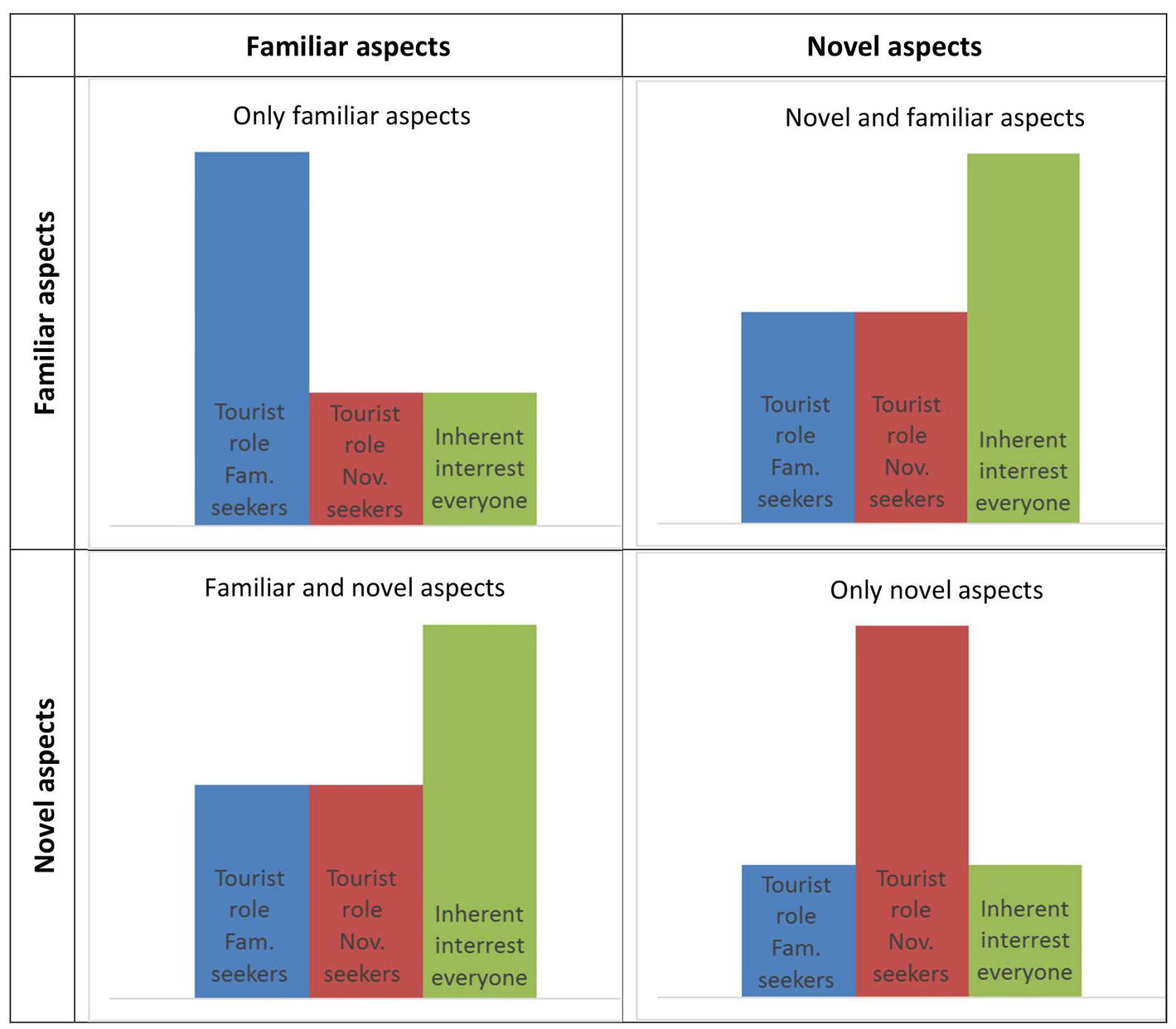
Figure 1 . Predictions of interestingness by tourist role theory and interaction hypotheses.
As can be seen from Figure 1 , predictions are opposite in these two perspectives. Tourist role theory predicts that situations containing a combination of high and low familiarity will be least interesting for both familiarity and novelty seekers, while the interaction perspective predicts that it is exactly these two conditions that will be the most interesting for all tourists. Consequently, it seems reasonable to put these two perspectives to the test: which makes the best predictions?
Three studies were undertaken. The studies were designed so that tourist role theory and inherent interest hypothesis would predict differential outcomes. Study 1 tested whether novelty seekers prefer to meet foreigners abroad (maximum novelty) while familiarity seekers prefer to meet compatriots at home (maximum familiarity), or whether all tourists prefer to meet compatriots abroad and foreigners at home (combination of novel and familiar stimuli). Study 2 validated the concept of interestingness. In addition, Study 2 planned to replicate the finding in Study 1 concerning preferences of tourists with various tourist role orientations. In Study 3, an attempt was made at removing tourists’ self-perception as being less institutionalized and more novelty seeking than other tourists ( Prebensen et al., 2003 ; Doran et al., 2018 ) from the responses. Therefore it was hypothesized that when judging what is interesting for other tourists, tourists would judge a combination of novelty and familiarity of the experience to be most interesting and attractive.
Study 1: Interestingness of Social Interaction
In accordance with the predictions of the interaction hypothesis of inherent interest, in Study 1, it was hypothesized that tourists would find it more interesting to meet a compatriot in an unknown place than in their home country. It was also expected that meeting a foreign tourist would be more interesting in a more familiar setting. We also tested whether tourists high on the novelty seeking motive differed from those low in this motive in terms of what they judged interesting in social encounters, which is the prediction of tourist role theory.

Materials and Methods
Following the procedures indicated by Larsen et al. (2011) , tourists were approached in “low threshold” places; that is, spaces that many tourists would “want to visit… and that none would be excluded for resource reasons, e.g., disabilities, high prices etc.” (p. 695), such as, for example, Mount Fløyen, the Tourist Information Office and the Fish Market in Bergen. Potential respondents were asked if they were on vacation, and if so, if they would be willing to fill in a questionnaire concerning “various aspects of being a tourist.” The questionnaire was two pages long, and it took some 5 min to fill it in. Standard background questions, such as age, gender, and nationality, were asked, in addition to focus questions where novelty and familiarity were manipulated (high and low familiarity of place and of social interaction). No monetary or other compensation was given for participation.
Questionnaire
Inherent interest was measured by asking participants how interesting it would be for them to meet a tourist from Norway in “your home country,” Norway, Spain, Australia, and China, all measured on 7-point scales anchored by “Not interesting” (1) and “Very interesting” (7). To distinguish between familiarity and novelty seekers , three items addressing preference for “unorganized” and “organized” trips were used in accordance with the assumptions of Cohen’s tourist role scheme ( Cohen, 1972 , 1979 ). The items had the following form; “When I travel to…” (1) “…an exotic destination for the first time I prefer,” (2) “…to an exotic destination I have visited before I prefer,” and (3) “…to a destination I know well from before I prefer.” The preferences were indicated on 7-point scales anchored by “Unorganized individual trips” (1) and “Organized group trips” (7). The three items were treated as a scale ( α = 0.78), and the quartile of the respondents scoring lowest on the scale were categorized as novelty seekers ( n = 289), while the respondents with scores on the upper quartile ( n = 271) were grouped as familiarity seekers. The remaining respondents ( n = 469) scored in the mid-category (neither novelty nor familiarity seekers) and were thus excluded from the analyses concerning differences between novelty and familiarity seekers.
Participants
Of some 1,200 approached tourists, 1,029 agreed to fill in the questionnaire. The respondents represented 52 nations, 49.1% were female and 49.1% male (1.8% did not answer the gender item). In addition to participants from countries investigated by questionnaire items concerning the target issues, respondents from countries with more than 40 respondents (i.e., USA, Germany, the United Kingdom, the Netherlands) were also included in the data analysis.
Table 1 shows how interesting tourists from Scandinavia (i.e., Norway, Sweden, and Denmark), Spain, Australia, China, USA, Germany, the United Kingdom, and the Netherlands would find it to meet tourists from their home country in their home country, in Norway, in Spain, in Australia, and in China. As can be seen from Table 1 , tourists tend to judge meeting compatriots more interesting the further away (culturally and geographically) they are from their home country. Norwegian tourists, for example, judge meeting a Norwegian (high familiarity) to be significantly more interesting in China or Australia (high novelty) than in Norway (high familiarity) and Spain (moderate familiarity). Australian respondents indicate that it would be more interesting to meet Australians (high familiarity) abroad (high novelty) than at home (high familiarity). Similarly, Chinese tourists find Chinese tourists (high familiarity) more interesting abroad (high novelty) than at home (high familiarity). And the same is generally true for all the groups; the least interesting place to meet a compatriot is at home, the most interesting place to meet a person from ones’ home country is in a remote place, no matter what the home country of the individual tourist may be. This finding is stable over all nationalities and indicates that for tourists, familiarity of the place does not work well with familiarity of the social interaction, and vice versa, that high novelty of the place does not work well in harmony with high novelty of the social encounter.

Table 1 . Interestingness a of meeting a tourist from one’s home country in various countries [scale: 1 (not interesting) – 7 (very interesting), mean scores, ±SD].
Table 2 shows that when the question was framed as meeting a Chinese tourist in various destinations (Norway, Spain, Australia, and China), the pattern is exactly opposite for all groups of respondents. Norwegians tend to judge meeting Chinese (low familiarity) in Norway (high familiarity) the most interesting. The same pattern emerges in the tourists from all other countries as well; Chinese tourists (high novelty) are thought of as being most interesting to meet in the tourists’ own home countries (high familiarity), but less interesting in China. In other words, the more remote the place in terms of distance or culture, the more interesting it will be to meet someone “more familiar,” and the more familiar the place is in terms of culture and distance, the less interesting it will be to meet familiar other tourists. Tourists in general it seems, prefer to meet compatriots and not local people when they travel to foreign countries that are new to them.

Table 2 . Interestingness a of meeting a tourist from China in various countries [scale: 1 (not interesting) – 7 (very interesting), mean scores, ±SD].
The second issue, whether familiarity seekers and novelty seekers differ from each other in terms of their preference for novelty and familiarity of social encounters was examined by using the top and bottom quartiles in the distribution of the scale measuring preferences for novelty and familiarity.
Figure 2 exhibits an extrapolation of some of the very complex data concerning the mixture of familiarity and novelty of social encounters (Chinese and Norwegian respondents are for logical reasons removed from Figure 2 ). As can be seen, there are no differences in the preference structure concerning social encounters – both familiarity seekers and novelty seekers find it significantly more interesting to meet Norwegians (unfamiliar) at home (in a familiar place) than in Norway (unfamiliar place). At the same time, familiarity seekers and novelty seekers both find it more interesting to meet compatriots (familiar) in Norway (unfamiliar) than at home (familiar). The same holds true for meeting Chinese tourists; both familiarity seekers and novelty seekers judge meeting Chinese (unfamiliar) at home (familiar) more interesting than meeting Chinese (unfamiliar) in China (unfamiliar). It seems like all tourists, those who classify themselves as novelty seekers and those who are inclined to perceive themselves as familiarity seekers alike show the same structure of preferences for social encounters in familiar and unfamiliar settings.
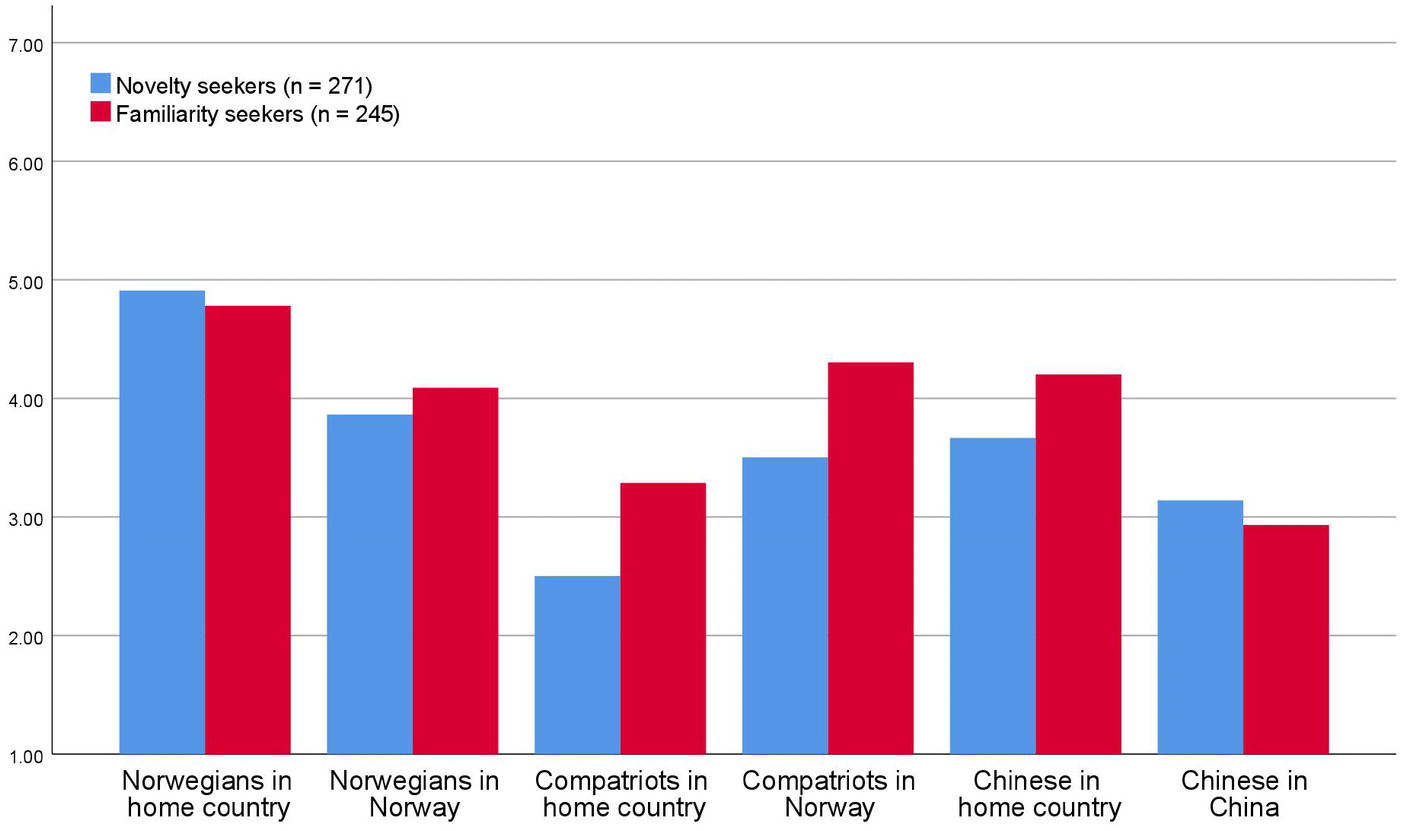
Figure 2 . Interestingness of social encounters with locals and compatriots in novelty and familiarity seeking tourists [scale 1 (low interestingness) – 7 (high interestingness)].
Results from Study 1 give support to the interaction hypothesis of inherent interestingness for social encounters during tourist trips. Tourists seemingly prefer to meet compatriots abroad and foreigners at home. This appears to be true for both familiarity seekers and novelty seekers alike and for tourists from all countries. Since it was somewhat surprising that familiarity seekers and novelty seekers showed the same preference structure, Study 2 focused on whether novelty seekers and familiarity seekers demonstrate similar preference structures in other types of tourist experiences than social encounters. This issue is consequently addressed below.
Study 2: Interestingness of Attractions in Familiarity and Novelty Seekers
Study 2 follows up the intriguing finding that novelty seekers and familiarity seekers report the same structure concerning interestingness reported in Study 1. Three measures of interestingness were used; “willingness to pay,” “attractiveness,” and “interestingness” with reference to four different conditions in a within subjects design; (1) unknown sights in a known place (home), (2) known sights in a known place (home), (3) unknown sights in a unknown place (away from home), and (4) known sights in an unknown place (away from home). Interestingness should correlate moderately highly with tourists’ willingness to pay for the experience and with their judgment of the attractions’ attractiveness. Based on the results from Study 1, it was hypothesized that tourists will judge the interestingness of tourist attractions to be the highest for known, i.e., familiar attractions in unknown destinations and for less known attractions in known settings, and lowest for known attractions in known destinations and unfamiliar attractions in unfamiliar places. Based on the results from Study 1, it was further expected that familiarity seekers and novelty seekers would demonstrate the same preference structures.
Potential respondents were approached in “low threshold” places and asked if they were on vacation. If the potential participant answered this question in the affirmative, they were asked if they would be willing to fill in a questionnaire concerning various “aspects of being a tourist.”
The questionnaire was four pages long, and it took some 10 min to fill it in. Standard background questions, such as age, gender, and nationality, were asked. Tourist role orientation was measured using the 16-item version ( Jiang et al., 2000 ) of the International Tourist Role Scale (ITR; Mo et al., 1993 ), a scale developed in order to empirically asses Cohen’s (1972) tourist role typology. In the present context, only the subscale measuring preference for familiarity when choosing a travel destination was used. Four scenarios describing novel and familiar aspects of places and sights were constructed. Respondents indicated interestingness (attractiveness/willingness to pay) for each of the scenarios (“hidden treasures in your hometown,” “famous landmarks in your hometown,” “hidden treasures in a town you visit for the first time,” and “famous landmarks in a town you visit for the first time”). All items were on 7-point scales anchored by “Not interesting” (or “attractive”/“no willingness to pay”) and “Very interesting” (“attractive”/“willing to pay”). No monetary or other compensations were given for participation.
Of some 820 approached tourists, 762 agreed to fill in the questionnaire. The respondents represented 57 nations, 52.8% were female and 47.1% male (1 person did not answer the gender item). Mean age was 41 years (SD = 17.3).
Interestingness correlated highly with both attractiveness and willingness to pay ( r ranges between 0.59 and 0.82) in all the four scenarios. Thus, it was decided that interestingness could be operationalized as a scale consisting of the three items measuring interestingness, attractiveness, and willingness to pay. This scale yielded Chronbach’s α for Scenario 1 (familiar place novel sight) = 0.86, Chronbach’s α for Scenario 2 (familiar place/familiar sight) = 0.87, Chronbach’s α for Scenario 3 (novel place/novel sight) = 0.90, and Chronbach’s α for Scenario 4 (novel place/familiar sight) = 0.91. This allows for construction of four interestingness scores with reference to the four scenarios.
In line with predictions from the interaction hypothesis, results indicated that tourists, when thinking about their hometown, in general report that they would find it more interesting to see unfamiliar (novel) sights than familiar sights (home: mean (familiar/familiar) = 3.11, mean (novel/familiar) = 3.38, t = 6.78, p < 0.001). At the same time, and contrary to the predictions of the interaction hypothesis of inherent interest, tourists reported that in unfamiliar (novel) places, they would find unfamiliar sights more interesting than well-known attractions in these places (away from home: mean (novel/novel) = 4.85, mean (familiar/novel) = 3.75, t = 3.17, p < 0.005). This structure of responses fits with the predictions made in traditional tourist role theory for novelty seekers , but not for familiarity seekers.
Therefore, the second question in Study 2 was whether familiarity seekers and novelty seekers differ from each other in terms of what they judge to be interesting. Figure 3 shows that familiarity seekers and novelty seekers exhibit practically the same preference structure concerning the combination of novelty and familiarity. A one-way ANOVA, using novelty/familiarity seeking (the 25% of the respondents scoring the highest and the lowest on novelty seeking) as a grouping variable showed that familiarity seekers had significantly higher preference for familiar sights in familiar settings (home), but no other differences between the groups were observed concerning degree of interest in any of the scenarios. Home/familiar : mean (familiarity seekers) = 3.36, mean (novelty seekers) = 2.85, F (1,325) = 6.26, p < 0.05; home/novel : mean (familiarity seekers) = 3.36, mean (novelty seekers) = 3.30, F (1,324) = 0.11, p = 0.74; away from home/familiar : mean (familiarity seekers) = 4.86, mean (novelty seekers) = 4.62, F (1,325) = 1.78, p = 0.18; away from home/novel : mean (familiarity seekers) = 4.81, mean (novelty seekers) = 4.81, F (1,325) = 0.001, p = 0.98. In other words, novelty seekers and familiarity seekers express the same degree of interest for the various combinations of novelty and familiarity of sights in unfamiliar settings, but familiarity seekers have a higher preference for familiar sights in familiar places.
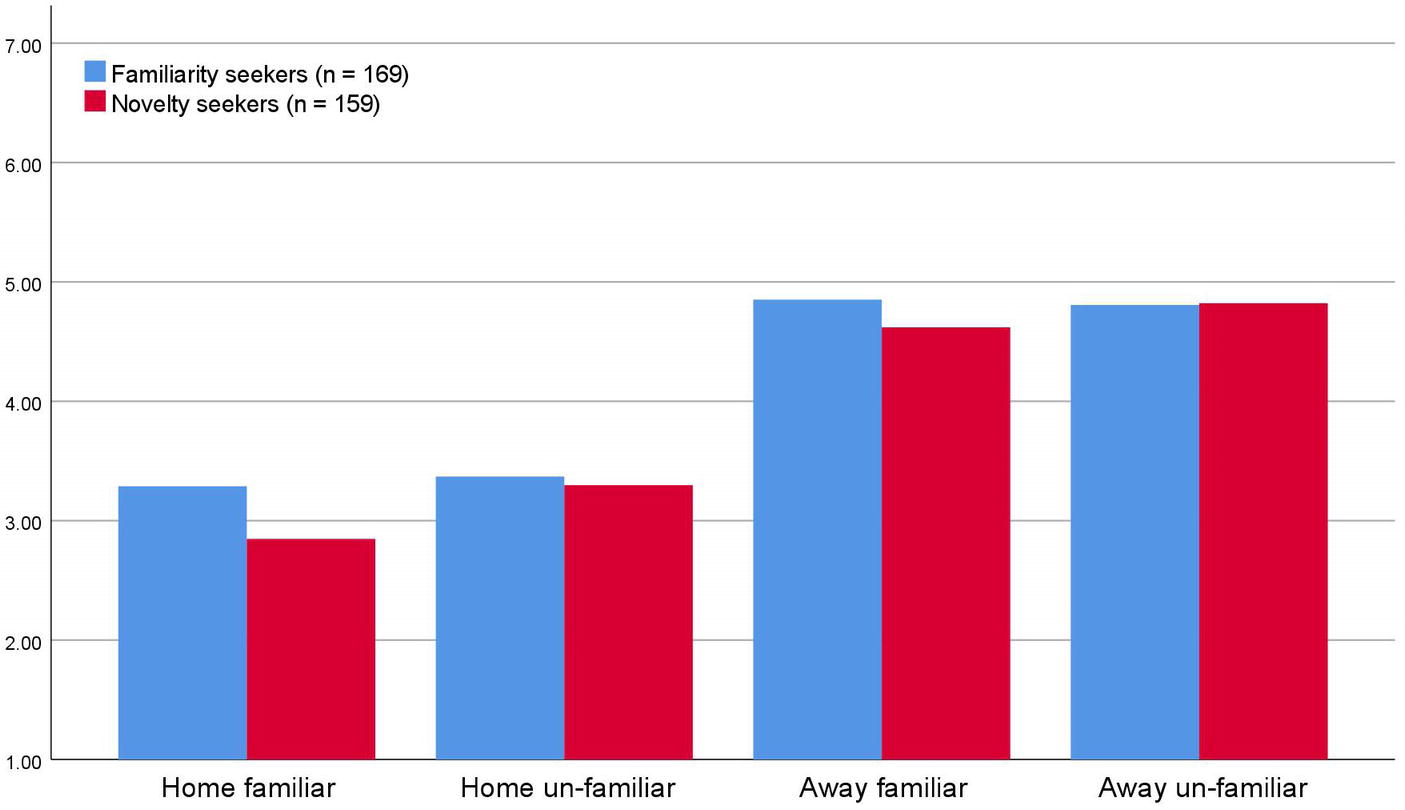
Figure 3 . Novelty seekers and familiarity seekers preferences for combinations of novelty and familiarity [scale 1 (low interestingness) – 7 (high interestingness)].
The first results from Study 2 are ambiguous in as much as respondents judge unfamiliar sights most interesting in both familiar and unfamiliar settings. Seemingly, people think of themselves that they to a large extent are novelty seekers, and that what attracts their interest is novelty more than familiarity. One reason for this may be that what attracts ones attention in familiar situations may be if there is something new in that situation, and that people, when they travel, tend to note what is different (novel) in the situation and not what is known. For example, if one is a first time visitor to a country and eats a salad (a well-known activity for most people), the ingredients or the toppings may be different from what one knows from home, and therefore people may notice this difference, not the fact that salad-eating is a well-known activity. This may lead people to conclude that they are attracted to, indeed find the novel taste the most interesting, which in turn may result in distorted self-perceptions of oneself as a person who not only likes, but is attracted to novelty (c.f., Teigen, 1987 ).
This interpretation is supported by the second finding in Study 2, which reveals that familiarity seekers and novelty seekers demonstrate similar preference structures concerning what constitutes an “interesting experience” – a result replicating the results in Study 1. Actually, this result indicates that tourists think about themselves that they are highly interested in novelty, not in familiarity. This represents a major methodological problem; how can the illusion that people apparently have of being predominantly interested in highly novel (exotic) sights and places be removed from the measuring of interestingness? Study 3 represents an attempt to extract this self-perception from peoples’ responses.
Study 3: Interestingness for Typical Tourists
The results of Study 2 inspired a follow up study with the aim of focusing on what tourists think other tourists judge to be interesting. The study was a between subjects field experiment were tourists were randomized into either answering with reference to themselves as tourists or with reference to what they thought other tourists would find interesting. This was done for two reasons; first, it aimed at avoiding the confounding self-perception of being a person who is not a typical tourist ( Prebensen et al., 2003 ; Doran et al., 2015 , 2018 ), or indeed a better than average person ( Alicke and Govorun, 2005 ; Brown, 2012 ). Second, the aim was to study and compare how the “self as tourist”-image and the perception of other tourists concerning our relevant parameters differed. It was expected that tourists would think that other tourists are more inclined to prefer familiar sights in novel settings than themselves. At the same time, it was expected that tourists would think of themselves as being significantly more interested in novel sights and experiences in unfamiliar settings than they would judge other tourists to be.
Potential respondents were approached in “low threshold” places and asked if they were on vacation. If this initial question was answered in the affirmative, the tourists were asked if they would be willing to fill in a questionnaire concerning various “aspects of being a tourist.”
The questionnaires were four pages long, and took some 10 min to fill in. Trained research assistants distributed the questionnaires. Standard background questions, such as age, gender, and nationality, were asked, in addition to several items concerning various aspects of being a tourist. Respondents were randomized into four groups answering four versions of the questionnaire. The randomization procedure was that the questionnaires were distributed in a prefixed order securing that every participant had an equal probability of receiving any version of the questionnaire. Version 1 asked about the attractiveness of known and unknown sights in Norway and in the respondents home country; Version 2 asked about the attractiveness of named familiar (Edvard Grieg’s house) and unfamiliar (Amalie Skram’s house) sights in Bergen and (unnamed) familiar and unfamiliar sights in the respondents’ home town. In Version 3, respondents were asked to rate the interestingness of familiar and unfamiliar sights in Norway or in the respondents’ home country, and in Version 4, respondents were asked to rate the interestingness of named familiar and unfamiliar sights in Bergen and unnamed familiar and unfamiliar sights in their home town. Ratings were done on a 7-point scale anchored by “Not at all attractive” (or “Not at all interesting”) and “Very attractive” (or “Very interesting”).
About half of the respondents ( n = 747) were asked to rate themselves as tourists with reference to novelty and familiarity of landmarks and sights. The first item was meant to tap interestingness of familiar sights and had this wording: “As a tourist, I visit famous landmarks instead of exploring unknown sights.” The second item aimed at extracting interestingness of unfamiliar (novel) sights and had the following wording: “As a tourist I visit unknown sights instead of exploring famous landmarks.” The remaining half ( n = 751) of the respondents answered the same questions with reference to “typical first time tourists.” The wording in this version was “Tourists typically visit famous landmarks…” and “Tourists typically visit unknown sights…” Both groups indicated their response on a 7-point scale anchored by “Don’t agree at all” (1) and “Strongly agree” (7).
Of some 1,650 approached tourists, 1,516 agreed to fill in the questionnaire. The respondents represented 43 nations, 51.6% were female and 48.4% male. Mean age was 47.7 years (SD = 17.91).
Figure 4 shows that respondents, when asked what they think typical first time visitors to their home country and home town find attractive or interesting, it is the country’s or home town’s most well-known attractions that are judged to be both attractive and interesting to a significantly higher degree than less well-known sights and attractions. Tourists seem to think that “typical first time tourists” visiting their own home towns and home countries are indeed interested in the familiar and famous and not in the less famous and novel sights.
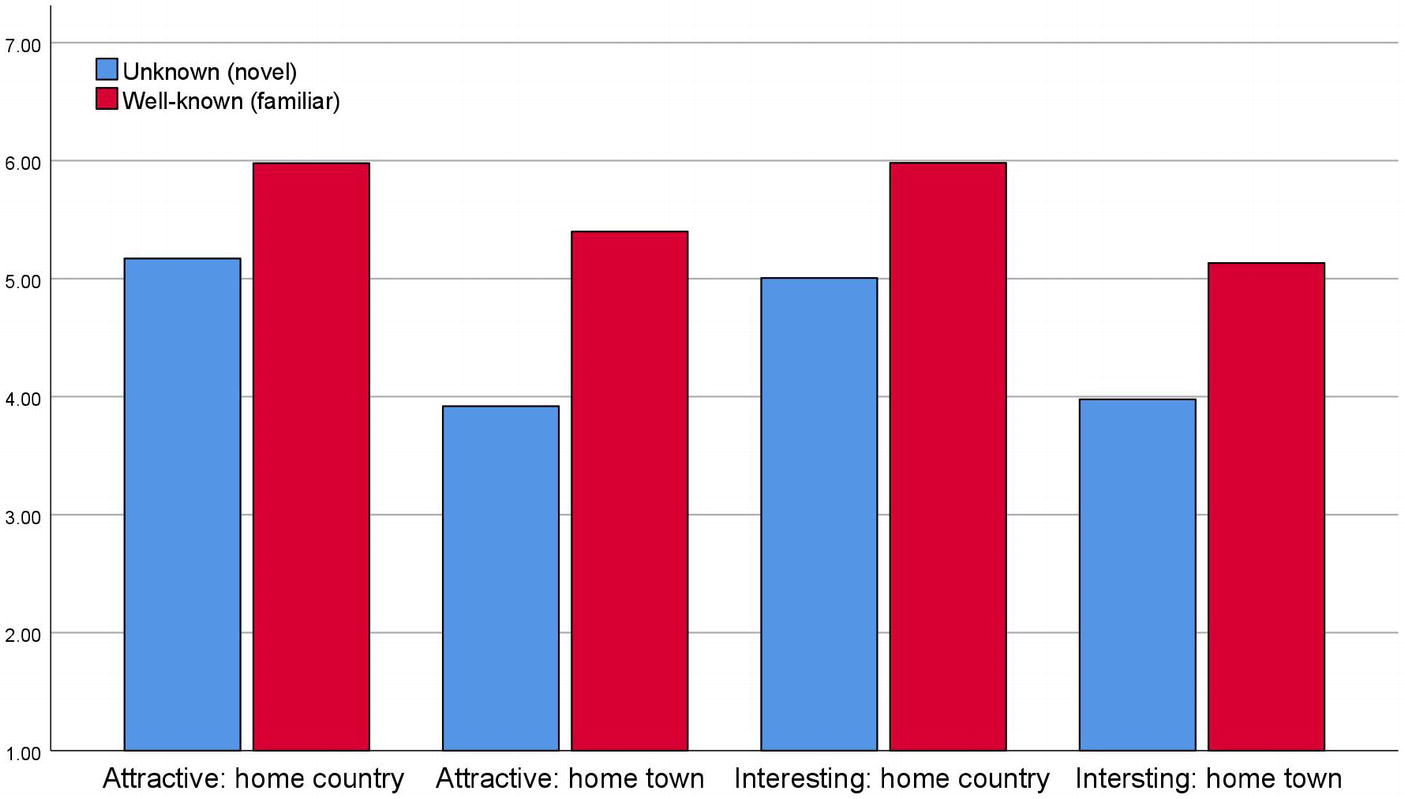
Figure 4 . Attributed attractiveness and interestingness for novel and familiar attractions in home country and home town [scale 1 (low attractiveness) – 7 (high attractiveness)].
When asked about tourists to Norway and Bergen, respectively, the same pattern appears as is evident from Figure 6 . Tourists think that other “typical first time tourists” to Norway and Bergen are mostly attracted to well-known (familiar) sights and less to unknown (novel) sights. Similarly, the respondents stipulate that typical first time visitors find famous landmarks and sights more interesting both in Bergen and in Norway.
It is probably noteworthy from Figures 4 , 5 that “home town” (and “Bergen”) both seem to be less attractive and interesting than “home country” and “Norway” alike.
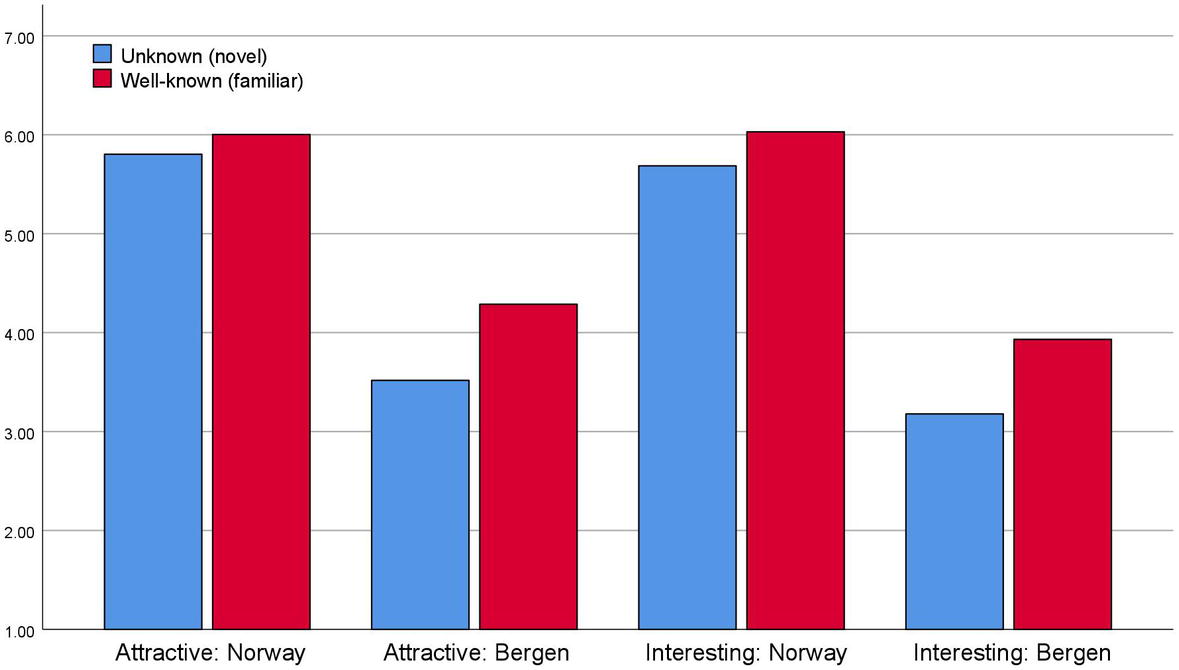
Figure 5 . Attributed attractiveness and interestingness for novel and familiar attractions in Norway and Bergen [scale 1 (low attractiveness) – 7 (high attractiveness)].
As can be seen from Figure 6 , respondents think that “tourists” find familiar landmarks significantly more interesting than novel (unfamiliar) attractions (mean tourists (familiar landmarks) = 5.70, mean tourists (novel attractions) = 2.96, t = 35.02, p < 0.001). Also, as is evident from Figure 6 , tourists report that they are themselves more interested in familiar than novel aspects of experiences (mean self (novel attractions) = 3.82, mean self (familiar attractions) = 4.21, t = 4.51, p < 0.001).
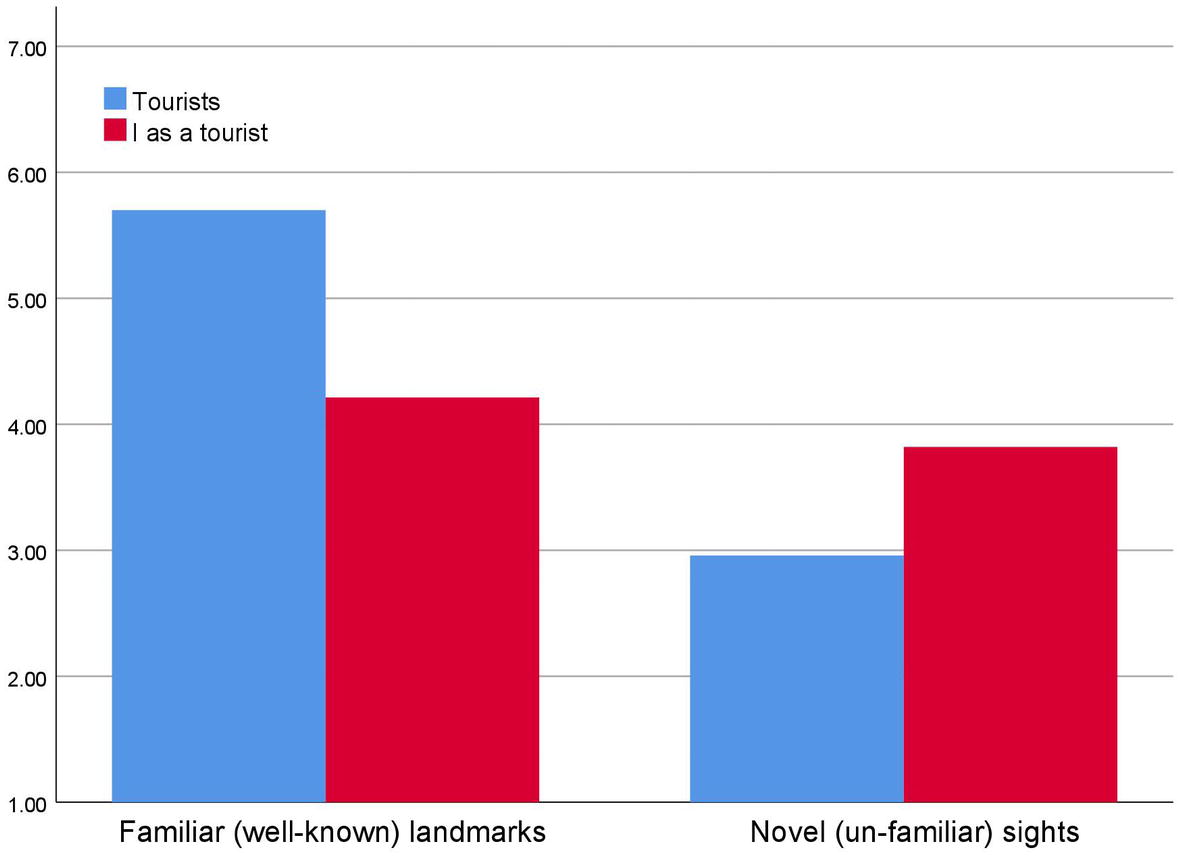
Figure 6 . Interestingness of novel and familiar sights and attraction for “tourists” and for “me as a tourist” [scale 1 (low interestingness) – 7 (high interestingness)].
None the less, calculating the discrepancy score between expressed interestingness of familiarity and expressed interestingness of novelty yields an estimate of netto interestingness of novelty. Comparing the means of these discrepancy scores show that respondents to a significantly higher degree estimate that tourists are interested in familiarity than in novelty as compared to themselves in their roles as tourists (mean tourists (net interestingness of familiarity tourists) = 2.74, mean self (net interestingness familiarity) = 0.39, F = 403.08 (1,472) , p < 0.001). This reflects that tourists think of themselves that they find novelty significantly more interesting while visiting places for the first time than what they judge other tourists to find. Respondents think that “typical first time tourists” find familiar sights to be significantly more interesting and novel sights to be significantly less interesting. One tends to think that tourists (not me) on their first time visit find it most interesting to look up well-known (familiar) sights, while the most uninteresting for such tourists are novel sights.
Results in Study 3 show that people think that typical first time visitors to unknown places will find well-known attractions to be most interesting and attractive. In addition, results indicate that people, when they are tourists, think that they are distinctly different from “typical first time visitors” in what they judge to be interesting. People think of other tourists that they look for well-known sights and hallmarks in new places, thus combining familiarity (well-known) and novelty (unknown) in construing the interestingness of a tourist experience. At the same time, people seem to think about themselves that they are significantly more balanced in what they would find interesting and attractive, and significantly less inclined “just to go for the tourist attractions.” This bears a resemblance to earlier findings indicating that people do not see themselves as “typical tourists” ( Prebensen et al., 2003 ; Larsen and Brun, 2011 ; Doran and Larsen, 2014 ; Doran et al., 2015 , 2018 ). Based on these results, one could actually suggest that this tendency is generic and applies over a range of tourist related behaviors, emotions, and cognitions. But most of all, results from Study 3 indicate that tourists think that other tourists look for familiarity while they think of themselves that they prefer an optimal blend of novelty and familiarity in their quest for interesting experiences.
General Discussion and Conclusions
Study 1 revealed that tourists in general prefer to meet compatriots and not local people when they travel to countries that are unknown to them. At the same time, people prefer to meet un familiar people in more well-known settings. This was found to be true for novelty seekers and familiarity seekers alike. Study 2 revealed that tourists tend to think of themselves that they are novelty seekers and that they think of themselves that they prefer more exotic over less exotic experiences. Just like in Study 1, results from Study 2 indicated that the preference structures were similar in novelty seekers and in familiarity seekers alike. Results from Study 3 demonstrate that tourists think of other tourists that they are mostly interested in familiar sights in novel situations. Results from Study 3 also indicate that tourists think that other tourists are much more familiarity seeking than they are themselves in novel places.
The starting point of the present study was to test the predictions of traditional tourist role theory and those of the interaction hypothesis of inherent interest, as shown in Figure 1 . It is evident from the results that the interaction hypothesis gets substantially more support than the tourist role perspective in the current material. This result is fascinating, since the cognitive model is virtually non-existent in the tourism literature, and at the same time, the tourist role orientation perspective has been highly influential in that same literature. This leads to a few thought-provoking preliminary conclusions that can be drawn on the basis of the joint findings of the three studies reported in the present paper.
The first conclusion is that the well-known platitude from general psychology, that people do not know what causes them to feel, think, and behave ( Flanagan, 1991 ) seems to hold true also within the realm of inherent interest of tourist experiences. Seemingly, people think of themselves as not being familiarity seekers; they rather tend to think that they are novelty seekers. But, the results in the present series of studies also indicate that inherent interest in various situations seems to be a function of both familiarity and novelty just as predicted from the interaction hypothesis and documented in several earlier experiments from the psychology laboratory ( Teigen, 1985a , b , c , 1987 ). One explanation why people think they are mostly interested in novelty may be that people overlook familiar aspects in situations containing something novel. This, in turn, may lead to screwed perceptions of oneself as a novelty seeker. In addition, this self-construal may lead to distorted memory processes; one will tend to remember the novel and not the mundane aspects of tourist experiences. It is well-known form the memory literature that for autobiographical memories, stimuli containing emotional arousal, i.e., novel stimuli ( Talarico et al., 2004 ; Gilboa et al., 2018 ) are those that will be remembered most vividly. This implies that people do not know what makes things interesting for them and they do not know why particular experiences are more attractive than other experiences. Thinking that novel experiences are the most interesting ones may just be a memory distortion.
Another preliminary conclusion also emerging from the data is that although most tourists seem to think about themselves that they are novelty seekers, most people still prefer an optimal balance of novelty and familiarity in their tourist experiences. Actually, no differences were found between self-proclaimed novelty seekers and self-proclaimed familiarity seekers in terms of their preference structures: novelty seekers and familiarity seekers demonstrated parallel preference structures. This may imply that segmentation of people based on self-proclaimed preferences of novelty and familiarity may be futile. But even more importantly, these findings might also imply that classical tourist role theory is less feasible than thought by many tourism researchers. It is of course true that people travel for many reasons, but the idea that people travel to explore novel situations, unknown cultures, and unknown people do not seem to be completely true. Au contraire, based on the results from the present study, novelty seeking cannot be judged to be an exclusive and true motive for traveling neither for novelty seekers nor for familiarity seekers.
The third conclusion that may be drawn from the present study is that people, when traveling as tourists, tend not to think that they are like “other tourists.” This, of course is well-known from the literatures of both psychology and tourism research. Psychologists have, for example, amply documented the so-called “optimistic bias” ( Weinstein, 1989 ) and the “better than average effect” ( Alicke and Govorun, 2005 ; Brown, 2012 ) over a large range of domains, such as, for example, smoking ( Arnett, 2000 ) and other health risks ( Weinstein, 1987 ). It seems that people tend to think that they are unique in the sense that they are less likely to suffer negative outcomes and more likely to experience positive future outcomes, and that they fall prey to thinking that they perform better or have better abilities than average persons. Along similar ways of reasoning, Prebensen et al. (2003) reported that 89.5% of their sample of German tourists to Norway reported that they were not “typical German tourists”, while Larsen and Brun (2011) observed that tourists judged other tourists to be more at risk than themselves. Similarly, Doran et al. (2015) found that tourists asserted that they were not similar to other tourists in terms of their motivations, and Larsen et al. (2007) found that people tend to judge home country to be safer that abroad no matter what home country people come from. One possible interpretation of these findings is that people seem to find an optimal distance between their own self-perception and what they think other tourists represent in terms of many aspects of the tourist experience. It may well be that the search for familiarity is a sign of “typicality” in touristic terms, but it may equally well be that many, if not all tourists fall prey to the cognitive distortion of not being a typical novelty seeker. Seemingly, the pervasiveness of preference for familiarity in novel situations and novelty in familiar situations is a common characteristic of many, if not all tourists.
In sum, the present series of studies give stronger support for the cognitive interaction hypothesis of inherent interestingness then for the predictions of classical tourist role theory. The findings are in line with Teigen’s (1987) results. While Teigen based his conclusions on findings from laboratory settings among university students, the present studies were done in real life settings among tourists, which is a major advantage in terms of ecological validity. While findings from the psychology laboratory are of the greatest importance for the advancement of psychological science, such findings are always strengthened by corroborating findings from “real world” settings, such as in the present study. Those “institutionalized” and “noninstitutionalized” tourists do not differ in their preference structure for novelty and familiarity is compelling. Although “drifters” and “explorers” feel that they are distinctively different from other tourists in terms of novelty seeking, they are probably more similar to other tourists than they are aware of. Almost everyone tends to perceive themselves as different from the “mainstream tourist,” the “other tourists,” the “typical tourist” (c.f., Larsen et al., 2011 ) which in a sense makes them, or all of us, more typical than we think.
It should also be underlined that the results reported in the present study are not meant to give a complete and final solution to the question of what constitutes interesting tourist experiences. As Teigen (1987) highlighted, many psychological factors may play a role in peoples’ quests for such attractive experiences, such as, for example, emotional appeal, associative appeal, and personal appeal. Other sources of interestingness may be associated with feelings of well-being and peoples’ experiences of mastery. In addition, tourists’ worries and risk judgments may play a role. It must also be mentioned that it is not certain that this optimal blend of novelty and familiarity holds true for all classes of experiential domains; it may be that, for example, food and drink experiences and other experiences containing the possibility for disgust may turn out to be different. In addition, peoples’ expectancies to particular tourist places and events may also influence real life experience as exemplified in the well-known Jerusalem syndrome and in the less well-known Paris-syndrome ( Flinn, 1962 ). However, it is our contention that only future research will contribute to dissolving the various highly interesting general psychological issues enclosed within the agenda of the study of “interestingness of tourist experiences.” Based on the findings reported in the present study, however, it is evident that the simplistic model which places people in categories based on their self-reported preferences for novelty and familiarity is not sufficient for enhancing the advancement of knowledge of the psychology of the tourist experience.
Data Availability
Raw data supporting the conclusions of this manuscript will be made available by the authors, without undue reservation, to any qualified researcher.
Ethics Statement
The data collection in the three studies in the present paper complied with the general guidelines for research ethics by the Norwegian National Committees for Research Ethics in the Social Sciences and the Humanities (NESH). Formal approval by an ethics committee was not required as per applicable institutional guidelines and regulations. Informed consent was implied by responding to the questionnaire in all three studies.
Author Contributions
All authors contributed to the conception and design of the study. Data collection was carried out by student research assistants. SL and KW contributed to the statistical analysis, and SL wrote the first draft of the manuscript. All authors contributed to manuscript revision, read, and approved the submitted version.
Data collection was funded by the Department of Psychosocial Science (Småforsk).
Conflict of Interest Statement
The authors declare that the research was conducted in the absence of any commercial or financial relationships that could be construed as a potential conflict of interest.
Acknowledgments
Some preliminary data (from Study 1) were presented at the CAUTHE, Southern Cross University (AU), February 2–5, 2015.
Alicke, M. D., and Govorun, O. (2005). “The better-than-average effect” in The self in social judgment . Vol. 1, eds. M. D. Alicke, D. Dunning, and J. Krueger (New York: Psychology Press), 85–106.
Google Scholar
Andersson, T. D. (2007). The tourist in the experience economy. Scand. J. Hosp. Tour. 7, 046–058. doi: 10.1080/15022250701224035
CrossRef Full Text | Google Scholar
Arnett, J. J. (2000). Optimistic bias in adolescent and adult smokers and nonsmokers. Addict. Behav. 25, 625–632. doi: 10.1016/S0306-4603(99)00072-6
PubMed Abstract | CrossRef Full Text | Google Scholar
Brown, J. D. (2012). Understanding the better than average effect: motives (still) matter. Personal. Soc. Psychol. Bull. 38, 209–219. doi: 10.1177/0146167211432763
Cohen, E. (1972). Towards a sociology of international tourism. Soc. Res. 39, 164–189.
Cohen, E. (1979). A phenomenology of tourist experiences. Sociology 13, 179–201. doi: 10.1177/003803857901300203
Crompton, J. L. (1979). Motivations for pleasure vacation. Ann. Tour. Res. 6, 408–424.
Doran, R., and Larsen, S. (2014). Are we all environmental tourists now? The role of biases in social comparison across and within tourists, and their implications. J. Sustain. Tour. 22, 1023–1036. doi: 10.1080/09669582.2013.836209
Doran, R., Larsen, S., and Wolff, K. (2015). Different but similar: social comparison of travel motives among tourists. Int. J. Tour. Res. 17, 555–563. doi: 10.1002/jtr.2023
Doran, R., Larsen, S., and Wolff, K. (2018). Comparison between own and others’ travel motives: a research note. Tour. Hosp. Res. 18, 260–265. doi: 10.1177/1467358416658702
Elsrud, T. (2001). Risk creation in traveling: backpacker adventure narration. Ann. Tour. Res. 28, 597–617. doi: 10.1016/S0160-7383(00)00061-X
Flanagan, O. J. (1991). The science of the mind. 2nd Edn . Cambridge, MA: MIT Press.
Flinn, D. E. (1962). Transient psychotic reactions during travel. Am. J. Psychiatr. 119, 173–174. doi: 10.1176/ajp.119.2.173
Gilbert, D. C. (1991). An examination of the consumer behaviour process related to tourism. Pro. Tour. Recreation Hosp. Manag . 3, 78–105.
Gilboa, A., Rosenbaum, R. S., and Mendelsohn, A. (2018). Autobiographical memory: from experiences to brain representations. Neuropsychologia 110, 1–6. doi: 10.1016/j.neuropsychologia.2017.12.020
Graburn, N. H. H. (1983). The anthropology of tourism. Ann. Tour. Res. 18, 012–025.
Hwang, J., and Hyun, S. S. (2016). Perceived firm innovativeness in cruise travelers’ experience and perceived luxury value: the moderating effect of advertising effectiveness. Asia Pac. J. Tour. Res. 21(Suppl. 1), 101–128. doi: 10.1080/10941665.2015.1016051
Jiang, J., Havitz, M., and O’Brien, R. M. (2000). Validating the international tourist role scale. Ann. Tour. Res. 27, 964–981. doi: 10.1016/S0160-7383(99)00111-5
Larsen, S. (2007). Aspects of a psychology of the tourist experience. Scand. J. Hosp. Tour. 7, 7–18. doi: 10.1080/15022250701226014
Larsen, S., and Brun, W. (2011). ‘I am not at risk–typical tourists are’! Social comparison of risk in tourists. Perspect. Public Health 131, 275–279. doi: 10.1177/1757913911419898
Larsen, S., Brun, W., Øgaard, T., and Selstad, L. (2007). Subjective food-risk judgements in tourists. Tour. Manag. 28, 1555–1559. doi: 10.1016/j.tourman.2007.02.016
Larsen, S., Doran, R., and Wolff, K. (2017). “How psychology can stimulate tourist experience studies” in Visitor experience design . Vol. 5, eds. N. Scott, J. Gao, and J. Ma (Oxfordshire, UK), 13–29.
Larsen, S., Øgaard, T., and Brun, W. (2011). Backpackers and mainstreamers: realities and myths. Ann. Tour. Res. 38, 690–707. doi: 10.1016/j.annals.2011.01.003
Lepp, A., and Gibson, H. (2003). Tourist roles, perceived risk and international tourism. Ann. Tour. Res. 30, 606–624. doi: 10.1016/S0160-7383(03)00024-0
Li, C. Y., Lu, S. Y., Tsai, B. K., and Yu, K. Y. (2015). The impact of extraversion and sensation seeking on tourist role. Soc. Behav. Personal. Int. J. 43, 75–84. doi: 10.2224/sbp.2015.43.1.75
MacCannell, D. (1999). The tourist: A new theory of the leisure class . Berkeley, Los Angeles, London: University of California Press.
Mannell, R. C., and Iso-Ahola, S. E. (1987). Psychological nature of leisure and tourism experience. Ann. Tour. Res. 14, 314–331. doi: 10.1016/0160-7383(87)90105-8
Mo, C., Howard, D., and Havitz, M. (1993). Testing an international tourist role typology. Ann. Tour. Res. 20, 319–335. doi: 10.1016/0160-7383(93)90058-B
Mossberg, L. (2007). A marketing approach to the tourist experience. Scand. J. Hosp. Tour. 7, 059–074. doi: 10.1080/15022250701231915
Noone, B. M., Kimes, S. H., Mattila, A. S., and Wirtz, J. (2009). Perceived service encounter pace and customer satisfaction: an empirical study of restaurant experiences. J. Serv. Manag. 20, 304–326. doi: 10.1108/09564230910978494
O’Dell, T. (2007). Tourist experiences and academic junctures. Scand. J. Hosp. Tour. 7, 034–045. doi: 10.1080/15022250701224001
Pearce, P. L., and Packer, J. (2012). Minds on the move: new links from psychology to tourism. Ann. Tour. Res. 40, 386–411. doi: 10.1016/j.annals.2012.10.002
Pearce, P. L., and Stringer, P. F. (1991). Psychology and tourism. Ann. Tour. Res. 18, 136–154. doi: 10.1016/0160-7383(91)90044-C
Prebensen, N. K., Larsen, S., and Abelsen, B. (2003). I’m not a typical tourist: German tourists’ self-perception, activities, and motivations. J. Travel Res. 41, 416–420. doi: 10.1177/0047287503041004011
Selstad, L. (2007). The social anthropology of the tourist experience. Exploring the “Middle Role”. Scand. J. Hosp. Tour. 7, 019–033. doi: 10.1080/15022250701256771
Snepenger, D. J. (1987). Segmenting the vacation market by novelty-seeking role. J. Travel Res. 26, 8–14. doi: 10.1177/004728758702600203
Talarico, J. M., LaBar, K. S., and Rubin, D. C. (2004). Emotional intensity predicts autobiographical memory experience. Mem. Cogn. 32, 1118–1132. doi: 10.3758/BF03196886
Teigen, K. H. (1985a). Perceived informativeness of verbal information. Curr. Psychol. Res. Rev. 4, 3–16.
Teigen, K. H. (1985b). Preference for news as a function of familiarity. Scand. J. Psychol. 26, 348–356.
Teigen, K. H. (1985c). The novel and the familiar: sources of interest in verbal information. Curr. Psychol. Res. Rev. 4, 224–238.
Teigen, K. H. (1987). Intrinsic interest and the novelty-familiarity interaction. Scand. J. Psychol. 28, 199–210. doi: 10.1111/j.1467-9450.1987.tb00756.x
Uriely, N. (2005). The tourist experience – conceptual developments. Ann. Tour. Res. 32, 199–216. doi: 10.1016/j.annals.2004.07.008
Vittersø, J., Vorkinn, M., and Vistad, O. I. (2001). Congruence between recreational mode and actual behavior – a prerequisite for optimal expereinces? J. Leis. Res. 33, 137–159. doi: 10.1080/00222216.2001.11949935
Vittersø, J., Vorkinn, M., Vistad, O. J., and Vaagland, J. (2000). Tourist experiences and attractions. Ann. Tour. Res. 27, 432–450. doi: 10.1016/S0160-7383(99)00087-0
Weinstein, N. D. (1987). Unrealistic optimism about susceptibility to health problems: Conclusions from a community-wide sample. J. Behav. Med. 10, 481–500. doi: 10.1007/BF00846146
Weinstein, N. D. (1989). Optimistic biases about personal risks. Science 246, 1232–1234. doi: 10.1126/science.2686031
Yiannakis, A., and Gibson, H. (1992). Roles tourists paly. Ann. Tour. Res. 19, 287–303. doi: 10.1016/0160-7383(92)90082-Z
Keywords: interesting tourist experience, novelty, familiarity, tourist roles, interaction hypothesis of interest
Citation: Larsen S, Wolff K, Doran R and Øgaard T (2019) What Makes Tourist Experiences Interesting. Front. Psychol . 10:1603. doi: 10.3389/fpsyg.2019.01603
Received: 10 May 2019; Accepted: 25 June 2019; Published: 07 August 2019.
Reviewed by:
Copyright © 2019 Larsen, Wolff, Doran and Øgaard. This is an open-access article distributed under the terms of the Creative Commons Attribution License (CC BY) . The use, distribution or reproduction in other forums is permitted, provided the original author(s) and the copyright owner(s) are credited and that the original publication in this journal is cited, in accordance with accepted academic practice. No use, distribution or reproduction is permitted which does not comply with these terms.
*Correspondence: Svein Larsen, [email protected]
Disclaimer: All claims expressed in this article are solely those of the authors and do not necessarily represent those of their affiliated organizations, or those of the publisher, the editors and the reviewers. Any product that may be evaluated in this article or claim that may be made by its manufacturer is not guaranteed or endorsed by the publisher.

Tourist Experience in Destinations: Rethinking a Conceptual Framework of Destination Experience
Journal of marketing research and case studies.

Walid BERNAKI and Saida MARSO
Encg, university of abdelmalek essaadi, tangier, morocco, academic editor: esther sleilati, cite this article as: walid bernaki and saida marso (2023), “tourist experience in destinations: rethinking a conceptual framework of destination experience ", journal of marketing research and case studies, vol. 2023 (2023), article id 340232, doi: 10.5171/2023.340232, copyright © 2023. walid bernaki and saida marso. distributed under creative commons attribution 4.0 international cc-by 4.0.
Tourism experience is a genuine source of destination attractiveness and long-lasting competitive advantage. Understanding the main drivers of the tourist experience in destinations is a critical step toward managing and delivering a satisfying destination experience to tourists. However, amidst a stream of research that explores experiences in different service settings, a framework of destination experience remains underexplored. To fill this gap in research, this article aims to draw an integrated conceptual framework of what makes a tourist experience in destinations along the travel journey and depicts the antecedents and consequences. By doing so, DMOs and other tourism stakeholders can fit their marketing strategies to cater to tourists’ needs and preferences. Also, this article discusses several measures and emerging research methods to capture the components of the destination experience.
Introduction
Recently, the concept of customer experience has received renewed attention in the tourism and leisure literature (Godovykh & Tasci, 2020a; Verhulst et al., 2020; Chen et al., 2021; Kim & Seo, 2022). Indeed, many businesses have adopted customer experience management, incorporating the concept of experience into their core objectives (Kundampully et al., 2018). Admittedly, a survey by Gartner (2014) reveals that 89% of companies consider experiences on the front line of their business competitiveness. It is now one of the leading marketing strategies embraced by hospitality firms (e.g., Disneyland, Abercrombie & Fitch, and Starbucks, to name only a few) and tourist destinations (e.g., Morocco, Thailand, Korea, Spain, etc.) (Ketter, 2018). To date, Hudson and Ritchie’s (2009) case study of branding destination experience illustrates this paradigm shift in the marketing and management of destinations. Furthermore, Berry, Carbone, and Haeckel (2002) suggest that organizations that continue to reduce their costs to support lower prices as an alternative to customer experience to gain a competitive advantage may affect the value of their product and service offerings, potentially jeopardizing their competitiveness (Vengesayi, 2003).
Nowadays, all that someone wants when one is on travel is to engage in memorable experiences to satisfy their emotional and psychological benefits, to be part of the destination experience, local culture and people, and country history (Morgan, Elbe, and de Esteban, 2009; Boswijk et al., 2007; Pine & Gilmore, 1999). This suggests that the choice of a particular tourist destination is enhanced by the significant mental image it portrays or the “pre-experience” the tourist expects to have upon arrival rather than the functional and utilitarian benefits that used to consider when making their choices (Oh et al., 2007; Kirillova et al., 2016; Ketter, 2018). Thus, destinations are now challenged to provide experiences that cater to postmodern tourists’ expectations, dazzle their senses, and go beyond alternatives in the marketplace. In this context, providing a conceptual framework of what makes an overall tourist experience in the destination is mandatory for destination marketing to design, manage and deliver a superior experience to tourists as a source of long-lasting competitive advantage (Karayilan & Cetin, 2016; Cetin et al., 2019; Crouch & Ritchie, 2005). In this framework, this study is an attempt to set an integrated conceptual framework of destination experience that depicts the factors of tourist experience during the tourist journey. Notwithstanding, despite the wide stream of research looking at tourist experience in various service settings in destination (Arnould & Thompson, 1993; Quan & Wang, 2004; Vitterso et al., 2004; Prentice et al., 1998), understanding the total experience in destinations is challenging.
This article raises several concerns. The first concern defines the theoretical knowledge of the concept of customer experience in tourism literature. The second concern comprises a conceptual framework of destination experience, including the antecedents, the formation, and the consequences of the tourist experience in destinations. The final concern concludes with marketing and management implications and avenues of future research.
Literature Review
The Customer Experience in Tourism Literature
Since the late 1970s, the concept of experience has been an important research stream in consumer research (Jensen et al., 2015). By recognizing the experiential aspects of consumption, consumption has begun to be seen as an activity of production of meanings and a field of symbolic exchanges (Baudrillard, 1970), encompassed by what Holbrook and Hirschman (1982) call “the experiential view.” In their study, Holbrook and Hirschman (1982) refer to the experience concept as a personal and subjective occurrence with high emotional significance resulting from consuming goods and services. Fundamentally, this experiential perspective questions the limitations of conceptualizing consumption as a need-driven activity, wherein a customer is considered merely a cognitive agent, passive participant, and rational decision-maker that affords no emotions, symbolic, or spiritual relief (Angus, 1989) and focuses only on the quest for information and multi-attribute assessment (Addis & Holbrook, 2001). Against this background, it has replaced this functional and utilitarian view of consumption with an experiential view that emphasizes subjective responses and hedonism in the consumer’s way of thinking and acting (Holbrook & Hirschman, 1982).
Particularly, since the emergence of the experience economy by Pine and Gilmore in 1999, the concept of customer experience has been increasingly cited at the forefront of researchers’ interest, particularly in tourism studies (e.g., Walls et al., 2011; Lugosi & Walls, 2013; Lemon & Verhoef, 2016; Andersson, 2007; Oh et al., 2007), in the same way, the management of customer/tourist experience has received growing attention in the general tourism literature (Schmitt, 2010; Verhoef et al., 2009; Tung & Ritchie, 2011; Brakus, Schmitt, & Zhang, 2008; Adhikari & Bhattacharya, 2016; Meyer & Schwager, 2007; Kundampully et al., 2018). Seemingly, tourism as a concept implies an experience. According to Holbrook and Hirschman (1982), this is explained by the fact that tourist and leisure activities, entertainment, and the arts are inherently defined by symbolic meanings and experiential aspects that make them intriguing research subjects.
Following Kim and Seo (2022), the tourism experience is central to the tourism and hospitality industry and the main determinant of tourists’ behavioral intention and decision-making (Huseynov et al., 2020; Shafiee et al., 2021; Klaus & Maklan, 2013). To date, many studies in tourism literature have described the prevalence of tourists’ emotions and their strong influence on service performance and tourists’ behavioral intentions, such as willingness to recommend and spread positive word-of-mouth (Godovykh & Tasci, 2020b; Verhulst et al., 2020; Hosany et al., 2015).
In the literature, more studies have exemplified an exhaustive and perplexing set of definitions and theoretical meanings of the experience construct (see table 1). Furthermore, numerous components emerge in the literature (e.g., affective, cognitive, conative, sensorial, and social), raising difficulties for academics and practitioners to fathom the concept of tourist experience (see table 2). These above components reflect a holistic structure of the destination’s positive and compelling tourism experiences (Godovykh & Tasci, 2020a).
Interestingly, the concept of customer experience has been approached primarily as a subjective, affective, and personal reaction to an event, market stimulus, or activity at different phases of the consumption process. For example, Otto and Ritchie (1996) define tourist experience as “the subjective mental state felt by participants during a service encounter” (p. 166). In their ground-breaking work, the authors claim that affective or emotion-based reports—i.e., the subjective, individual, and feelings experienced by tourists while traveling, are typically substantial in consumer behavior and marketing research. However, in conventional analysis, they are often neglected in explaining variances in tourists’ satisfaction evaluations, thereby limiting the understanding of consumer behavior. In addition, Schmitt (1999) considers customer experiences as “the private events that occur in response to stimulation (e.g., as provided by marketing efforts before and after purchase). They often result from direct observation and/or participation in events-whether they are real, dreamlike, or virtual” (p. 60). Also, Packer and Ballantyne (2016) refer to tourist experience as an individual’s immediate or ongoing, subjective, and personal reactions to an event, activity, or occurrence that usually happens outside one’s daily routine and familiar environment.
In anthropological and ethnological studies, experience is an individual’s expression of their own living culture (Bruner, 1986). In conceptual terms, customer experience differs from an event. While an event happens to others, to society, and to the world, an experience is unique, personal, and differs from one person to another (Abrahams, 1986, as cited in Carù and Cova, 2003, p. 270).
From a broader perspective, Verhoef et al. (2009) suggest that customer experience is more than the result of a single encounter; it is affected by every episode of the customer’s interaction process with a firm. This is in line with Larsen (2007), who argues that the tourist experience cannot be conceived simply as the various events that arise during a tourist visitation but as an accumulation of ongoing travel stages (e.g., pre-trip expectations, events at the destination, and post-visitation consequences). This implies that the experience occurs before the event or any other service and may last long after the experience (Gretzel & Jamal, 2009; Arnould, Price, & Zinkha, 2002; Lugosi & Walls, 2013). Accordingly, these mutual influences continue to affect tourists’ future behavior and expectations for the next journey (Godovykh & Tasci, 2020a). In this regard, some scholars, like Walls (2014) and Carbone and Haeckel (1994), shed light on experience as the “takeaway” impression or outcome people generate during their encounters with organizations’ products or services. For instance, Park and Santos’s (2016) investigation of the memorable experience of Korean backpackers states that the remembered experience is critical when determining future behavior and decision-making. The latter falls within the experience economy, wherein Pine and Gilmore (1999) submit that experience memorability captures customers’ hearts.
From a management and marketing standpoint, experience is seen as a novel and distinctive economic product that can be acquired as a separate good or service that satisfies postmodern consumer needs (Pine & Gilmore, 1999). As a result, the creation of an immersive backdrop for customers is now considered by the marketing discipline known as experiential marketing (Schmitt, 1999). According to Carù and Cova (2003), an experience is “mainly a type of offering to be added to merchandise (or commodities), products and services, to give the fourth type of offering which is particularly suited to the needs of the postmodern consumer” (p. 272). As an offering, experience has become closely related to a trip, journey, or even the attraction itself (Volo, 2009). Admittedly, an experience is created when “a company intentionally uses services as the stage and goods as props, to engage individual customers in a way that creates a memorable event” (Pine & Gilmore, 1999, p.11). That is, experiences are not self-generated but occur in response to staged modalities and the environment (Schmitt, 1999). Palmer (2010), in his conceptualization of customer experience in a retail setting, stated that it implies a variety of market stimuli that hold the potential to create value for customers. These stimuli are viewed as external factors that give birth to the experience.
Furthermore, Meyer and Schwager (2007) contend that contact with the service provider, whether direct or indirect, affects the customer’s experience. Direct contact occurs when a product or service is purchased, used, or provided. In contrast, indirect contact refers to unplanned encounters with service providers and touch-points that may entail reputation, a recommendation, advertising, after-sales support, and other factors (e.g., Payne et al., 2008). This shows that factors outside of an organization’s control, as well as those inside its control, have an impact on the customer experience (Verhoef et al., 2009).
In recent studies, in an attempt to define an all-comprehensive definition of the construct of experience, Lemon and Verhoef (2016) defined the concept of customer experience as “a customer’s cognitive, emotional, behavioral, sensorial, and social responses to a firm’s offerings during the customer’s entire purchase journey” (P.70). In this perspective, Bagdare and Jain (2013) refer to customer experience as all-inclusive and define it as “the sum total of cognitive, emotional, sensorial, and behavioral responses produced during the entire buying process, involving an integrated series of interaction with people, objects, processes, and environment in retailing” (p. 792). These definitions embrace the cognitive, emotional, sensory, and behavioral components of experience produced in the frame of different interactions with customers, stakeholders, and management processes. Generally speaking, managers and marketers have found it challenging to understand the relevance of the notion of the tourist experience and to identify the various interactions and relationships between customers/tourists and destination elements.
Table 1: An overview of definitions regarding the concept of customer/tourist experience
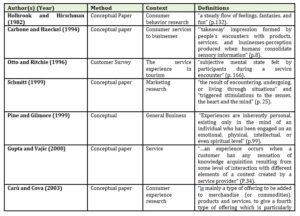
Table 2: Components of the concept of customer/tourist experience

The Value of Tourism Experience in Tourist Destinations:
Nowadays, with the increasing worldwide competition and the changing situation the world lives in due mainly to the post-pandemic period, the global economic crisis, and the emergence of a new form of technologies and behaviors, tourist destinations are not spared from these challenges. To adapt to these changes and maintain their position in the market, the tourism industry players need to develop and reinvent their tourism. Understanding their experiential offerings is therefore prominent to accomplish this. According to Pine and Gilmore (1999), the core value of destinations lies in the quality of the experience it offers. This experience can be strong that tourists might develop a deep emotional bond with their travel destination (Hidalgo & Hernandez, 2001) and influence their behavioral intentions (Prayag et al., 2017; del Bosque & San Martin, 2008). Nevertheless, limited studies address a comprehensive framework of what makes an overall tourist experience in the destination or implicitly depict the antecedents, formations, and consequences of the tourist experience in the destination (Cetin et al., 2019; Karayilan & Cetin, 2016). It is, therefore, within this context where this conceptual paper is located.
More specifically, within the context of tourist destinations, everything a “tourist goes through at a destination is an experience, be it behavioral or perceptual, cognitive or emotional, expressed or implied” (Oh et al., 2007, p. 120). Stated in another way, the destination elements, such as natural and cultural assets, spectacular scenery, and friendly local people, are no longer sufficient to satisfy the contemporary tourists’ needs and differentiate places in a highly competitive market (Hudson & Ritchie, 2009; Ketter, 2018). Instead, by providing a satisfying destination experience, destination managers and policy-makers can set their offering apart from their competitors (Schmitt, 2010), enhancing destination desirability to tourists and increasing, in return, destination profitability (Morgan, Elbe, and de Esteban, 2009; Lugosi and Walls, 2013).
To date, a great deal of research has explored experiences in specific settings, such as food experience (Quan & Wang, 2004), tourist attractions (Vitterso et al., 2000), backpackers (Park & Santos, 2016), heritage parks (Prentice et al., 1998), to name only a few. However, while these studies concentrate on a specific type of tourism experience, few studies have thoroughly approached the factors that holistically drive the tourism experience in destinations. The reality is, regarding the lack of a clear definition of the concept per se, the subjective nature of the construct, the timeframe of the experience, the dynamic nature of the destination itself, and the diverse approaches to the tourist experience are among the factors that make capturing the critical drivers of destination experience a difficult task (Godovykh & Tasci, 2020a).
Since the tourism experience extends a period of time and simultaneously involves synergistic interactions and consumption of products and services, destination managers cannot wholly orchestrate the drivers of the tourist experience in the destination (Lugosi & Walls, 2013; Walls et al., 2011). At best, they can only influence the psychological environment and the prerequisite that facilitate the conditions for the experience to take place (Mossberg, 2007). According to Lugosi and Walls (2013), experiences are a flow of emotions and thoughts that occur during destination encounters, including the influence of the physical environment (e.g., atmospherics, infrastructure, and superstructure), the social environment (e.g., the local community), and other customers (e.g., fellow tourists, friends and relatives). This is because a tourist’s experience entails a series of engagements and interactions with the tourism industry, meanings, and people’s surroundings (Moscardo, 2003). This interplay of interactions represents the core of the overall destination experience (Karayilan & Cetin, 2016). Within this analysis, the tourist experience can be regarded as a compound construct that originates from a set of interactions between tourists’ internal factors, such as cognition and senses; and an organization’s external factors, such as the physical environment, other tourists, employees, local communities, and tourism operators (Adhikari & Bhattacharya, 2016; Albayrak et al., 2018).
The Co-creation Perspective in Tourism Experience
In the last decade, consumer research has witnessed an ongoing period of changes in its theoretical and philosophical foundations. The framework within which the debates have been conducted is labelled “modernism versus postmodernism” (Featherstone, 1988; Firat, 1990; Firat & Venkatesh, 1993; Hirschman & Holbrook, 1992; Turner & Turner, 1990; Firat & Venkatesh, 1995; Fırat & Dholakia, 2006; Cova & Cova, 2009). The starting point of the first reflection is none other than the consumer who has changed status and even multiplied his functions and roles about the meanings he attributes to his consumption. Specifically, customers (e.g., tourists) have become less concerned about the material values of consumption and more interested in the experiential value they derive from activities and products (Firat & Dholakia, 2006). Arguably, Tarssanen and Kylänen (2006) put forward that the value in tourism activities is accumulated by means of more experiential elements and active participation, as opposed to simply visiting a particular tourist destination. Under this approach, Saraniemi and Kylänen (2011) consider the destination a dynamic entity where the tourist can “jump in.” Meaning that tourists are willing to co-create value with destination providers. For instance, Wu et al. (2015) argue that participatory experiences influence tourists’ perception of and satisfaction with their salt tourism experience.
Building on this theoretical analysis, the idea that the tourist experience is only determined by the industry and carried out by passive customers is contested in light of this theoretical approach. For example, Walls et al. (2011) proceed to argue that an experience is “self-generated and that the customer can control or choose whether he will have an experience or not (including negative experiences)” (p. 18). This is consistent with extant research, implying that tourists recall what they perform rather than what they see (Park & Santos, 2016). In fact, tourists form their own experiential space that fits their vision for what it should be, depending on their motivation and reasoning (Suvantola, 2002). This is why King (2002) explicitly notes that “customers interested in travel and tourism have an enormous range of experiences and destination options open to them, but they are increasingly in the driving seat when it comes to how they uptake their planning information, what they receive and the process they choose to go through in marketing their purchase” (p. 106). For this reason, many studies have emerged to recognize the modifying role of tourists in the creation and design process because the value of service and product offerings rely on tourists’ active participation in the consumption process.
Indeed, with the democratization of the Internet and the growing use of information and communication technologies (ICTs), Neuhofer et al. (2012) posit that tourists have become active participants in creating the experience they want to live in. Following these developments, Prahalad and Ramaswamy (2004) assign tourists as co-creators of their own experiences. They presume that the value creation of destinations depends on the ability of destination management processes to facilitate tourists’ interactions within the tourism system, which allows tourists to personalize their own experiences. Thus, by leaving space for tourists, Richards and Wilson (2006) imply that such an approach can lead tourists to construct their trip narrative of their surroundings and form their personal perspective.
In this context, Ritchie and Hudson (2009) exhort marketers to concentrate their marketing actions and advertising on tourism experiences to evoke tourists’ senses and inspire them to co-create their experiences while co-constructing the meanings they are looking for (Cova, 1996). Similar to this, Scott et al. (2009) propose, for future research, a shift from experience as something inherent for the visitor to a management approach in which experience is co-created by the visitor and supplier. In summary, it can be concluded that a tourist experience is highly personal, subjective, and co-created by tourists and providers through a series of interactions with the physical environment and activities, tourism businesses, and other fellow tourists.
Measurement of Experience and the Emergence of New Research Method
One of the most difficult and crucial problems for any destination or organization looking to establish a sustainable competitive edge is understanding the components of tourist experiences in the destination and managing all clues during tourists’ interactions with destination service providers (Lemon & Verhoef, 2016; Becker & Jaakkola, 2020). Indeed, by understanding the key factors of the tourist experience, managers and marketers can respond to the needs of potential tourists and influence their behavior.
However, academics and practitioners suffer from measurement myopia because the tourist/customer experience is individualized, vague, and multifaceted. Our analysis of prior research generally brings forth the core tenants of measurement complexities and challenges as follows: these complexities include a lack of an accepted definition of the concept, the multiple elements that underpin the construct in itself, the dynamic nature of the context-specific variables, the intangible nature of tourism products and services, the highly subjective, unique, and personal reactions of tourists, and the number of tourism players and stakeholders that exist within the tourism system (Godovykh & Tasci, 2020b; Hwang & Seo, 2016; Gentile et al., 2007; Meyer & Schwager, 2007; Palmer, 2010; Bagdare & Jain, 2013; Gnoth & Matteucci, 2014).
One degree of complexity arises from the fact that tourists differ in their motivations, attitudes, travel behavior, and preferences (Kundampully et al., 2018). For example, Andersson (2007) and Morgan et al. (2009) affirm that the expected value of a particular experience may differ from that of others. Similarly, Hwang and Seo (2016) suggest that the consumption experience might easily change the affective attitude generated by a customer experience over time. Furthermore, Csikszentmihalyi and Csikszentmihalyi (1988) argue that some personal characteristics may influence customers to engage in “flow” experiences more frequently, more intensely, and longer than others. Similarly, Ritchie and Hudson (2009) argue that tourists bring different social and cultural backgrounds; that is, each tourist holds a specific personal value that filters through their lives and affects their decision to select a particular destination and tourism experience (Madrigal & Kahle, 1994). Furthermore, Milman et al. (2017) report that visitor experience dimensions might not be concrete or objective when visiting a mountain attraction. This may induce different attributes and yield different interpretations, which vary from one customer to another.
Other scholars refer to the broad spectrum of research methodologies that have emerged in the business field and might be adjusted to investigate the concept of customer experience in the tourism and hospitality industry. These research methodologies are heterogeneous to the extent that customer experience is measured either quantitatively or qualitatively using a wide range of measurement tools, such as structured surveys, direct observation, structured or unstructured interviews, and measurement scales. Nevertheless, most researchers fail to consider the drivers of customer experience in its totality, for example, in pre-, during-, and post-experience (Godovykh & Tasci, 2020a). For example, many scholars (Verhulst et al., 2020; Godovykh & Tasci, 2020b; Kuppelwieser & Klaus, 2019; Palmer, 2010) have questioned the substantial reliance on conventional and retrospective self-report metrics to capture the dynamic aspects of tourists’ emotional responses from past experiences and current customers’ feelings, ignoring the dynamic nature of affective dimensions of experience. Accordingly, this may not predict consumer behavior or service performance outcomes. In this context, the online experiment by Godovykh and Tasci (2020b) supports the significant impact of post-visit emotional stimulation on several aspects of customer loyalty, demonstrating that the dynamic nature of the customer experience can be altered even long after the customer journey.
On the other hand, many scholars note a shortage of innovation-related methods to identify the key elements of the tourist experience and the inability of many researchers to convey theory to research methods. For example, Palmer (2010) deems the inadequacy of survey design to assess the changing nature of affective and experiential dimensions of experience and, adding to the above, the concern that respondents’ answers might be misrepresented by their mood when answering questions (Skard et al., 2011); alternatively, it can be biased to the fact that they may not recall experienced emotions accurately.
In this regard, Fick and Ritchie (1991) advocate using additional qualitative measures to abstract critical dimensions and highlight that a strictly quantitative scale fails to consider those affective and hedonic factors “which contribute to the overall quality of the service experience” (p. 9). From this point of view, Ritchie and Hudson (2009) argue that qualitative methods are convenient for researchers. For example, Holbrook (2006) surmises that due to the context-specific and non-linear nature of experiences, qualitative methods are well-suited to assess customer experience. Godovykh and Tasci (2020b) draw attention to more psychophysiological measures of emotions, such as electrodermal activity and electromyography, electrocardiography, pupillometry, etc., to overcome the limitations of conventional self-report measures. Correspondingly, Verhulst et al. (2020) adopt neurophysiological metrics to measure emotions and their dynamic nature along with customer experience. Their experimental results show that neurophysiological measures may better delineate arousal levels throughout different customer experience phases, although not self-reported by participants. Thus, Verhulst et al. (2020) emphasize the critical stake of such measures to managers and service designers, as they depict how emotions vary across different touch-points and channels throughout the customer experience. Hence, such a measurement approach might underpin which moments better predict customer behavioral intentions and service performance outcomes. However, using neurophysiological methods for data analysis is more difficult and costly for analyzing; therefore, managers and academics may reject it (Verhulst et al., 2019).
Hwang and Seo (2016) propose innovative methodologies to approach customer experience and recommend using experience sampling, grid techniques, netnography, structured content analysis, and emphasizing a cultural perspective. According to Lugosi and Walls (2013), a wide range of approaches and methods have been provided to studies regarding destination experiences, such as autoethnographic, ethnographic, visual methods, netnographics, and other forms of Internet research approaches, along with more traditional survey-based and quantitative approaches (see also, Hosany & Gilbert, 2010; Oh et al., 2007; Raikkonen & Honkanen, 2013). In accordance with Godovykh and Tasci (2020a), capturing the fundamental nature of tourist experiences must call upon a mixture of different research approaches, including self-report methods, interview techniques, experience sampling methods, and psychophysiological metrics, to allow researchers to instantly measure components of the total experience and respondents’ reactions as they unfold before, during, and after the experience, as opposed to looking only at transactional touch-points. Kim and Seo (2022) confirm that a combination of such methodologies reflects the true nature of customer experience. Similarly, Klaus and Maklan (2013) assert that quality of service experience (EXQ) should be considered alongside more traditional metrics for measuring customer experience. For example, customer satisfaction and net promoter score are commonly known as better and direct predictors of customer behavior, and their applicability is relatively practical and cost-effective. In general terms, Verhulst et al. (2020) and Verhulst et al. (2019) posit combining neurophysiological measures with conventional metrics (e.g., self-report and behavioral measures), which may help to strengthen validity and reliability.
Last but not least, in light of the development of ICTs, Lugosi and Walls (2013) claim that hardwired technologies, such as mobile phones, GPS, and geographic information systems, have lately gained more ground in the investigation of daily tourist movements and activities in a location.
For example, Lee et al. (1994) employed a self-initiated tape-recording model (SITRM) to gather data. This technique requires participants to wear electronic pagers and carry self-report booklets in addition to a quantitative survey form, making researchers more willing to collect immediate participant experiences. In doing so, it minimizes memory decay and mood bias. Volo (2009) sheds light on the benefits of unobtrusive methods (e.g., sensory devices, use of GPS, travel diaries, and videos) as an alternative to access tourists’ emotions and feelings. Chen (2008) examined travelers’ mental representations of their family holiday experiences and actions using the Zaltman metaphor elicitation technique (ZMET). Supplementing this approach, Lugosi and Walls (2013) recommend adopting the actor-network theory (ANT) technique to examine travel destinations and visitor experiences through various players, actions, processes, and relationships as a complement to this strategy. Kim and Seo (2022) provide insight into new big data sources for gathering information on consumer experience.
An Integrated Conceptual Framework of Destination Experience
Tourist Experience is a complex and wide-ranging construct arising from a broader set of interactions with actors, stakeholders, and other tourists (Jaakola et al., 2015; Verhoef et al., 2009; Packer & Ballantyne, 2016; Kandampully et al., 2018; Meyer & Schwager, 2007). In light of the above discussion, many studies refer to the tourism experience as cumulative of each moment experienced by tourists during their journey, i.e., before the experience occurs, during the travel destination, and long after the tourist returns to their home environment. This ongoing process influences tourists’ future behavior and expectations of the next trip. To illustrate, Tung and Ritchie (2011) define an experience as “an individual’s subjective evaluation and undergoing (i.e., affective, cognitive, and behavioral) of events related to their tourist activities that begin before (i.e., planning and preparation), during (i.e., at the destination), and after the trip (i.e., recollection)” (p. 1369). Thus, different factors influencing tourist behavior can be illuminated during each stage of the experience process (Chen et al., 2014). Still, no prior holistic conceptual model exists in the literature that has examined all the elements that form the tourist experience in the destination.
Our approach to the present study is to build on the initial work of Godovykh and Tasci (2020a), Lugosi and Walls (2013), and Walls et al. (2011), an integrated conceptual framework of destination experience (see Figure 1). This conceptual framework portrays a process that covers components, processes, and stakeholders and depicts how they combine to form what is fundamentally the destination experience. It takes the tourist experience antecedents from a diverse body of literature and deals with tourist experience as a construct created due to tourist interactions with the physical and social environment of the destination along their journey (i.e., pre, during, and post-destination experience), creating, in consequence, opportunities for positive outcomes to tourists and destinations as well.
From a marketing perspective, this framework is suggested as a tool for decision-making to help DMOs and other tourism stakeholders to capture the holistic nature of the tourist experience in the destination setting. This may have practical implications for DMOs and other tourism stakeholders operating at the destination to fit their marketing practices to design a superior destination experience in response to the tourists’ needs and preferences. Practically, future research on tourist experience in destinations may pinpoint the specific roles of each stakeholder and the destination elements when considering the construction of the experience the tourists receive.
In doing so, we consider the definition proposed by Godovykh and Tasci (2020a), which is holistic from its perspective, to explain the concept of the destination experience. We include the social interaction dimension as a crucial element of the tourist experience in the definition mentioned above in order to widen the scope of experiential appeal and dwell on the implications of developing an integrated destination experience (see the works of Murphy, 2001; Milman, Zehrer, & Tasci, 2017; Bharwani & Jauhari, 2013).
In this perspective, a destination experience can be described as the total of tourists’ internal reactions (i.e., affective, cognitive, sensory, conative, and social) enhanced by external destination-related elements (e.g., destination stakeholders and managers, physical environment, tourism activities, local community, and other tourists) that occur within a series of dynamic interactions encountered directly or indirectly along the travel journey; during pre- destination experience, during the core of the experience and post-destination experience. As a result, it might be interpreted differently according to tourists’ characteristics, resulting in distinct consequences related to tourists and the visited destination. This proposed definition may be particularly constructive in explaining and measuring destination experience. It describes the holistic structure of experience components (e.g., cognitive, affective, sensorial, conative, and social) as tourist responses during their journey. Accordingly, this proposed definition is highly consistent with previous conceptualizations of other tourism and hospitality scholars (e.g., Packer and Ballantyne, 2016; Adhikari & Bhattacharya, 2016; Palmer, 2010; Verhoef et al., 2009).
Antecedents
In the tourism and hospitality industry, a number of antecedents have been offered as reliable predictors of customer experience, some of which have been argued to affect the quality, formation somewhat, and/or purchasing of experiences. This is due to the fact that each tourist’s experiences are unique based on their perceptions, consumption, and interpretation.
One set of antecedents is related to tourists’ characteristics in terms of socio-demographics (gender, age, nationality, occupation, salary), psychographic profile (personality and lifestyle), and culture (Godovykh & Tasci, 2020a; Adhikari & Bhattacharya 2016; Kim et al., 2012; Andersson, 2007; Hwang & Seo, 2016; Park & Santos, 2016; Morgan, Elbe, & de Esteban. 2009), level of familiarity, knowledge and previous experience background (Holbrook & Hirschman, 1982; Finsterwalder & Kuppelwieser, 2011; Adhikari & Bhattacharya, 2016; Hwang & Seo, 2016), group characteristics and ethnic background (Holbrook & Hirschman, 1982; Adhikari & Bhattacharya, 2016; Hwang & Seo, 2016; Heywood, 1987), tourists’ expectations (Arnould and Price, 1993; Ofir & Simonson, 2007), their preferences and purposes of trips (Adhikari et al., 2013; Hu & Ritchie, 1993; Wijaya et al., 2013), skills, abilities, and attitudes (Andersson, 2007), and tourist motivation and level of involvement (Prebensen et al., 2013). Such factors are critical drivers of one’s experience at the destination and post-purchase experience evaluation.
The other set of antecedents is concerned with destination-related features and situational characteristics. On the one hand, most researchers claim that destination attractions represent the core elements of tourism (Gunn, 1972). Furthermore, Buhalis (2000) reports that tourists’ selection of a particular destination is motivated by existing tourism attractions, accessibility, available packages, activities, and ancillary services. Similarly, Lin and Kuo (2016) suggest that the destination’s culture, history, religion, nature, events, architecture, hospitality, and other related variables likely influence the tourist experience. Also, Mossberg (2007) suggests many factors influencing the tourist experience, i.e., service personnel, physical environment, products/souvenirs, other tourists, and themes/stories. More broadly, Kim (2014) proposes ten factors to form memorable tourism experiences, including local culture, various activities, hospitality, infrastructure, environment, management, accessibility, quality of service, physiography, place attachment, and superstructure. From another perspective, marketing literature considers that tourist behavior depends heavily on the nature and quality of the tourism experience. For example, Gronroos (2001) highlights the significant determinants of service quality on customer satisfaction, behavioral intentions, and customer experience. On the other hand, situational characteristics include situational factors, such as the nature of the consumption context (Hwang & Seo, 2016) and macroeconomic and environmental factors (Grewal, Levy & Kumar, 2009; Hwang & Seo, 2016; Hudson & Ritchie, 2009) that likely influence the tourist experience in various contexts. The tourist and hospitality business as a whole has undoubtedly been impacted by several uncontrolled factors, such as natural disasters and climate change, financial crises, unfavorable exchange rates, and sanitary concerns.
Consequences
The concept of experience is central to customer behavior (Klaus & Maklan, 2013; Addis & Holbrook, 2001). Many studies have discussed the positive relationship between positive tourist experiences and behavioral intentions and attitudes to make inferences about the destination.
From a tourist perspective, as mentioned before, experiential responses have broadly been expressed as a combination of cognitive, emotional, behavioral, sensorial, and social reactions by a tourist as a result of active interactions and engagement with the destination’s physical environment, people, and tourism stakeholders. In this regard, the tourism experience is proposed to result in emotional responses such as fun, feelings, fantasies, entertainment, and refreshment (Holbrook & Hirschman, 1982; Hirschman & Holbrook, 1982; Holbrook, 2000; Tynan & McKechnie, 2009; Hwang & Seo, 2016; Babin et al., 1994); cognitive responses such as knowledge, skills, learning, and memories (Oh et al. 2007; Holbrook & Hirschman, 1982; Pine & Gilmore, 1999; Lin & Kuo, 2016); conative responses such as practices, involvement, and engagement (Palmer, 2010; Schmitt, 1999; Unger & Kernan, 1983; Kim et al., 2012; Prahalad & Ramaswamy, 2004); sensorial responses such as taste, sound, smell, sight, and touch (Berry, Carbone, and Haeckel, 2002; Hudson & Ritchie, 2009); and perceived motivation (Pearce & Caltabiano, 1983; Oh et al., 2007). In a nutshell, when tourists value the experience, they begin valuing everything they feel, hear, see, and smell during their encounters with the destination.
From a destination perspective, DMOs can meet tourists’ expectations and sway their behavioral intentions in terms of satisfaction and behavioral loyalty intentions by having an understanding of how tourists evaluate and benefit from their experiences at the destination (Klaus & Maklan, 2013; Hosany & Gilbert, 2010). According to Oppermann (2000), travelers’ positive experiences at a destination may affect their desire to return and strengthen their ability to recommend the destination to friends and family. Hidalgo and Hernandez (2001) argue that experiences might be so powerful that tourists might become attached to the destination. These marketing outcomes are based on the importance of literature and research, emphasizing their weight as a consequence (Godovykh & Tasci, 2020b).
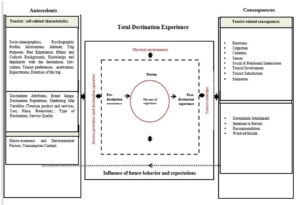
Figure 1: A conceptual framework of total destination experience
Conclusions, Implications, and Future Research Perspectives
This study aims to develop an integrated conceptual framework of tourist experiences in the destination based on the theoretical and conceptual understanding of tourism experience as an emerging topic in tourism research and consumer behavior. This framework will assist DMOs and policy-makers in broadening their understanding of the various factors and processes when considering the formation of the tourism experience. In doing so, DMOs and other tourism stakeholders can manage the prerequisite of enjoyable experiences for tourists, which will likely inspire tourists to return to the destination and recommend it to others.
The relevance of this research lies in the topicality of experience themes in tourism studies; the different insight that stems from this conceptual paper might have theoretical and managerial implications. From a theoretical perspective, this study aims to extend the conceptual and theoretical investigations of the experiential paradigm for destination management and marketing (Lugosi and Walls, 2013; King, 2002; Morgan, Elbe, and de Esteban, 2009). Therefore, the conceptual framework supplements the traditional framework of management through an experiential approach that considers the neglected experiential reactions of tourists (i.e., affective, conative, sensorial, and social responses) evoked as a result of dynamic interactions and active engagement with destination elements and stakeholders, alongside their destination visitation. From a management and marketing perspective, we believe that the conceptual framework of destination experience management may function as a guideline framework for destination managers and marketers to empirically study tourist experiences during the tourist journey in a destination. Hence, a clearer understanding of the relationship between specific tourist experiences, as they relate to the destination, can signal destination managers and marketers to establish a well-conceived marketing strategy to stage and deliver the desired tourism experience as part of a tourist value proposition.
Recently, intensive work has shed light on the co-creation experience process as critical to marketing strategies and differentiation in the general business literature. From this perspective, tourists are no longer considered passive recipients of a pre-conceived tourism product or experience but rather active partners in the co-creation experience design and management process (Lusch & Vargo, 2006; Lugosi and Walls, 2013; Prahalad & Ramaswamy, 2003; Mossberg, 2007; Binkhorst & Den Dekker, 2009). Morgan, Elbe, and de Esteban (2009) imply that the delivery of co-creation tourist experiences can only be achieved through an effective combined effort between the private and public sectors. This is in line with previous research that considers tourist experiences derived from broader networks of actors, stakeholders, tourists, suppliers, host guests, brands, fellow tourists, and the local community (Jaakola et al., 2015; Verleye, 2015). Therefore, destination managers and marketers must focus on an eco-tourism system that includes destination managers and stakeholders in managing the co-creation destination experience. Therefore, further investigations are required to design co-creating experiential marketing strategies to assist tourists in co-constructing their desired tourism experience that provides the emotional state or pre-image they are looking to live in.
Last but not least, we propose empirical studies investigating causal linkages between different variables with related interactions, antecedents and consequences to fully leverage the relevance of the proposed conceptual framework.
Statements and Declarations
The author(s) reported no potential conflicts of interest.
The author(s) received no financial support for this article.
- Abbott, L. (1955). Quality and competition. Columbia University Press.
- Addis, M., & Holbrook, M. B. (2001). On the conceptual link between mass customisation and experiential consumption: An explosion of subjectivity. Journal of Consumer Behaviour: An International Research Review, 1(1), 50–66.
- Adhikari, A., Basu, A., & Raj, S. P. (2013). Pricing of experience products under consumer heterogeneity. International Journal of Hospitality Management, 33, 6–18.
- Adhikari, A., & Bhattacharya, S. (2016). Appraisal of literature on customer experience in tourism sector: Review and framework. Current Issues in Tourism, 19(4), 296–321.
- Albayrak, T., Herstein, R., Caber, M., Drori, N., Bideci, M., & Berger, R. (2018). Exploring religious tourist experiences in Jerusalem: The intersection of Abrahamic religions. Tourism Management, 69, 285–296.
- Andersson, T. D. (2007). The tourist in the experience economy. Scandinavian Journal of Hospitality and Tourism, 7(1), 46–58.
- Arnould, E. J., & Price, L. L. (1993). River magic: Extraordinary experience and the extended service encounter. Journal of Consumer Research, 20(1), 24–45.
- Babin, B. J., Darden, W. R., & Griffin, M. (1994). Work and/or fun: Measuring hedonic and utilitarian shopping value. Journal of Consumer Research, 20(4), 644–656.
- Becker, L., & Jaakkola, E. (2020). Customer experience: Fundamental premises and implications for research. Journal of the Academy of Marketing Science, 48(4), 630–648.
- Berry, L. L., Carbone, L. P., & Haeckel, S. H. (2002). Managing the total customer experience. MIT Sloan Management Review, 43(3), 85–89.
- Bharwani, S., & Jauhari, V. (2017). An exploratory study of competencies required to cocreate memorable customer experiences in the hospitality industry. In Hospitality marketing and consumer behavior (pp. 159–185). Apple Academic Press.
- Binkhorst, E., & Den Dekker, T. (2013). Agenda for co-creation tourism experience research. In Marketing of tourism experiences (pp. 219–235). Routledge.
- Boswijk, A., Thijssen, T., & Peelen, E. (2007). The experience economy: A new perspective. Pearson Education.
- Brakus, J. J., Schmitt, B. H., & Zarantonello, L. (2009). Brand experience: What is it? How is it measured? Does it affect loyalty? Journal of Marketing, 73(3), 52–68.
- Buhalis, D. (2000). Marketing the competitive destination of the future. Tourism Management, 21(1), 97–116.
- Carbone, L. P., & Haeckel, S. H. (1994). Engineering customer experiences. Marketing Management, 3(3), 8.
- Carù, A., & Cova, B. (2003). Revisiting consumption experience: A more humble but complete view of the concept. Marketing Theory, 3(2), 267–286.
- Cetin, G., Kizilirmak, I., Balik, M., & Kucukali, S. (2019). Impact of superior destination experience on recommendation. Trends in Tourist Behavior , 147–160.
- Cetin, G., & Walls, A. (2016). Understanding the customer experiences from the perspective of guests and hotel managers: Empirical findings from luxury hotels in Istanbul, Turkey. Journal of Hospitality Marketing & Management, 25(4), 395-424.
- Chen, J. S., Prebensen, N. K., & Uysal, M. (2014). Dynamic drivers of tourist experiences. In N.K.
- Chen, C.-C., Huang, W.-J., & Petrick, J. F. (2016). Holiday recovery experiences, tourism satisfaction and life satisfaction–Is there a relationship? Tourism Management, 53, 140–147.
- Cohen, E. 1979 A Phenomenology of Tourist Experiences. Sociology 13:179–201.
- Cohen, E. (1995). Contemporary tourism—Trends and challenges. In R. Butler and D. Pearce (Eds.), Change in tourism (pp. 12–29). London: Routledge
- Cova, B. (1996). What postmodernism means to marketing managers. European Management Journal, 14(5), 494–499.
- Cova, B., & Cova, V. (2009). Faces of the new consumer: A genesis of consumer governmentality. Recherche et Applications En Marketing (English Edition), 24(3), 81–99.
- Cracolici, M. F., & Nijkamp, P. (2009). The attractiveness and competitiveness of tourist destinations: A study of Southern Italian regions. Tourism Management, 30(3), 336–344.
- Crouch, G. I., & Ritchie, J. B. (2005). Application of the analytic hierarchy process to tourism choice and decision making: A review and illustration applied to destination competitiveness. Tourism Analysis, 10(1), 17– 25.
- Cutler, S. Q., & Carmichael, B. A. (2010). The dimensions of the tourist experience. In M. Morgan, P. Lugosi, & J. R. B. Ritchie (Eds.), The tourism and leisure experience. Consumer and managerial perspectives (pp. 3–26). Bristol, UK: Channel View Publications.
- Del Bosque, I. R., & San Martín, H. (2008). Tourist satisfaction a cognitive-affective model. Annals of Tourism Research, 35(2), 551–573.
- Featherstone, M. (1988). In pursuit of the postmodern: An introduction. Theory, Culture & Society, 5(2–3), 195–215.
- Firat, A. F., & Venkatesh, A. (1993). Postmodernity: The age of marketing. International Journal of Research in Marketing, 10(3), 227–249.
- Firat, A. F., & Venkatesh, A. (1995). Liberatory postmodernism and the reenchantment of consumption. Journal of Consumer Research, 22(3), 239–267.
- Fırat, A. F., & Dholakia, N. (2006). Theoretical and philosophical implications of postmodern debates: Some challenges to modern marketing. Marketing Theory, 6(2), 123–162.
- Firat, A. F. (1992). Postmodernism and the marketing organization. Journal of Organizational Change Management.
- Fick, G. R., & Brent Ritchie, J. R. (1991). Measuring service quality in the travel and tourism industry. Journal of Travel Research, 30(2), 2–9.
- Finsterwalder, J., & Kuppelwieser, V. G. (2011). Co-creation by engaging beyond oneself: The influence of task contribution on perceived customer-to-customer social interaction during a group service encounter. Journal of Strategic Marketing, 19(7), 607–618.
- Framke, W. (2002). The destination as a concept: A discussion of the business-related perspective versus the socio-cultural approach in tourism theory. Scandinavian Journal of Hospitality and Tourism, 2(2), 92–108.
- Gnoth, J., & Matteucci, X. (2014). A phenomenological view of the behavioural tourism research literature. International Journal of Culture, Tourism and Hospitality Research.
- Gretzel, U. & Jamal, T. (2009). Conceptualizing the Creative Tourist Class: Technology, Mobility, and Tourism Experiences. Tourism Analysis, 14(4): 471-481.
- Grewal, D., Levy, M., & Kumar, V. (2009). Customer experience management in retailing: An organizing framework. Journal of Retailing, 85(1), 1–14.
- Grönroos, C. (2001). The perceived service quality concept–a mistake? Managing Service Quality: An International Journal.
- Godovykh, M., & Tasci, A. D. (2020). Customer experience in tourism: A review of definitions, components, and measurements. Tourism Management Perspectives, 35, 100694.
- Gunn, C. A., & Taylor, G. D. (1973). Book Review: Vacationscape: Designing Tourist Regions: (Bureau of Business Research, The University of Texas at Austin, Austin, Texas, 1972, 238 pp., $8.00.). Journal of Travel Research, 11(3), 24–24.
- Heywood, J. L. (1987). Experience preferences of participants in different types of river recreation groups. Journal of Leisure Research, 19(1), 1–12.
- Hidalgo, M. C., & Hernandez, B. (2001). Place attachment: Conceptual and empirical questions. Journal of Environmental Psychology, 21(3), 273–281.
- Hirschman, E. C., & Holbrook, M. B. (1992). Postmodern consumer research (Vol. 1). Sage.
- Hirschman, E. C., & Holbrook, M. B. (1982). Hedonic consumption: Emerging concepts, methods and propositions. Journal of Marketing, 46(3), 92–101.
- Holbrook, M. B. (2000). The millennial consumer in the texts of our times: Experience and entertainment. Journal of Macromarketing, 20(2), 178–192.
- Holbrook, M. B. (2006a). Consumption experience, customer value, and subjective personal introspection: An illustrative photographic essay. Journal of Business Research, 59(6), 714–725.
- Holbrook, M. B., & Hirschman, E. C. (1982a). The experiential aspects of consumption: Consumer fantasies, feelings, and fun. Journal of Consumer Research, 9(2), 132–140.
- Hosany, S., & Gilbert, D. (2010). Measuring tourists’ emotional experiences toward hedonic holiday destinations. Journal of Travel Research, 49(4), 513–526.
- Hudson, S., & Ritchie, J. B. (2009). Branding a memorable destination experience. The case of Brand Canada.International Journal of Tourism Research, 11(2), 217–228.
- Huseynov, K., Costa Pinto, D., Maurer Herter, M., & Rita, P. (2020). Rethinking emotions and destination experience: An extended model of goal-directed behavior. Journal of Hospitality & Tourism Research, 44(7), 1153–1177. https://doi.org/10.1177/ 1096348020936334
- Hwang, J., & Seo, S. (2016). A critical review of research on customer experience management: Theoretical, methodological and cultural perspectives. International Journal of Contemporary Hospitality Management.
- Jaakkola, E., Helkkula, A., & Aarikka-Stenroos, L. (2015). Service experience co-creation: Conceptualization, implications, and future research directions. Journal of Service Management.
- Kandampully, J., Zhang, T. C., & Jaakkola, E. (2018a). Customer experience management in hospitality: A literature synthesis, new understanding and research agenda. International Journal of Contemporary Hospitality Management.
- Karayilan, E., & Cetin, G. (2016). Tourism destination: Design of experiences. The handbook of managing and marketing tourism experiences (pp. 65–83). Emerald Group Publishing Limited
- Kaushal, V. and Yadav, R. (2021), “Understanding customer experience of culinary tourism through food tours of Delhi”, International Journal of Tourism Cities , Vol. 7 No. 3, pp. 683 701. https://doi.org/10.1108/IJTC-08-2019-0135 Download as .RIS
- Ketter, E. (2018). It‗s all about you: Destination marketing campaigns in the experience economy era. Tourism Review.
- Kim, J.-H. (2014). The antecedents of memorable tourism experiences: The development of a scale to measure the destination attributes associated with memorable experiences. Tourism Management, 44, 34–45.
- Kim, J.-H., Ritchie, J. B., & McCormick, B. (2012). Development of a scale to measure memorable tourism experiences. Journal of Travel Research, 51(1), 12–25.
- King, J. (2002). Destination marketing organisations—Connecting the experience rather than promoting the place. Journal of Vacation Marketing, 8(2), 105–108.
- Kim, H., & So, K. K. F. (2022). Two decades of customer experience research in hospitality and tourism: A bibliometric analysis and thematic content analysis. International Journal of Hospitality Management, 100, 103082.
- Klaus and Maklan (2013), ―Towards a Better Measure of Customer Experience,‖ International Journal of Market Research, 55 (2), 227–46.
- Larsen, S. (2007). Aspects of a psychology of the tourist experience. Scandinavian Journal of Hospitality and Tourism, 7(1), 7–18.
- Lemon, K. N., & Verhoef, P. C. (2016). Understanding customer experience throughout the customer journey. Journal of Marketing, 80(6), 69–96.
- Lin, C.-H., & Kuo, B. Z.-L. (2016). The behavioral consequences of tourist experience. Tourism Management Perspectives, 18, 84–91.
- Lusch, R. F., & Vargo, S. L. (2006). Service-dominant logic: Reactions, reflections and refinements. Marketing Theory, 6(3), 281–288.
- Lugosi, P., & Walls, A. R. (2013). Researching destination experiences: Themes, perspectives and challenges. Journal of Destination Marketing and Management, 2(2), 51–58.
- Madrigal, R., & Kahle, L. R. (1994). Predicting vacation activity preferences on the basis of value-system segmentation. Journal of Travel Research, 32(3), 22–28.
- Mahmud, M.S. , Rahman, M.M. , Lima, R.P. and Annie, E.J. (2021), “Outbound medical tourism experience, satisfaction and loyalty: lesson from a developing country”, Journal of Hospitality and Tourism Insights , Vol. 4 No. 5, pp. 545-564. https://doi.org/10.1108/JHTI-06-2020-0094
- Maslow, A. H. (1964). Religions, values, and peak-experiences (Vol. 35). Ohio State University Press Columbus.
- Meyer, C., & Schwager, A. (2007). Customer experience. Harvard Business Review, 85(2), 116–126.
- Milman, A., Zehrer, A., & Tasci, A. D. (2017). Measuring the components of visitor experience on a mountain attraction: The case of the Nordkette, Tyrol, Austria. Tourism Review.
- Morgan, M., Elbe, J., & de Esteban Curiel, J. (2009a). Has the experience economy arrived? The views of destination managers in three visitor‐dependent areas. International Journal of Tourism Research, 11(2), 201– 216.
- Moscardo, G. (2009). Tourism and quality of life: Towards a more critical approach. Tourism and Hospitality Research, 9(2), 159–170.
- Mossberg, L. (2007). A marketing approach to the tourist experience. Scandinavian Journal of Hospitality and Tourism, 7(1), 59–74
- Murphy, L. (2001). Exploring social interactions of backpackers. Annals of Tourism Research, 28(1), 50–67.
- Neuhofer, B., Buhalis, D., & Ladkin, A. (2012). Conceptualising technology enhanced destination experiences. Journal of Destination Marketing & Management, 1(1–2), 36–46.
- Ofir, C., & Simonson, I. (2007). The effect of stating expectations on customer satisfaction and shopping experience. Journal of Marketing Research, 44(1), 164–174.
- Oh, H., Fiore, A. M., & Jeoung, M. (2007). Measuring Experience Economy Concepts: Tourism Applications. Journal of Travel Research , 46 (2), 119–132. https://doi.org/10.1177/0047287507304039
- Otto, J. E., & Ritchie, J. B. (1996). The service experience in tourism. Tourism Management, 17(3), 165–174.
- Oppermann, M. (2000). Tourism destination loyalty. Journal of Travel Research, 39(1), 78–84.
- Packer, J., & Ballantyne, R. (2016). Conceptualizing the visitor experience: A review of literature and development of a multifaceted model. Visitor Studies, 19(2), 128–143.
- Palmer, A. (2010). Customer experience management: A critical review of an emerging idea. Journal of Services Marketing.
- Park, S., & Santos, C. A. (2017). Exploring the tourist experience: A sequential approach. Journal of Travel Research, 56(1), 16–27.
- Pearce, P. L., & Caltabiano, M. L. (1983). Inferring travel motivation from travelers’ experiences. Journal of Travel Research, 22(2), 16–20.
- Pine, B. J., Pine, J., & Gilmore, J. H. (1999). The experience economy: Work is theatre & every business a stage. Harvard Business Press.
- Prahalad, C. K., & Ramaswamy, V. (2004). Co-creation experiences: The next practice in value Journal of Interactive Marketing, 18(3), 5–14.
- Prayag, G., Hosany, S., Muskat, B., & Del Chiappa, G. (2017). Understanding the relationships between tourists’ emotional experiences, perceived overall image, satisfaction, and intention to recommend. Journal of Travel Research, 56(1), 41–54.
- Prebensen, N. K., Woo, E., Chen, J. S., & Uysal, M. (2013). Motivation and involvement as antecedents of the perceived value of the destination experience. Journal of Travel Research, 52(2), 253–264.
- Prentice, R. C., Witt, S. F., & Hamer, C. (1998). Tourism as experience: The case of heritage parks. Annals of Tourism Research, 25(1), 1–24.
- Quan, S., & Wang, N. (2004). Towards a structural model of the tourist experience: An illustration from food experiences in tourism. Tourism Management, 25(3), 297–305.
- Räikkönen, J., & Honkanen, A. (2013). Does satisfaction with package tours lead to successful vacation experiences? Journal of Destination Marketing & Management, 2(2), 108–117.
- Rather, R.A. (2020), “Customer experience and engagement in tourism destinations: the experiential marketing perspective”, Journal of Travel and Tourism Marketing, Vol. 37 No. 1, pp. 15-32
- Richards, G., & Wilson, J. (2006). Developing creativity in tourist experiences: A solution to the serial reproduction of culture? Tourism Management, 27(6), 1209–1223 doi:10.1016/j.tourman.2005.06. 002.
- Saraniemi, S., & Kylänen, M. (2011). Problematizing the concept of tourism destination: An analysis of different theoretical approaches. Journal of Travel Research, 50(2), 133–143.
- Schmitt, B. (1999). Experiential marketing. Journal of Marketing Management, 15(1–3), 53–67.
- Schmitt, B. H. (2010). Customer experience management: A revolutionary approach to connecting with your customers. John Wiley & Sons.
- Scott, N., Laws, E., & Boksberger, P. (2009). The marketing of hospitality and leisure experiences. Journal of Hospitality Marketing & Management, 18(2–3), 99–110.
- Shafiee, M. M., Foroudi, P., & Tabaeeian, R. A. (2021). Memorable experience, tourist-destination identification and destination love. International Journal of Tourism Cities. Article in press. http://dx.doi.org/10.1108/IJTC-09-2020-0176
- Sugathan, P., & Ranjan, K. R. (2019). Co-creating the tourism experience. Journal of Business Research, 100(Jul), 207–217
- Suvantola, J. 2002 Tourist‗s Experience of Place. Burlington: Ashgate
- Tarssanen, S., and M. Kylänen (2006). “A Theoretical Model for Producing Experiences—A Touristic Perspective.” In Articles on Experiences 2, 2nd edition, edited by M. Kylänen.Rovaniemi, Finland: Lapland Centre of Expertise for the Experience Industry, pp. 134-54
- Tung, V. W. S., & Ritchie, J. B. (2011a). Exploring the essence of memorable tourism experiences. Annals of Tourism Research, 38(4), 1367–1386.
- Turner, B. S., & Turner, B. S. T. (1990). Theories of modernity and postmodernity.
- Tynan, C., & McKechnie, S. (2009). Hedonic meaning creation though Christmas consumption: A review and model. Journal of Customer Behaviour, 8(3), 237–255.
- Uriely, N. (2005). The tourist experience: Conceptual developments. Annals of Tourism Research, 32(1), 199– 216.
- Unger, L. S., & Kernan, J. B. (1983). On the meaning of leisure: An investigation of some determinants of the subjective experience. Journal of Consumer Research, 9(4), 381–392.
- Vargo, S. L., & Lusch, R. F. (2004). Evolving to a new dominant logic for marketing. Journal of Marketing, 68(1), 1–17.
- Verhulst, N., De Keyser, A., Gustafsson, A., Shams, P., & Van Vaerenbergh, Y. (2019). Neuroscience in service research: An overview and discussion of its possibilities. Journal of Service Management.
- Verhulst, N., Vermeir, I., Slabbinck, H., Lariviere, B., Mauri, M., & Russo, V. (2020). A neurophysiological exploration of the dynamic nature of emotions during the customer experience. Journal of Retailing and Consumer Services, 57, 102217.
- Verleye, K. (2015). The co-creation experience from the customer perspective: Its measurement and determinants. Journal of Service Management.
- Vittersø, J., Vorkinn, M., Vistad, O. I., & Vaagland, J. (2000). Tourist experiences and attractions. Annals of Tourism Research, 27(2), 432–450
- Volo, S. (2009). Conceptualizing experience: A tourist based approach. Journal of Hospitality Marketing & Management, 18(2–3), 111–126.
- Walls, A. R., Okumus, F., Wang, Y. R., & Kwun, D. J.-W. (2011). An epistemological view of consumer experiences. International Journal of Hospitality Management, 30(1), 10–21.
- Wijaya, B. S. (2013). Dimensions of brand image: A conceptual review from the perspective of brand communication. European Journal of Business and Managemrnt, 5(31), 55–65.
- Wu, T. C., Xie, P. F., & Tsai, M. C. (2015). Perceptions of attractiveness for salt heritage tourism: A tourist perspective. Tourism Management, 51, 201–209
Conferences
Latest articles, latest coip articles, +general information, publication ethics, indexing and abstracting, international editorial board, open access, lifetime article preservation.
Boutique Japan
30 Japan Experiences to Add to Your Bucket List
At Boutique Japan, our specialty is helping travelers who believe that travel is about unique experiences, not just sightseeing or checking items off a list.
But when you’re planning a trip to Japan , it can be hard to know which places are worth visiting, and which places to skip. After all, some popular experiences are actually worthwhile and live up to the hype, while others are just as touristy as they look on Instagram.
If you’re looking for inspiration on where to go and what to do for a truly memorable Japan trip, we recommend the remarkable places and experiences listed below. Some are more well-known, while others will help you get off the beaten path (and into the Japanese countryside ).
Originally written in 2015, this post was updated and republished on September 21, 2021.
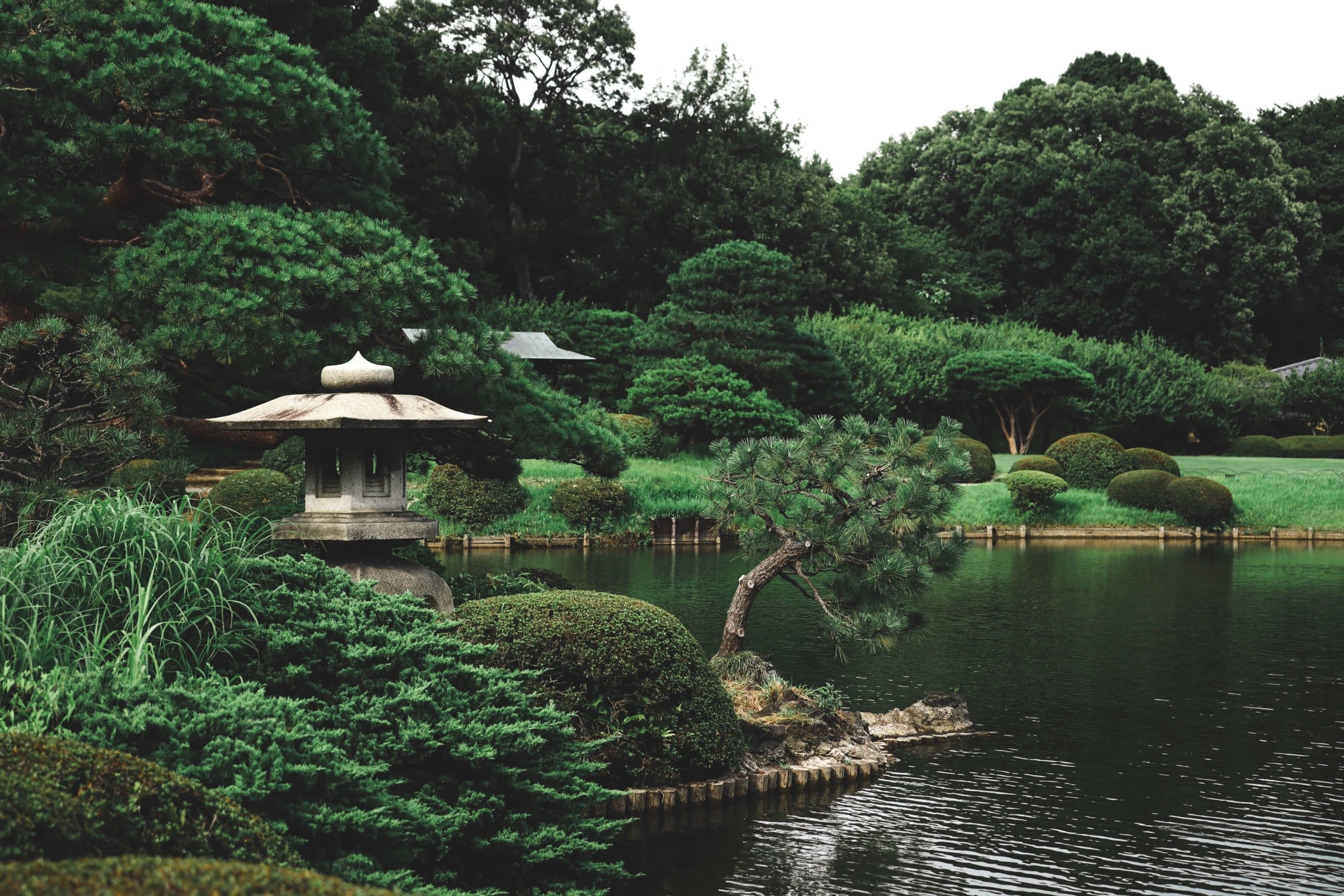
To Tour or Not to Tour
While we specialize in planning custom trips to Japan, we realize many people refer to our website to help them plan their itineraries independently. Many of the experiences featured below can be done without a guide, though most can be greatly enhanced with a fun, local expert.
We hear from lots of travelers who have had mediocre tours in the past, and we get it. Few things are more frustrating than a boring, or bad, guide. Along with visiting boutique and luxury hotels and ryokans , perhaps the most important part of our team’s work is vetting guides and local experts (there are plenty of guides throughout Japan, but few who are knowledgeable, flexible, and authentically engaging).
Of course, even for travelers who appreciate a great guide, there may be times where you simply want to relax or explore on your own. This might mean wandering around a charming neighborhood, people watching at a stylish cafe, or enjoying a spa treatment. We take this into account when designing your Japan itinerary , and suggest local experts especially where we think it will most enhance your experience.
We hope our ideas provide you with travel inspiration, whether you contact us for your trip or plan independently!
Here are 30 unique and immersive experiences to consider for your Japan bucket list:
- Drink and Dine at an Izakaya
- Soak in Healing Onsen (Hot Springs)
- Explore Art & Architecture on The Art Island of Naoshima
- Splurge on a Night at a Tokyo Luxury Hotel
- Attend a Japanese Matsuri (Festival)
- Sample the World’s Finest Sushi & Sashimi
- Ride the Shinkansen (Bullet Train) Around Japan
- Stroll Through Arashiyama’s Bamboo Forest
- Eat The Best Ramen of Your Life on a Ramen Deep Dive
- Stay at a Shukubo (Buddhist Temple Lodging)
- Watch Sumo and Baseball
- Ski or Snowboard Japan’s Legendary Powder
- Admire Sakura During Cherry Blossom Season
- Taste Premium Nihonshu (Sake)
- Hike Through the Japanese Countryside
- Experience Nightlife in Japan
- Cycle Through Kyoto or Tokyo
- Trek Fushimi Inari Taisha Shrine
- Eat Your Way Through Tsukiji’s Outer Market
- Climb or Admire Fuji-san (Mount Fuji)
- Marvel at Japan’s Modern Architecture
- Find Zen in a Japanese Garden
- Experience Japanese Coffee Culture
- Savor Matcha , Genmaicha , and More
- Visit an Original Japanese Castle
- Get Lost in Tokyo’s Stylish Backstreets
- Sip on Rare Japanese Whisky
- Experience Paradise in the Islands of Okinawa
- See the Famous Snow Monkeys in Nagano
- Obsess Over Japan’s World-Class Baked Goods

1. Drink and Dine at an Izakaya
You’ll find an amazing variety of culinary experiences in Japan , but there’s nothing like eating and drinking at an izakaya .
In addition to being the perfect place to sample a wide variety of Japanese dishes — from sashimi and fried foods, to tofu and seasonal vegetables — eating and drinking at an izakaya is also a great way to mingle with locals. Kanpai!
2. Soak in Healing Onsen (Hot Springs)
Soaking in a remote onsen while the snow falls around you is one of the most magical experiences you can have in Japan, and makes braving the cold all the more worthwhile. It’s one of our favorite things about winter in Japan .
Combined with a stay in a traditional ryokan (Japanese-style inn) , and you have all the makings of an unforgettable trip. For more ryokan inspiration, see our Luxury Ryokans & the Japanese Countryside sample trip.
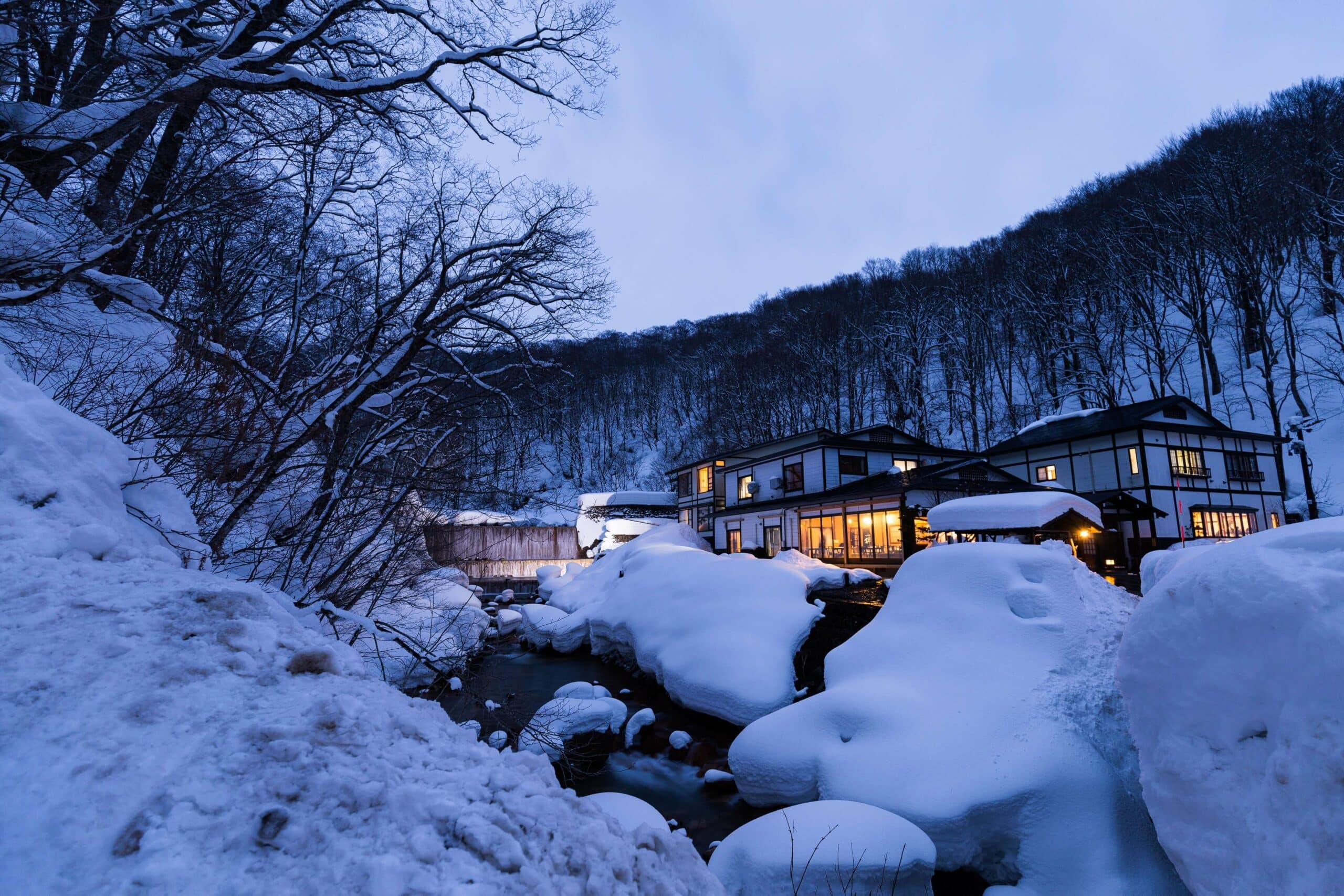
3. Explore Art & Architecture on The Art Island of Naoshima
For art lovers, the so-called art island, Naoshima , is a must-visit, with museums designed by Tadao Ando and works by world-class artists from around the world. Stay at the museum-hotel Benesse House, and also make sure to visit the tiny nearby art islands of Teshima and Inujima.
4. Splurge on a Night at a Tokyo Luxury Hotel
Tokyo is home to some of Japan’s best hotels . Luxury options include Aman Tokyo, Palace Hotel Tokyo, and HOSHINOYA Tokyo. Stylish boutique hotels in Tokyo include TRUNK, K5, and Hotel Ryumeikan Ochanomizu Honten.
And there are many, many others (including, of course, the Park Hyatt Tokyo made famous in Sofia Coppola’s Lost in Translation ). With so many fun and beautiful options, it’s worth splurging on at least one night at a luxurious Tokyo hotel.
If you can, it’s also worth splurging on a night at a luxury ryokan in rural Japan , as well!

5. Attend a Japanese Matsuri (Festival)
If you want to see Japan at its liveliest, a high-energy matsuri is the place to do it! Japanese festivals ( matsuri ) are full of color, tradition, and exuberance. Some of the most remarkable include Hokkaido’s Yuki Matsuri (Snow Festival), Shikoku’s boisterous Awa Odori dance festival, and the beautiful Gion Matsuri of Kyoto.
6. Sample the World’s Finest Sushi & Sashimi
Sushi and sashimi in Japan are, unsurprisingly, on a level of their own. Tokyo’s best sushi shops are just the tip of the iceberg, and you’ll find top-quality sushi and sashimi throughout the country, in places such as Kanazawa , Hokkaido, Toyama Prefecture, and beyond.
Even more price-conscious travelers will find excellent sushi and sashimi at moderately priced restaurants, and in beautiful depachika bentos.
7. Ride the Shinkansen (Bullet Train) Around Japan
Whether or not you’re a train geek, you’re likely aware that Japan’s rail network is part of what makes traveling around Japan such a joy. Even though we typically don’t recommend the Japan Rail Pass for most of our clients, we do recommend getting around via shinkansen whenever possible, and fortunately Japan’s extensive rail system connects the country from Hokkaido in the north, to Kyushu in the southwest.
Part of the fun of riding the bullet train is the food. Before hopping on the train, pick up a delicious seasonal bento and a bottle of sake (eating and drinking on the train is a national tradition), and enjoy the landscape as it zips by.
8. Stroll Through Arashiyama’s Bamboo Forest
Too touristy? Not necessarily . Yes, Kyoto’s scenic Arashiyama district (home to Zen temples and the iconic bamboo forest) can get extremely crowded at peak hours, and during peak seasons such as spring and fall .
On the other hand, if you visit off-season — or have the motivation to wake up early — you may have this magical place all to yourself. Depending on the time of year, the crowds often also begin thinning out in the late afternoon, when most tourists head back to their hotels.
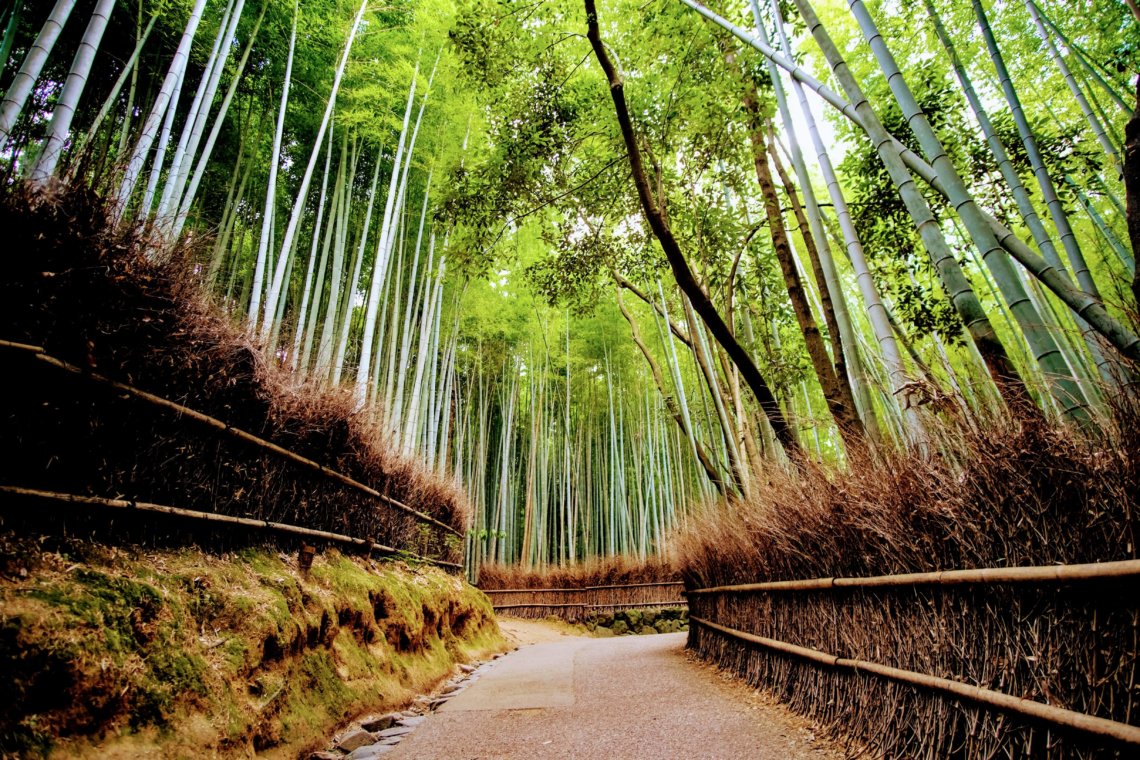
9. Eat The Best Ramen of Your Life on a Ramen Deep Dive
These days you can find good-quality ramen in most major cities around the world, but there’s still nothing like ramen in Japan. Wherever you go, from Fukuoka (aka Hakata) in the southwest to Sapporo in the north, you’ll find incredibly good ramen shops with passionately devoted followers.
If you’re a hardcore ramen lover, geek out with a ramen-obsessed expert who will take you to a selection of great ramen-ya to experience distinct styles and varieties. There are also less obsessive ramen guides for travelers seeking a more basic introduction to these famous noodles.
For more on ramen, see our introduction to ramen in Japan and our guide to Tokyo’s 5 top historic ramen shops .
10. Stay at a Shukubo (Buddhist Temple Lodging)
For a taste of traditional Japanese Buddhist life, there’s no better experience than spending a night or two at a shukubo (temple lodging).
Temple accommodations are typically on the rustic side, but prepare for a fascinating and immersive cultural experience, and delicious vegetarian shojin ryori cuisine. Japan’s most famous destination for shukubo stays is sacred Mount Koya (Koyasan) , and there are many other off-the-beaten-path options elsewhere in Japan as well.

11. Watch Sumo and Baseball
The chance to watch sumo in Japan should not be missed! Along with being highly entertaining, attending a sumo basho (tournament) is also a fascinating cultural experience.
And even if you’re not a baseball fan, few things are more fun than going to a baseball game in Japan. Japanese baseball fans are renowned for their liveliness, and the food and drink is also a highlight!
12. Ski or Snowboard Japan’s Legendary Powder
From the legendary powder of Niseko and Hokkaido, to the Japanese Alps and Tohoku, Japan has some of the best skiing and snowboarding in the world. After a day on the slopes, rejuvenate with cozy izakaya food and healing onsen .
13. Admire Sakura During Cherry Blossom Season
We were torn about whether to include this on our list, as we generally believe Japan is best experienced with fewer crowds. On the other hand, despite the number of tourists, there is nevertheless something beguilingly magical about sakura (cherry blossoms).
During hanami (cherry blossom viewing) season, the country is covered in pink blossoms, and parks and gardens are filled with revelers celebrating over sake and seasonal bentos. It’s definitely not for everyone though, so make sure to read all about the pros and cons of visiting Japan in cherry blossom season .
A popular and slightly less crowded alternative is Japan’s autumn , renowned for its brilliant fall colors.

14. Taste Premium Nihonshu (Sake)
Many would-be nihonshu (sake) lovers have been turned off of sake thanks to subpar experiences at Japanese restaurants outside of Japan. But the quality of sake to be found in Japan is simply remarkable. Forget the sake you’ve tried in the US, Europe, or Australia. Come to Japan with an open mind and prepare to sample premium nihonshu from small local producers who rarely export.
15. Hike Through the Japanese Countryside
Japan is a hiker’s paradise, with wonderful day hikes and multi-day walks throughout the country (there are even great hikes near Tokyo , and many more in and around Kyoto).
Two of Japan’s best multi-day hiking adventures are the charming Nakasendo Trail in central Japan’s Kiso Valley, and the Kumano Kodo pilgrimage route in the Kii Peninsula, but for intrepid travelers there are also plenty of other options, on and off the beaten path.
16. Experience Nightlife in Japan
Japan is culturally thrilling during the day, and equally dynamic at night.
Whether you’re enjoying craft cocktails or Japanese whisky at a tiny bar, drinking with locals at a casual izakaya or tachinomi (stand bar), or singing all-night karaoke, Japan has some of the most varied and entertaining nightlife in the world. Tokyo’s nightlife is legendary, and you’ll also find bustling nightlife scenes in cities such as Sapporo, Osaka , Fukuoka, and more.
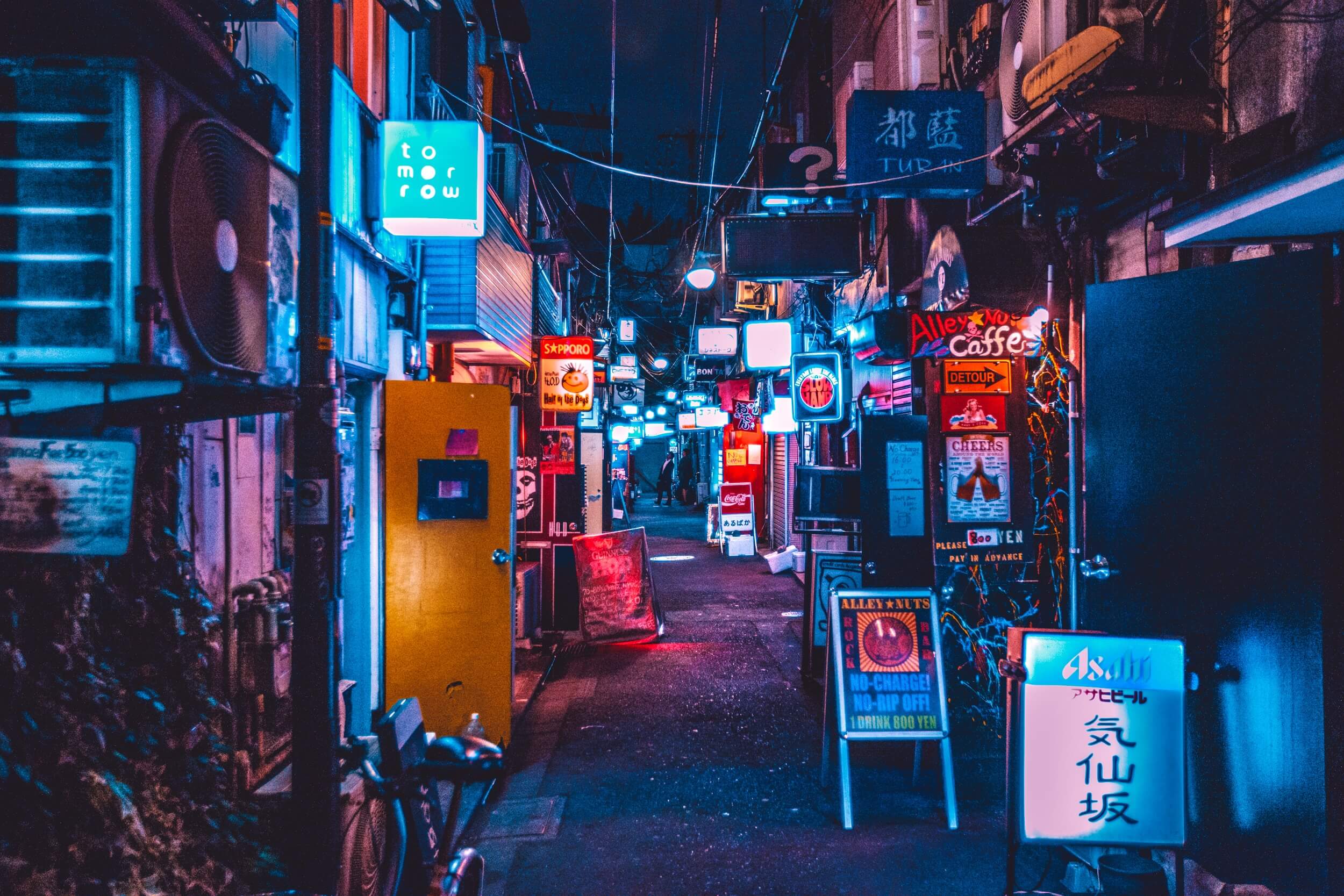
17. Cycle Through Kyoto or Tokyo
For serious cyclists, the Japanese countryside offers countless opportunities for distance rides (mountain biking is also popular in Japan). But even if you’re not looking to plan your whole trip around cycling, you can still fit some in while having fun exploring cities such as Kyoto and Tokyo.
Both are great cycling cities, especially when you’re winding your way through charming backstreets, away from the tourist centers. Think of it as a neighborhood stroll by bicycle, taking in quiet areas filled with authentic street life, old-fashioned shops, and neighborhood shrines and temples.
18. Trek Fushimi Inari Taisha Shrine
Like Arashiyama’s bamboo forest, Kyoto’s Fushimi Inari Taisha tends to draw huge crowds. Yet also like the bamboo forest, Fushimi Inari is nevertheless still worth visiting.
One way to minimize exposure to crowds is by coming here early in the morning before most travelers have had their morning tea or coffee. For a more off-the-beaten-path experience, hike up Mount Inari and you’ll see that gradually the selfie sticks give way to peace and quiet!
19. Eat Your Way Through Tsukiji’s Outer Market
Wait, didn’t Tokyo’s fish market move to Toyosu ? Yes, it did! But Tsukiji remains a must for food and market lovers. While the market’s wholesale operations have moved to the slightly out-of-the-way Toyosu, the jogai (outer market) at Tsukiji is still thriving.
In Tsukiji’s Outer Market you’ll find historic lanes and alleys packed with a colorful array of shops and small restaurants, not to mention atmosphere and charm to spare. For more info, see our guide to visiting Tokyo’s Tsukiji Market .
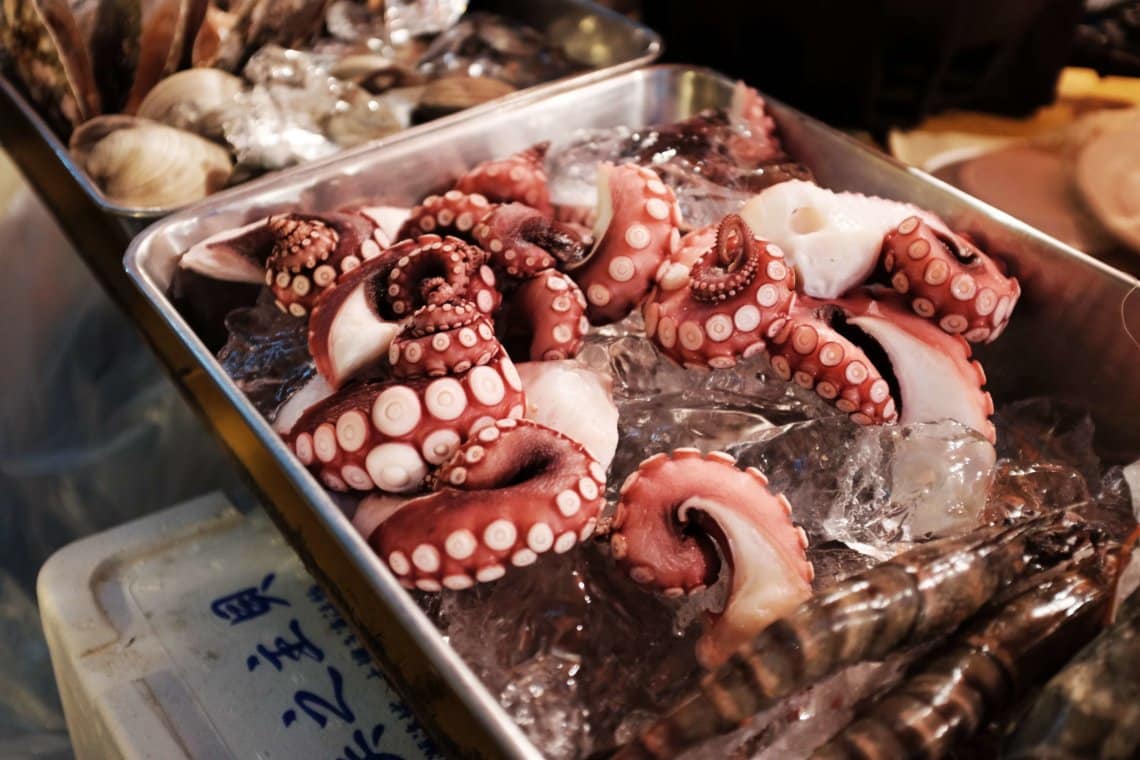
20. Climb or Admire Fuji-san (Mount Fuji)
As the old saying goes, there are two types of fools in the world: those who never climb Mount Fuji, and those who climb it more than once. On the way up you’ll see children and grandparents, and while not the most scenic trek, it is all worthwhile when you reach the summit in time for sunrise.
There are other great ways to admire Mount Fuji, as well. One is to visit Hakone , which offers good views of the mountain if and only if the weather is clear. For an even closer vantage point, and incredible views when it’s clear, head to the lakeside resort of Kawaguchiko. And for active travelers seeking a vigorous hike with views of Mount Fuji, there are some excellent off-the-beaten-path in the Fuji-san area.
21. Marvel at Japan’s Modern Architecture
Along with its traditional gems, Japan is home to some of the world’s most accomplished architects, and you’ll find stunning architecture throughout the country.
In Tokyo, you could spend hours strolling the main avenues and backstreets of the Ginza, Aoyama, and Omotesando neighborhoods, filled with iconic buildings by Japanese luminaries and Pritzker Prize winners. Throughout Japan, from tiny villages to major cities, you’ll come across the work of legendary architects such as Tadao Ando and Kengo Kuma, often in the most surprising of locations.
22. Find Zen in a Japanese Garden
Kyoto is particularly renowned for its wealth of gardens (not to mention shrines and temples ). Even beyond Kyoto, impeccable gardens abound in Japan, from stroll gardens like Kenrokuen in Kanazawa , to the gorgeous gardens of the Adachi Museum of Art. See our full guide to the best gardens in Japan .
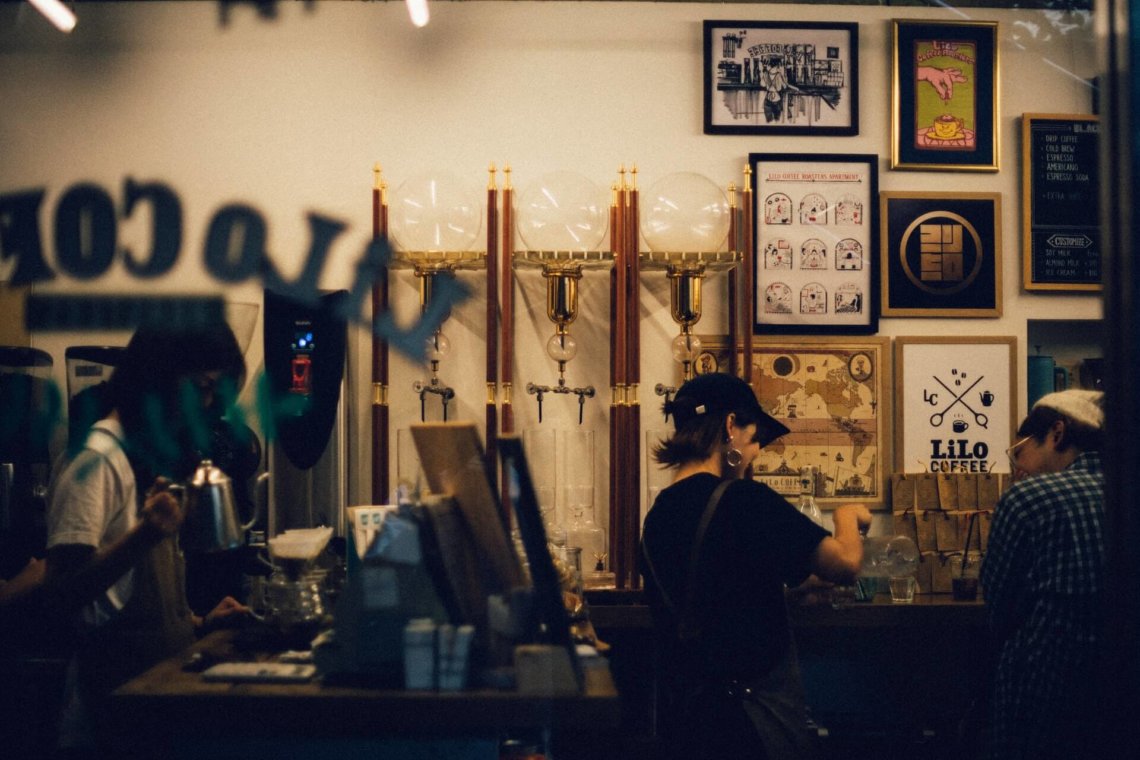
23. Experience Japanese Coffee Culture
Coffee has been an art form in Japan for decades, and while tea may still be a more prevalent part of traditional daily life, coffee is also deeply ingrained in Japanese culture. Throughout Japan you’ll find classic kissaten (old-school tea and coffee shops), where part of the experience is slowing down.
You come to a kissaten to sit for a while, chat quietly or read a book, and enjoy an expertly, laboriously prepared cup of coffee. As with most things in Japan, you’ll find that kissaten proprietors on the whole take a meticulous approach to quality and technique. At some shops, the obsession with perfection is taken to another level!
To complement your quaint kissa experiences, you’ll also want to seek out some of the modern temples of specialty coffee in Japan .
24. Savor Matcha , Genmaicha , and More
Even coffee-obsessed travelers should make sure to sample tea in Japan .
Though best known for green tea, while exploring Japan you’ll come across an incredible variety of teas, ranging from matcha and genmaicha , to tea made from sakura and more. Whether at a specialty tea shop, or as part of a tea ceremony, few things are more heartwarming than a thoughtfully prepared cup of matcha .
25. Visit an Original Japanese Castle
Lovers of history and traditional architecture should go out of their way to visit at least one original, preserved Japanese castle. Most castles you see in photos (for example, Osaka Castle) are reconstructions, with beautiful external appearances but lackluster interiors.
Japan retains a small but wonderful collection of preserved original castles including Himeji-jo (Himeji Castle), Matsumoto-jo (in the alpine city of Matsumoto ), Hikone-jo, Matsuyama-jo, and more. With gorgeous exteriors and captivating interiors full of intrigue, these national treasures are a must for history buffs.
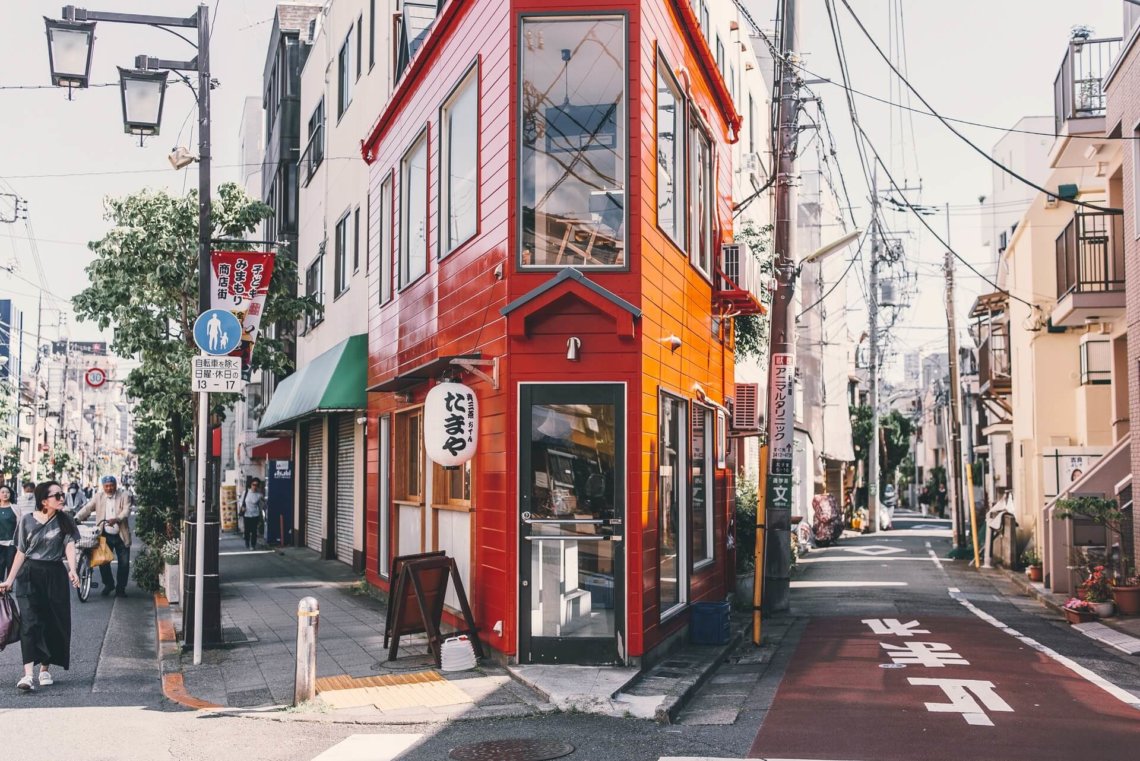
26. Get Lost in Tokyo’s Stylish Backstreets
Getting lost is not everyone’s idea of fun, but in a safe and gem-filled city like Tokyo, it can lead to some delightful travel experiences.
For expert insight to complement your wanderings, spend some time walking through the maze-like backstreets of Daikanyama and Naka-Meguro, two of Tokyo’s most unique neighborhoods , with a fun local guide. Leave the main streets behind as you find endless inspiration in the labyrinthine (and astoundingly quiet) lanes of these fashionable and picturesque districts.
27. Sip on Rare Japanese Whisky
One option for spirit lovers is to visit some of Japan’s whisky distilleries , but you don’t necessarily need to go to the source to enjoy some of the country’s best whisky.
There are few better places to drink Japanese whisky than in Tokyo (and other major cities, including Kyoto and Osaka), which are home to some of the best whisky bars on the planet. You can venture out on your own, or with a local whisky expert be introduced to exclusive whisky establishments where you can splurge on rare samples.
28. Experience Paradise in the Islands of Okinawa
The islands of Okinawa are home to stunning beaches, world-class scuba diving, and fascinating culture and history. In particular, the remote islands of Okinawa — such as the pristine Yaeyama Islands — feel worlds apart from mainland Japan. For culinary travelers, Okinawa’s food is also a highlight.
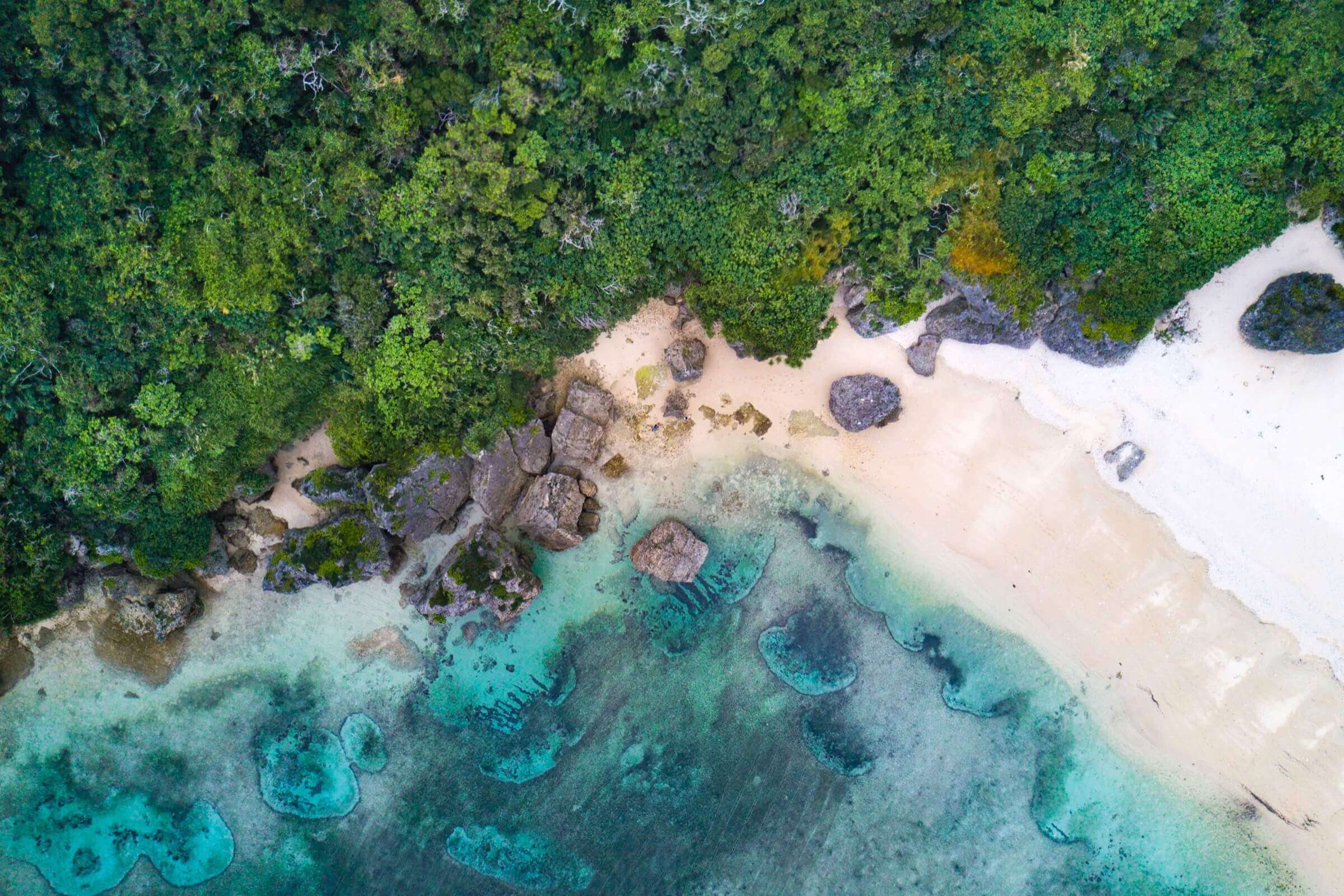
29. See the Famous Snow Monkeys in Nagano
Located in the mountains of Nagano Prefecture, animal lovers flock to the Jigokudani Yaen Koen (Snow Monkey Park) to see Japan’s famous snow monkeys up close. While possible to visit throughout the year, the best time to visit the onsen -loving snow monkeys is in deep winter, when the landscape is completely covered in snow.
30. Obsess Over Japan’s World-Class Baked Goods
It’s easy to focus on Japanese cuisine when traveling through Japan, but for lovers of bread, croissants, and pastries, do not miss out on enjoying baked goods while in Japan! You can find top-quality bakeries and patisseries around the country, from the remote countryside of Hokkaido, to cities like Osaka and Tokyo. While you’re at it, make sure to save a meal for one of Japan’s legendary pizza specialists, too.
Japan Has Even More Amazing Places to Experience
Whether you usually plan your own trips, or normally work with a destination expert, planning a trip to Japan can seem overwhelming at times.
At Boutique Japan, our specialty is crafting completely customized trips for travelers seeking unique, authentic experiences. If you are interested in learning more about working with us, please feel free to explore our trip planning process .
More Great Posts

Japan’s Best Boutique and Luxury Hotels & Ryokans
The best hotels and ryokans in Japan range from charming traditional inns in the countryside, to stylish design hotels and…

Traveler’s Guide to the JR Pass (Is It Worth It?)
The Japan Rail Pass (or JR Pass, for short) can be a good way to get around Japan, but many…

Major Holidays and Peak Travel Seasons in Japan
If you’re considering a trip to Japan during one of the country’s peak travel seasons, be aware that things can…
Plan Your Japan Trip
Learn more and contact us to discuss your unique trip.
Get Started
- The Process
- Testimonials
- Where to Stay
- Where to Eat
- Best Time to Visit Rome
- Top 10 Tips for Rome
- Bathrooms in Rome
- What to Pack & What to Wear
Money Matters
Getting Around
Getting to Rome
- Learn Italian
- Can You Travel to Rome Right Now?
- Italy Green Pass - do you need one?
- Rome Coronavirus News & Updates
- Rome & Vatican Tours
- Italy Tours
- Transfers & Transport
- Sign up & get a FREE ebook Subscribe Today!
- Romewise Home Page
- Rome Italy Colosseum
- Colosseum Full Experience
Colosseum Full Experience Tickets

By Elyssa Bernard
Updated April 8, 2024
What is the Colosseum Full Experience?
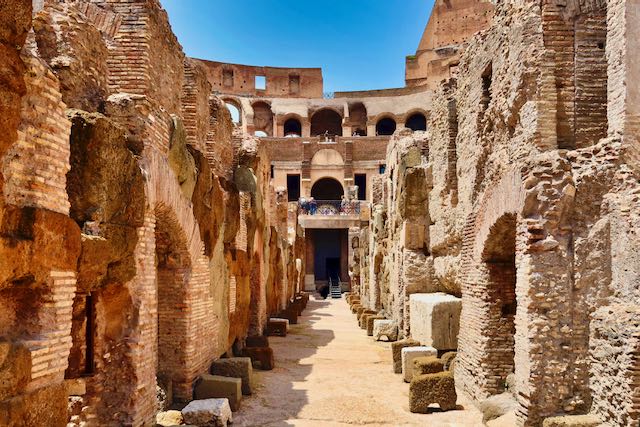
This new ticket allows you to to see much more than "just" the Colosseum.
Find out all that's included, how to get tickets, and how to plan your visit.
Colosseum Full Experience - everything you need to know
It's easier than ever to visit the Colosseum arena, upper levels (attic) and underground.
These visits are now part of a new ticket called the " Full Experience ." But this ticket is much more than that.
On this page, we'll go over:
What is the Colosseum full experience ticket?
How much does the full experience ticket cost, what's included, how does the colosseum full experience work.
- How long does it take to visit the Colosseum with the Full Experience ticket?
- Do you have to take a tour with the Colosseum Full Experience?
Can you use the Roma Pass with the Full Experience ticket?
In recent years, the Colosseum Archeological Park (which includes the Roman Forum and Palatine Hill ) have been making a lot of new things available to visit, both inside the Colosseum, and inside the Roman Forum / Palatine Hill.
They have been experimenting with different tickets and ticket combinations.
At the time of this writing in spring 2024, there are now two types of tickets regularly available for visiting the Colosseum, a standard ticket and a Full Experience ticket .
Just as it sounds, the Colosseum Full Experience ticket gives you more to see and more time to see it in.
Let's dig in and see what's included and how to plan your visit.
Colosseum Ticketing Update April 2024
A brand new ticket system has been launched for tickets to the Colosseum, Roman Forum, Palatine Hill and Domus Aurea - check it out here .
A few things to note with this new system:
1. It only applies for tickets from May 1 2024 onwards . If you want to purchase tickets for April 2024, you will need to use the old CoopCulture website.
2. Tickets are currently being released a month out, day by day . On April 8 tickets for May 8 became available, on April 9 tickets for May 9 get released and so on.
3. The new website has a system which puts visitors in a digital queue before letting them on to the site itself, to stop the site crashing due to demand, so don't worry if you don't get onto the site immediately.
4. Not all ticket/tour options are available to purchase yet so keep checking back if what you want isn't available.
🤙 Roaming in Rome? 📱
Get yourself an Italian eSIM for calls, messages and data when traveling here.
Save on data charges with plans from just 19€ from Holafly - our recommended eSIM provider!
Click here to get yours now and use code ROMEWISE to save 5%!
The new Full Experience ticket costs 24€.
The same conditions apply (discounts and free entry ) as for the standard Colosseum ticket.
The cost is still 2 € for European citizens aged 18-25, and free for everyone under 18.
For regular and discounted tickets there is a 2 € reservation fee.
Free tickets
Everyone under 18 is granted free access to the Colosseum, Roman Forum, Palatine Hill for regular and Full Experience tickets, and the Roman Forum SUPER pass.
For the regular and Full experience tickets, the way to get tickets for kids under 18 is simply to show up on site and collect them at one of the ticket booths.
You cannot book this free ticket on Parco Colosseo.
Book your own tickets, come to the Colosseum on the day of your visit, and go to any one of the ticket booths, outside or inside the monument, and collect your kids’ free tickets.
As of October 18, 2023, all Colosseum tickets will be nominative.
This means that your ticket will have your name on it, and you’ll have to show ID to prove you are the person whose name is on the ticket.
ANY valid photo ID will do, including your driver’s license.
You can also show your ID on your phone as long as it has your photo.
You do NOT need to bring your passport.
They also confirmed that a photocopy of your passport will suffice, as long as it’s clear.
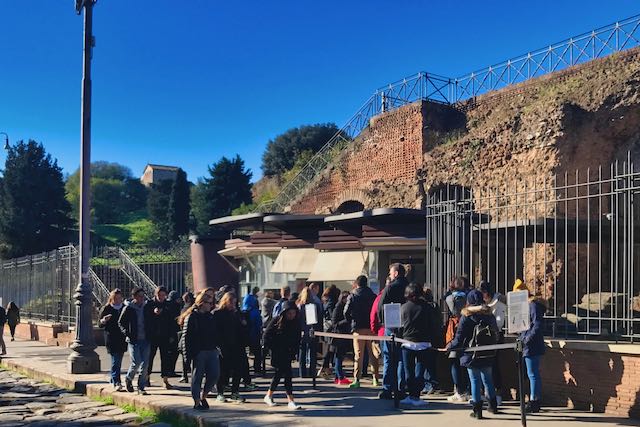
NEW FOR 2023
The Colosseum has opened a dedicated set of rooms for families, called the 'Baby Pit Stop' which you should take full advantage of if needed.
This is for families with young children to take a break if the crowds and size of the arena get too much, as well as providing baby changing facilities and a quiet place to breastfeed. Find it on the second floor.

Disclosure: If you make a purchase through a link on this page, I may receive a small commission - at no extra cost to you. Thank you for supporting my site!
When you book the Colosseum Full Experience ticket, you get:
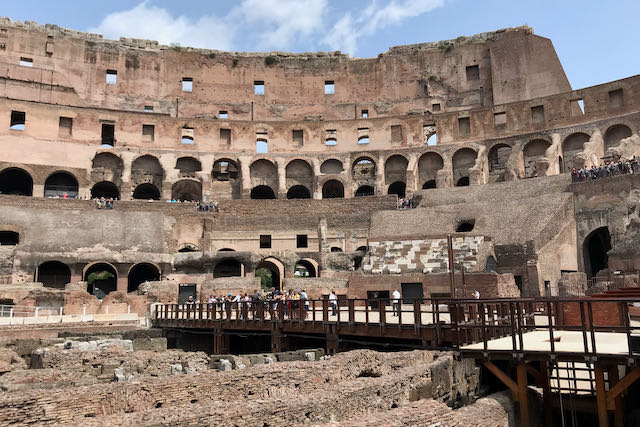
- 2 days to use the ticket
- One entrance to the Colosseum, including:
- One entrance to either the Colosseum arena floor, the upper levels called the Attic OR to the Colosseum Underground (although a visit to the underground ALSO includes a visit to the arena).
- Whether you visit the Colosseum arena, Attic or the Colosseum underground (and arena), you will be accompanied by a staff member of the Colosseum . You are not allowed to visit these areas on your own. This is NOT a guided tour although you can also book a tour.
- Entrance to the Palatine Hill/Roman Forum AND all the S.U.P.E.R. sites (some of which may or may not be open at any given time).
- Entrance to the Imperial Forums (Julius Caesar and Trajan.)
All about the Rome Colosseum
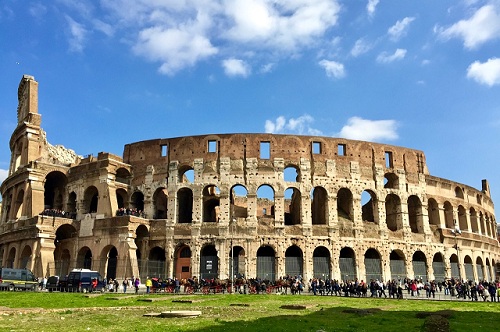
I have visited the Colosseum arena, attic and underground with the Full Experience ticket on several occasions, and can tell you exactly what it's like.
Check out my videos of these sites:



Booking your Colosseum Full Experience Tickets
As I mentioned, you must first purchase the Full Experience ticket, in advance. The easiest way to do this is online.
You may be able to book for the same day you want to visit but when it's high season , you may not find availability if you leave it too late.
I really recommend booking as far in advance as you can to avoid any disappointment.
If you don't find availability on Parco Colosseo, you can also try booking on a ticket agency website. They may have more availability. (There is a small surcharge to book.)
How to plan your full experience visit

Here's how the Full Experience Rome Italy Colosseum ticket works:
- You have 2 days to visit the sites above.
- You can only visit each site once (no re-entry). This means you can and must visit the Colosseum together with the arena, attic OR underground on the same day.
- The Roman Forum and Palatine Hill are actually ONE park , so you have to visit them together in one visit, along with any SUPER sites you want to see. There is no re-entry.
- You CAN visit everything in one day if you want. You can also take a lunch/coffee break between visits to the Colosseum and the Roman Forum/Palatine Hill.
- If you break this up over two days , you can visit the Colosseum and its related special access (area or underground) on one day, and the Roman Forum/Palatine Hill/SUPER sites another day. You can visit these sites in either order (i.e. you can visit the Palatine/Forum the day before the Colosseum), but they must be on two consecutive days .
So for example, let's say you book a visit to the Colosseum Underground for Wednesday at 2 pm. You will be accompanied to the underground and also the arena floor (around 45 minutes total), and then you will be brought back to the main Colosseum area to finish your visit on your own.
Depending on your energy and interest level, you might spend another hour or so exploring the Colosseum main 2 levels.
At this time, the upper levels of the Colosseum are not open for visits.
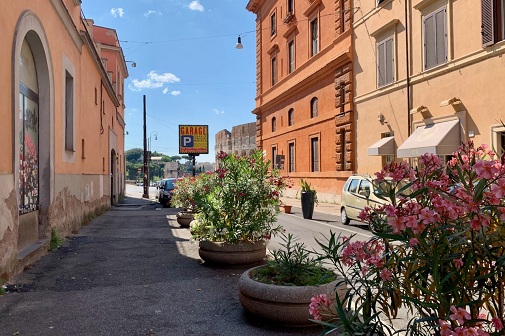
You will probably finish this visit sometime around 4:30 pm give or take.
If you are visiting Rome in summer , the park is open until 7 pm, with last entry at 6 pm. (In Rome in winter , the Colosseum and Forum /Palatine all close around 4:30 pm.)
So if the park is open late, you could still enter the Roman Forum /Palatine Hill after your Colosseum visit on this day. But you would not really have time to visit it well, nor to visit the S.U.P.E.R. sites.
Your options include visiting the Roman Forum /Palatine Hill the day before, the same morning as your Colosseum visit, or the day after.
When you visit the Roman Forum /Palatine Hill, you do not need to book a day and time, unlike the Colosseum.
So once you have your Colosseum Full Experience ticket booked, you can decide when to visit the Roman Forum /Palatine Hill, and just go.
The perfect 3-day itinerary in Rome
Trying to figure out how to organize your visit to Rome? I've got the perfect 3-day itinerary for first-time visitors (or those who have not been here in a while.) It works for a 2.5 day visit as well.
In my 3-day itinerary, you'll see all the major must-see Rome attractions like the Vatican , Colosseum , Trevi Fountain , Pantheon , Piazza Navona , Spanish Steps , Castel Sant'Angelo , and much more.
And if you have more time, or want suggestions for extra/other things to do, you'll find that there too.
Visit my page with the best 3-day itinerary in Rome for first-timers .
How long does the Colosseum Full Experience last?
A visit to the Colosseum alone takes around an hour give or take (this really depends on you but plan for about an hour for a typical visit.)
A visit to the underground + arena takes around 45 minutes.
A visit to just the arena takes around 15-20 minutes.
So your total Colosseum Full Experience could take anywhere from around 1.5 - 3 hours.
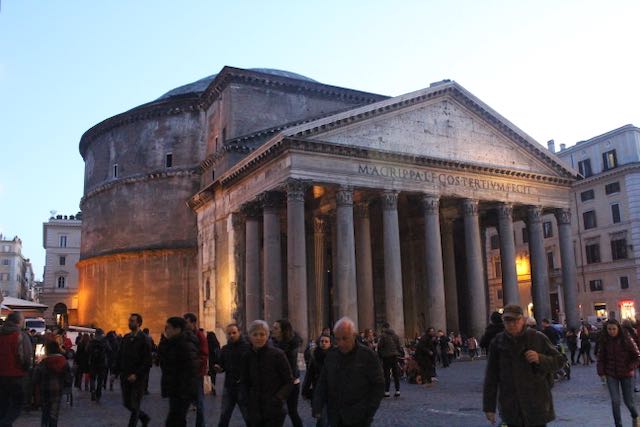
Visiting the Roman Forum / Palatine Hill with the Full Experience ticket
Visiting the Roman Forum / Palatine Hill without any of the S.U.P.E.R. sites can take anywhere from 2 hours and up.
Visiting ALL the S.U.P.E.R. sites could theoretically take all day but you will likely only visit a few. They are usually not all open on the same day in any case.
I would plan for a minimum of 3 hours inside the Roman Forum /Palatine Hill but you can spend as long as your energy and interest allows.
Ready to plan your trip?
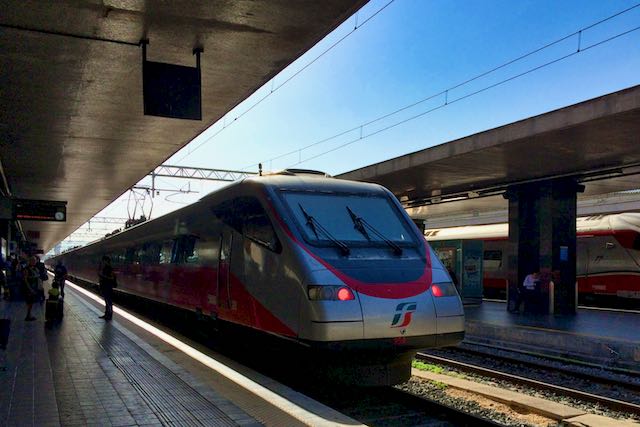
No time limit
One nice thing about visiting these sites, whether the Colosseum or the Roman Forum / Palatine, is that there is no time limit as to how long you can stay inside.
For the Colosseum Underground and / or arena floor and Attic, those visits are accompanied and timed, but the part where you explore the main and upper floor of the Colosseum is not. Same for the Roman Forum / Palatine.
So you will have to decide how much time you have available and how much time you really want to spend in each site.
That's another reason the Colosseum Full Experience ticket is so great - you can break up the visit over 2 days and really take your time with each site if you want to.
Booking the Colosseum Full Experience ticket through PArco colosseo
When you book your visit to the Colosseum with the Full Experience on the Parco Colosseo website , and you choose either the underground, attic or arena, you will have the option to book just a basic visit or a guided tour.
On the basic visit (22 € + 2 € booking fee) you will have a staff member of the Colosseum accompany you on the underground, the attic , and arena floor. You cannot visit these areas on your own .
The visit to the underground, the attic and the arena is timed and led, but not really guided. It is not considered a tour.
Once you finish with the special visit portion of the Colosseum, the same staff member will guide you back to the main area of the Colosseum so you can continue your visit of the monument on your own.
When you visit the Palatine Hill / Roman Forum with the Full Experience ticket, you will be on your own.
However, at certain S.U.P.E.R. sites (the House of Augustus) you will be accompanied by a park staff member.
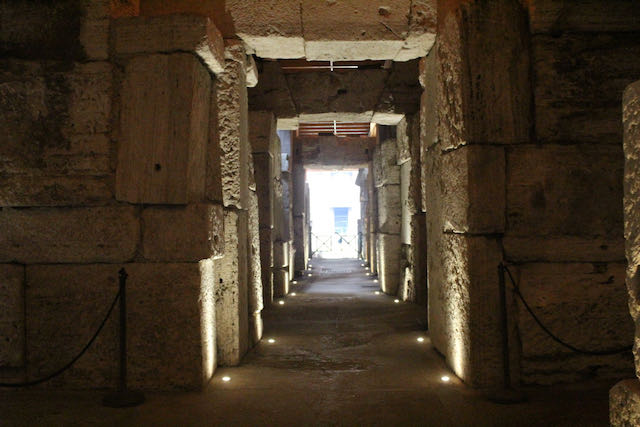
Audio guides
Once inside the Colosseum, you can rent an audio or video guide.
Once inside the Palatine Hill / Roman Forum, you can rent an audio or video guide as well.
The Parco Colosseo is now suggesting all visitors download the Parco Colosseo app for both Android and Apple to access a free audio guide.
Booking the Colosseum Full Experience as a tour
If you do want a guided tour of any of this, you have several options.
- Book the arena, the attic or underground tour through Parco Colosseo.
- Book a more complete tour with a tour agency like Get Your Guide . This will give you a tour guide that covers not just the underground and/ or arena, but also the Colosseum and the Roman Forum /Palatine Hill.
At this time, they do not have any details about using the Colosseum Full Experience with the Roma Pass or other Rome city pass .
When they update this, I will update this page.
Want to save this page about the Colosseum Full Experience to Pinterest? Pin it here!
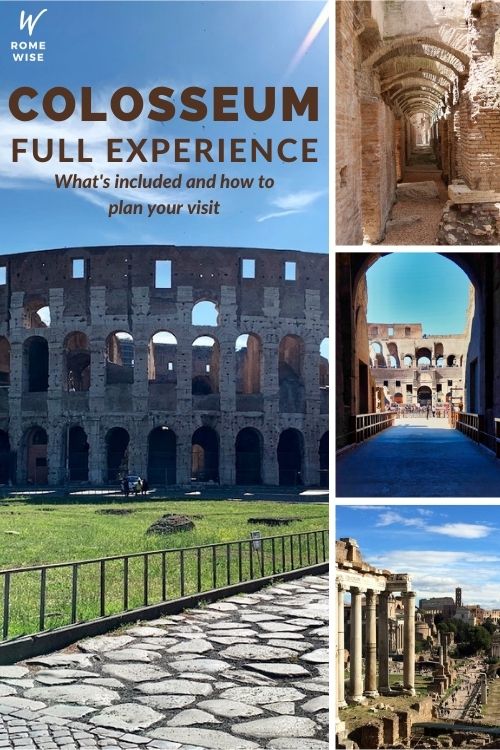
Get your 100% free Rome trip planner now!
Simply sign-up today for our free newsletter and get the Romewise Quick Start guide to Rome:
We are committed to respecting your data. Click for our Privacy Policy .
Comments? Questions? Suggestions?
Please come over to the private Romewise Facebook group and join in the conversation.
You will often find me there, happy to answer your questions / comments!
You will also meet other Rome lovers and experts, too.
What are you waiting for?
Come join in the fun !

Read here about our sponsorship policy
Top attractions and tours

- Colosseum - Don't miss visiting Rome's most iconic monument
- Vatican Museums - This is where the Sistine Chapel is
- Pantheon - Book ahead and skip the line
- Galleria Borghese - You'll need to book ahead for one of Rome's best museums
- Castel Sant'Angelo - See Rome's history through its architecture
- Rome City Pass - A great way to make your Rome visits easier
Disclosure : If you make a purchase through a link on this page, I may receive a small commission - at no extra cost to you. Thank you for supporting my site!
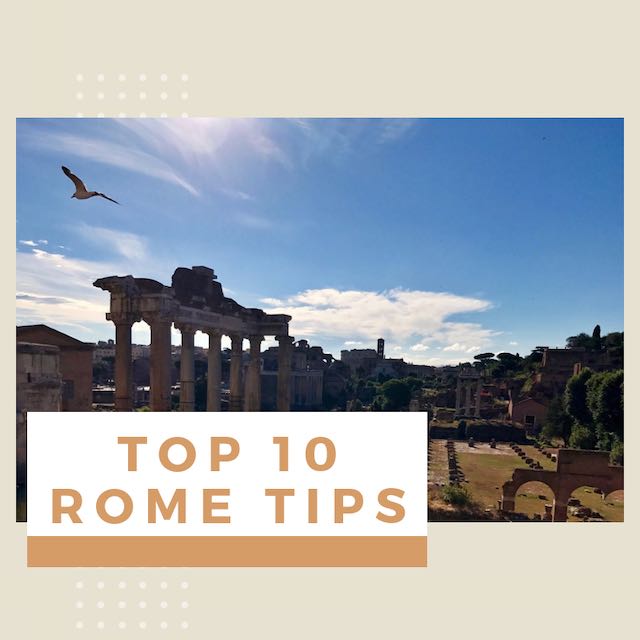
New to Romewise? Start Here
Get the most out of Romewise
Coming To Rome?
Weather in Rome
Accommodation
Already in Rome?
Things to Do
Home | About Me | Privacy Policy | Legal Disclaimer | Affiliate Disclosure | Contact Me
Copyright © 2009-2024 by Elyssa Bernard, Romewise.com | All Rights Reserved.
Japan Experience, far more than a trip
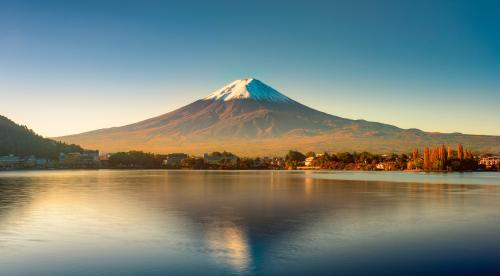
The Leading Japan Travel Specialist
Trusted by more than 300,000 travelers each year
Direct Assistance and Support
Our team of passionate individuals works with you directly, no intermediary needed
A trip made just for you
All of your Japan travel essentials in one place
Japan Experience, travel specialist to Japan since 1981
- JAPAN RAIL PASS
- TRAIN TICKETS
- REGIONAL PASSES
Travel specialist to Japan since 1981
Japan Experience offers you travel packages that adapt to your desires while offering an immersion in the Japanese culture and daily life.
Our unique and diverse catalog adapts to your desires: Japan Rail Pass, tours, accommodation, activities, car rentals, and various travel products. Japan Experience accompanies you on every aspect of your stay anchored by 40 years of experience and our knowledgeable passionate travel advisers.
Japan Rail Pass National & Regional
Train Tickets
- House rentals
Internet access
Tailor your train travel
Making train travel even easier
Through an official partnership with the National Japan Railways Group (JR) , Japan Experience becomes the first and only authorized seller of train tickets outside Japan.
It allows travelers to customize their train itineraries, preferences, and timing without committing to a multi-use pass that may not fully align with their journey 🚅.
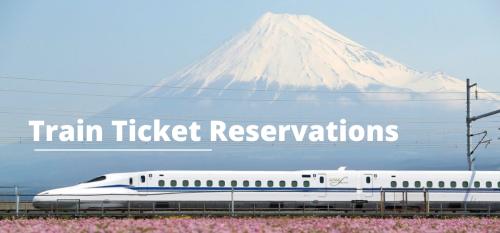
Golden Week Travel Advice
Golden Week in Japan is a bustling time of celebration and travel.
Our comprehensive guide provides crucial advice and insider tips to ensure your travel is as smooth and enjoyable as possible. Learn how to make the most of your journey during one of the busiest travel seasons in Japan.

Our top recommendations
- Rail Passes & Tickets

Tokyo, Mount Fuji & Kyoto Self-Guided Tours in Japan
- Included : Airport Transfers, 3* Hotels & Ryokan, Non-flight transportation, Guided activity, Travel diary, Pocket wifi, Assistance
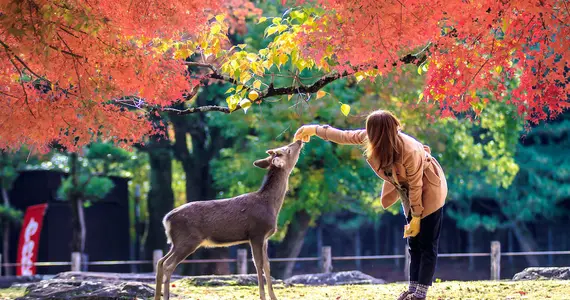
Japan family tour Self-Guided Tours in Japan
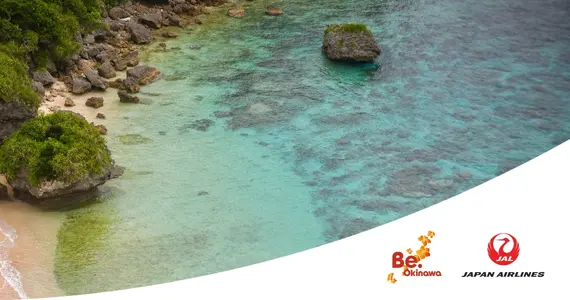
Tokyo to Okinawa beaches Self-Guided Tours in Japan
- Included : Airport Transfers, 3* Hotels & Ryokan, Japan Experience house, Ferry, Guided activities, Travel diary, Pocket wifi, Assistance
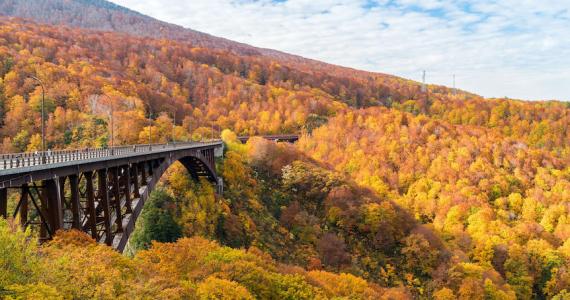
Northern trains: from the Sea of Japan to the Pacific Our excursions in Japan
- Included : 3* Hotels, Scenic train rides, Rural landscape, Local foods, Hot springs
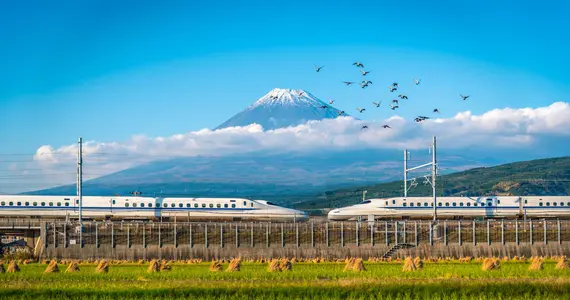
Japan Rail Pass National Discover all Rail Passes in Japan
- Included : Economic and simple, Unlimited travel
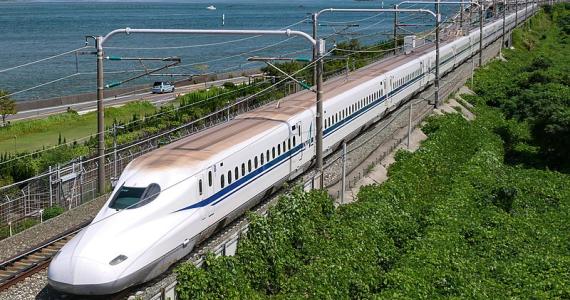
KANSAI HIROSHIMA JR Pass Regional Japan Rail Passes
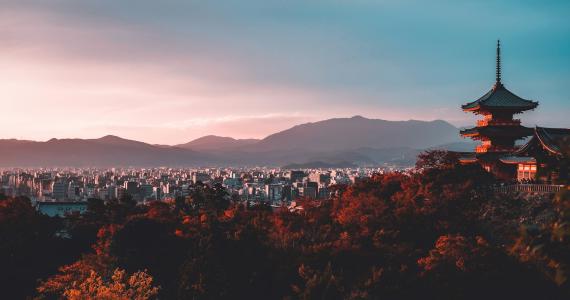
Train Tickets from Tokyo to Kyoto Train Tickets in Japan
Tokyo › Kyoto
- 06:00 / 21:24
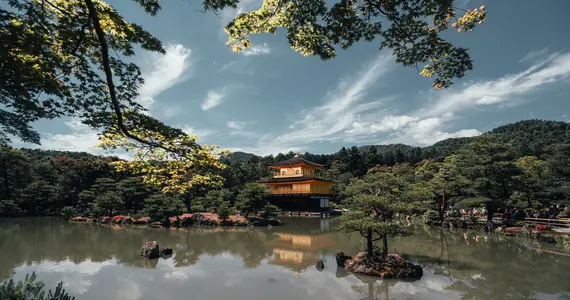
OSAKA-TOKYO HOKURIKU Arch Pass Regional Japan Rail Passes

Between Manga and Tradition Self-Guided Tours in Japan

Honeymoon in Japan Self-Guided Tours in Japan
- Included : Airport Transfers, 3* Hotels & Ryokan, Japan Experience house, Non-flight transportation, Guided activities, Travel diary, Pocket wifi, Assistance
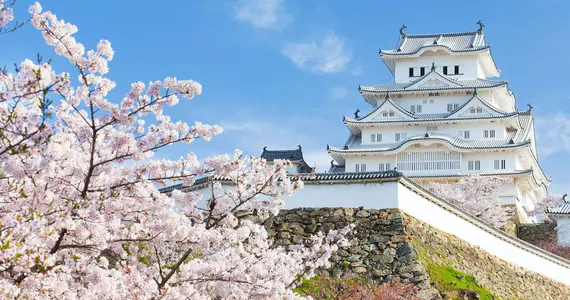
Highlights of Japan Self-Guided Tours in Japan
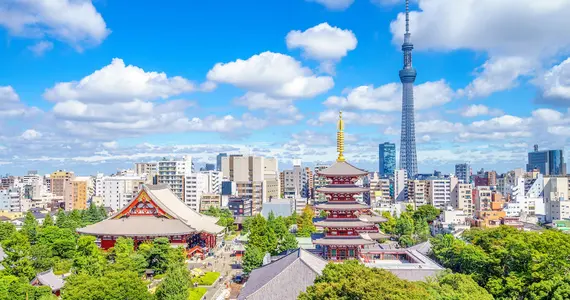
Tokyo & Kyoto Self-Guided Tours in Japan
- Included : Airport Transfers, 3* Hotels, Non-flight transportation, Guided activity, Travel diary, Pocket wifi, Assistance
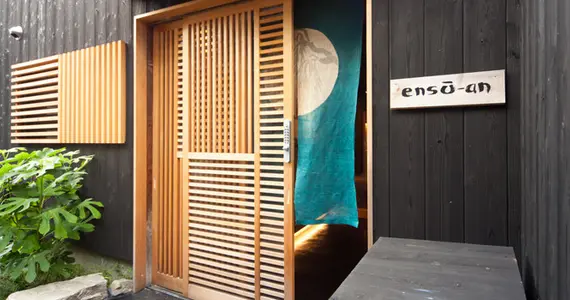
Enso-an Rent a house in Kyoto
Kiyomizu, Kyoto
- 8 travelers
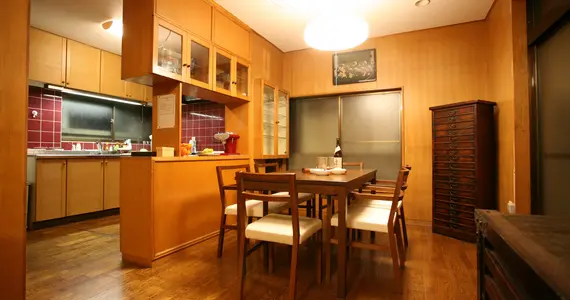
Ikebukuro Rent a house in Tokyo
Kami-Ikebukuro, Tokyo
- 7 travelers
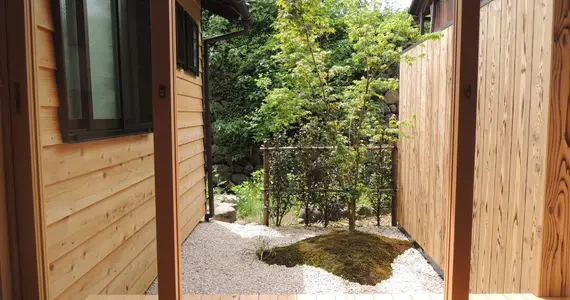
Kenroku Rent a house in Kanazawa
Higashiyama, Kanazawa
- 5 travelers
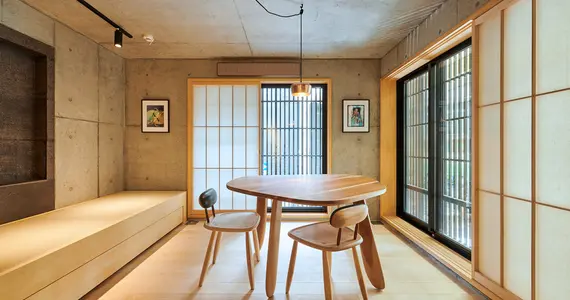
DELTA STAY Rent a house in Kyoto
Demachiyanagi, Kyoto
- 2 travelers
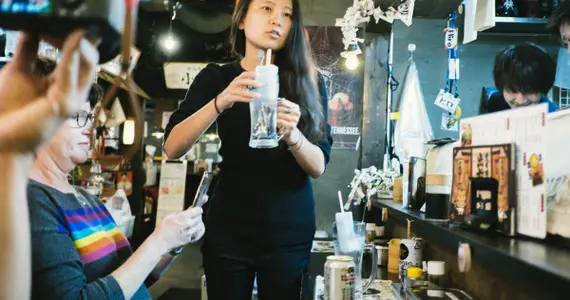
Gastronomic stroll through Osaka Activities in Osaka

Découvrez la coutellerie japonaise à Sakaï Activities in Osaka

The art of Bonsai Activities in Tokyo
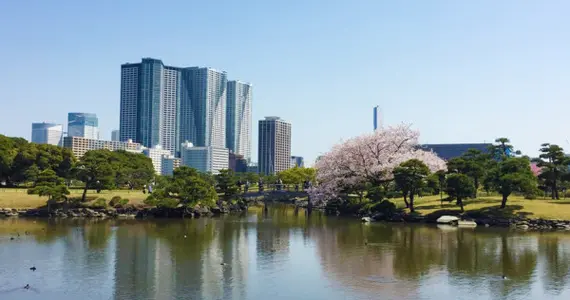
Edo Gardens - private tour Activities in Tokyo
Our latest articles
Discover our latest articles and news to know everything about Japan
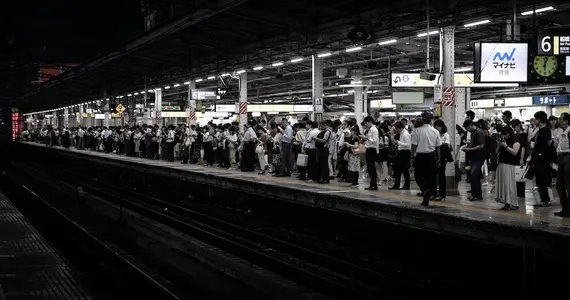
Japan will celebrate Golden Week from April 29 to May 6, 2024 , which comprises four national holidays: Showa Day on April 29, Constitutional Memorial Day on May 3
See the article

Tokyo Fashion Week as a visitor to Japan
Undeniably influential to the development of the modern fashion landscape, Tokyo is widely considered a mecca for fashion enthusiasts for its distinct range of aesthetics and environment that allow
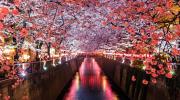
Where to admire the cherry blossoms in spring
Japan is renowned for its distinct and beautiful seasons. One of the most eagerly awaited is undoubtedly spring, with the blossoming of the sakura cherry trees.

Street food in Asakusa: Indulge in culture and cuisine
One of the most iconic locations in Eastern Tokyo is Asakusa, largely cited as the main hub of Tokyo’s “Shitamachi.” Shitamachi refers to one of the two major historic districts of Tokyo, and the n
Explore Japan your way
Discover Japan through our different travel themes

Markets in Japan

Onsen, Hot Springs and Public Baths
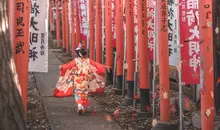
Family Travel
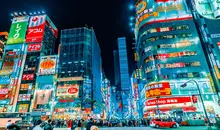
Nightlife in Japan: Going out, exploring and drinking

Temples and Shrines
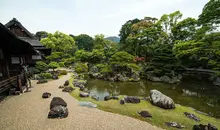
Parks and Gardens
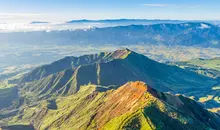
Outdoor Activities
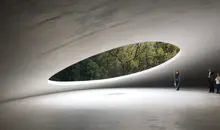
Museums and Galleries

Restaurants and Cafes
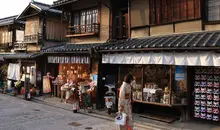
Shopping and souvenirs

Japanese Pop Culture
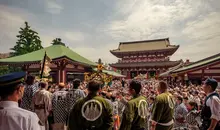
Events and Festivals
Find your ideal destination
The best cities to explore for your next trip to Japan
Popular cities Choose a city
Find all you need to know about Tokyo, Japan's bustling capital: Tokyo area guides, Tokyo parks, Tokyo museums and the city's restaurants and bars.
Kyoto, the former imperial capital, is the most visited city in japan after Tokyo. It is traditional, spiritual, gastronomic and modern all at once, the city is an infinite source of fascination for those who explore it. Visiting Kyoto is an opportunity t...
This medium-sized city, nestled between the Sea of Japan and the Japanese Alps, has plenty to offer travelers: exceptional historical sites, renowned art museums, traditional cuisine and refined craftwork. Kanazawa is a must-see destination.
Some impressions endure time and appeal to generations to come. In Japan, Osaka is always looking to the future. A major hub of innovations, the economic capital of Kansai has a taste for commerce, audacity, and hospitality. Today, Osaka is the third...
Nara is located in the Kansai region and was Japan's first imperial capital. Nara has a wealth of historical and cultural heritage and of course deer. Home to many treasures that would be a shame to miss on your visit to Japan.
What is Hiroshima about? Of a trauma, that of the first atomic bombing, the atrocity of nuclear fire revealed to humanity. Of an ideal, that of a radical and unapologetic pacifism that constantly reminds the world of the true face of war. A city, last but...
Our tours in Japan
It is time to explore Japan!
Japan Experience offers unlimited vacation possibilities to explore Japan . Our tours are the best way to ensure that you do not miss seeing any of the highlights of Japan .
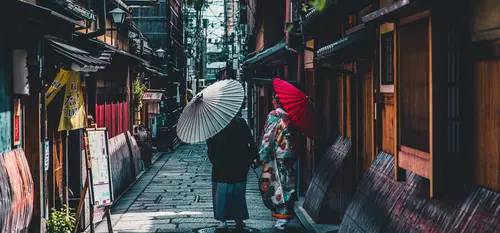
© Andre Benz, Unsplash
Discover all of our products to travel in peace
How to access internet in japan .

Access the internet from anywhere in Japan with our connection solutions. Rent a Pocket Wifi, buy a Data Sim Card or an eSIM for your trip and stay connected while enjoying Japan to its fullest!
A0909C1A-93FB-4548-8F2A-CE5CA53C0BF6 Created with sketchtool. Prepaid Cards
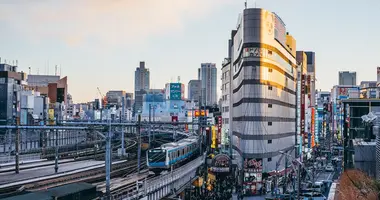
The Suica Card and Pasmo Card are a pre-paid top up card that allows you to use most public transport (metro, trains and buses) in Japan.
Discover all Rail Passes in Japan
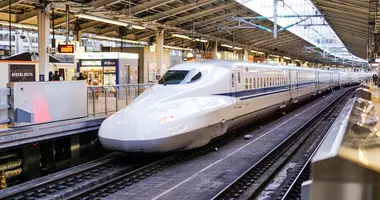
Best quality/price ratio for unlimited travel and, the Japan Rail Pass is the ideal travel solution, and the best way to discover Japan by train!
What our customers say about us
Your opinion is important
Contact our experts for tailor-made advice
Our travel advisors are standing by to organize your trip to Japan!
- Los Angeles
30 rue Sainte Anne
Open Monday to Saturday from 10am to 7pm Closed: Sundays and public holidays
Phone|t +33 (0) 1 42 61 60 83
Contact us Contact us
Suite 14 137-139 High Street Beckenham
- United Kingdom
Open Monday to Friday from 10am to 6pm Closed: weekends and public holidays
Phone|t + 44 (0)20 3514 6932
Calle San Bernardo 17 – 7º
Phone|t +34 91 198 31 75
Wallstraße 9-13
Phone|t +49 (0) 30 31199701
100 W Broadway Long Beach
United States
Open Monday to Friday from 9am to 3pm, Pacific Time. Closed: weekends and public holidays
Phone|t +1 800 835 6135
Apt. 701, Sepia Ikebukuro II, 2-55-12 Ikebukuro
Phone|t +81 (0) 3 4520 7099
Please select your country on the list below:
- Switzerland
- Other countries
U.S. tourist faces 12 years in prison after taking ammunition to Turks and Caicos
An Oklahoma man faces up to 12 years in prison on a Caribbean island after customs officials found ammunition in his luggage.
Ryan Watson traveled to Turks and Caicos with his wife, Valerie, to celebrate his 40th birthday on April 7. They went with two friends who had also turned 40.
The vacation came to an abrupt end when airport staff members found a zip-close bag containing bullets in the couple's carry-on luggage. Watson said it was hunting ammunition he had accidentally brought with him — but under a strict law in Turks and Caicos, a court may still impose a mandatory 12-year sentence.
"They were hunting ammunition rounds that I use for whitetail deer," Watson told NBC Boston in an interview conducted last week that aired after their first court appearance Tuesday.
"I recognized them, and I thought, 'Oh, man, what a bonehead mistake that I had no idea that those were in there,'" he said.
The couple were arrested and charged with possession of ammunition. Authorities seized their passports and explained the penalties they faced.
Valerie Watson said in the interview: "When I heard that, I immediately was terrified, because I was like we can't both be in prison for 12 years. We have kids at home, and this is such an innocent mistake."
The charges against her were dropped, and she returned home to Oklahoma City on Tuesday after the court hearing to be reunited with her two young children.
"Our goal is to get Ryan home, because we can’t be a family without Dad," she said.
The couple also spoke about the financial burden of a much longer-than-planned trip. "This is something that we may never recover from," Ryan Watson said.
The U.S. Embassy in the Bahamas issued a warning to travelers in September about a law that strongly prohibits possession of firearms or ammunition in Turks and Caicos, an overseas British territory southeast of the Bahamas that is a popular vacation spot.
It said: "We wish to remind all travelers that declaring a weapon in your luggage with an airline carrier does not grant permission to bring the weapon into TCI [Turks and Caicos Islands] and will result in your arrest."
The embassy added: "If you bring a firearm or ammunition into TCI, we will not be able to secure your release from custody."
The embassy and the government in Turks and Caicos did not immediately respond to requests for comment.
The same thing happened to another American, Bryan Hagerich, of Pennsylvania, who was arrested after ammunition was found in his luggage before he tried to board a flight out of Turks and Caicos in February. He said he accidentally left it in his bag.
Hagerich was on a family vacation with his wife and two young children but has now been in the country for 70 days. He spent eight days in prison before he posted bail.
"It’s incredibly scary. You know, you just don’t know what the next day may bring — you know, what path this may take," Hagerich told NBC Boston.
"You know, it’s certainly a lot different than packing your bags and going away with your family for a few days. It’s been the worst 70 days of my life," he said.
Hagerich, once a professional baseball player, was drafted by the Florida Marlins in the MLB 2007 June amateur draft from the University of Delaware.
His case goes to trial May 3.
Patrick Smith is a London-based editor and reporter for NBC News Digital.
- Election 2024
- Entertainment
- Newsletters
- Photography
- Personal Finance
- AP Investigations
- AP Buyline Personal Finance
- AP Buyline Shopping
- Press Releases
- Israel-Hamas War
- Russia-Ukraine War
- Global elections
- Asia Pacific
- Latin America
- Middle East
- Election Results
- Delegate Tracker
- AP & Elections
- Auto Racing
- 2024 Paris Olympic Games
- Movie reviews
- Book reviews
- Personal finance
- Financial Markets
- Business Highlights
- Financial wellness
- Artificial Intelligence
- Social Media
More than just a bowl of noodles, ramen in Japan is an experience and a tourist attraction
Spicy, steaming, slurpy ramen may be everyone’s favorite Japanese food. In Tokyo, long lines circle around blocks, and waiting an hour for your favorite ramen is normal. What awaits might just be a dive, but a hot bowl of ramen rarely fails to hit the spot. (AP Video/Hiromi Tanoue and Ayaka McGill)
A staff member prepares small bowls of noodle for participants of Tokyo Ramen Tours at Shinbusakiya, a ramen shop which offers “Hokkaido classics,” at Shibuya district on April 2, 2024, in Tokyo. (AP Photo/Eugene Hoshiko)
- Copy Link copied
Participants eat the noodle at Shinbusakiya, a ramen shop which offers “Hokkaido classics,” during Tokyo Ramen Tours at Shibuya district on April 2, 2024, in Tokyo. (AP Photo/Eugene Hoshiko)
Frank Striegl, standing at center, a guide of Tokyo Ramen Tours, explains foreign participants of a ramen tasting tour at Nagi which offers “Fukuoka fusion,” type ramen at Shibuya district on April 2, 2024, in Tokyo. (AP Photo/Eugene Hoshiko)
Frank Striegl, center, a guide of Tokyo Ramen Tours, leads several participants of a ramen tasting tour near Shibuya pedestrian crossing at Shibuya district on April 2, 2024, in Tokyo. (AP Photo/Eugene Hoshiko)
Participants of Tokyo Ramen Tours enter Shinbusakiya, a ramen shop which offers “Hokkaido classics,” at Shibuya district on April 2, 2024, in Tokyo. (AP Photo/Eugene Hoshiko)
Chefs prepare noodles for participants of Tokyo Ramen Tours at Syuuichi, which means “once a week,” featuring curry-flavored ramen, at Shibuya district on April 2, 2024, in Tokyo. (AP Photo/Eugene Hoshiko)
Frank Striegl, bottom right, a guide of Tokyo Ramen Tours, explains participants of a ramen tasting tour at Nagi, which offers “Fukuoka fusion,” type ramen at Shibuya district on April 2, 2024, in Tokyo. (AP Photo/Eugene Hoshiko)
A staff member prepares to serve noodles for participants of Tokyo Ramen Tours at Syuuichi, which means “once a week,” featuring curry-flavored ramen, at Shibuya district on April 2, 2024, in Tokyo. (AP Photo/Eugene Hoshiko)
A chef cooks noodle for participants of Tokyo Ramen Tours at Nagi, which offers “Fukuoka fusion,” type ramen at Shibuya district on April 2, 2024, in Tokyo. (AP Photo/Eugene Hoshiko)
Frank Striegl, a guide of Tokyo Ramen Tours, walks inside Nagi, which offers “Fukuoka fusion,” type ramen at Shibuya district on April 2, 2024, in Tokyo. (AP Photo/Eugene Hoshiko)
Frank Striegl, right, a guide of Tokyo Ramen Tours, explains foreign participants of a ramen tasting tour at Shinbusakiya, a ramen shop which offers “Hokkaido classics,” at Shibuya district on April 2, 2024, in Tokyo. (AP Photo/Eugene Hoshiko)
A staff member cooks one of their ramen merchandise sold online at Gourmet Innovation, in Tokyo Wednesday, April 10, 2024. Gourmet Innovation has signed on 250 of the country’s top ramen joints to sell packaged versions of their soup, noodles and toppings, to be heated up in boiling water and served at home. (AP Photo/Eugene Hoshiko)
A staff member cooks one of their ramen merchandise sold online at Gourmet Innovation in Tokyo, on April 10, 2024. Gourmet Innovation has signed on 250 of the country’s top ramen joints to sell packaged versions of their soup, noodles and toppings, to be heated up in boiling water and served at home. (AP Photo/Eugene Hoshiko)
Co-founder and executive Kenichi Nomaguchi of Tokyo-based Gourmet Innovation, explains on the merchandise during an interview with The Associated Press, in Tokyo on April 10, 2024. Gourmet Innovation has signed on 250 of the country’s top ramen joints to sell packaged versions of their soup, noodles and toppings, to be heated up in boiling water and served at home. (AP Photo/Eugene Hoshiko)
Co-founder and executive Kenichi Nomaguchi of Gourmet Innovation, speaks during an interview with The Associated Press in Tokyo, on April 10, 2024. Gourmet Innovation has signed on 250 of the country’s top ramen joints to sell packaged versions of their soup, noodles and toppings, to be heated up in boiling water and served at home. (AP Photo/Eugene Hoshiko)
Kota Kobayashi prepares a bowl of noodle at his chain called “Ore No Ikiru Michi” in Tokyo on April 17, 2024. (AP Photo/Eugene Hoshiko)
Kota Kobayashi, owner of a chain ramen shop called “Ore No Ikiru Michi,” speaks during an interview with The Associated Press on April 17, 2024, in Tokyo. (AP Photo/Eugene Hoshiko)

TOKYO (AP) — Spicy, steaming, slurpy ramen might be everyone’s favorite Japanese food.
In Tokyo, long lines circle around blocks, and waiting an hour for your ramen is normal. What awaits might be just a dive, but a hot bowl of ramen rarely fails to hit the spot.
Often cooked right before your eyes behind dingy counters, the noodle dish starts here at around 1,000 yen ($6.50), and comes in various flavors and local versions. There’s salty, soy-based “shoyu” or “miso” paste. Perhaps it’s red-hot spicy with a dash of chili. Sometimes there’s no soup at all but a sauce to dip the noodles in.
The curly noodles are lighter than the darker buckwheat “soba,” or “udon,” which are also usually flatter or thicker.
GLOBAL SUCCESS
Ramen has also surged in popularity in the U.S. , South Korea and other countries. Retail sales in the United States have risen 72% since 2000, according to NielsenIQ, a sales tracker. In the 52 weeks ending April 13, Americans bought more than $1.6 billion worth of ramen.
In restaurants, versions beyond the traditional soup are appearing, said Technomic, a research and consulting company for the restaurant industry. Del Taco, a Mexican chain, recently introduced Shredded Beef Birria Ramen, for example.
Packaged ramen that’s easily cooked in hot water at home is called instant noodles; it’s precooked and then dried. The story of how Momofuku Ando invented instant ramen in a backyard shed in 1958, when food was still scarce, is the stuff of legend in Japan . He went on to found the food giant Nissin Foods.
Although convenient, instant noodles aren’t the same as the ramen served at restaurants.
THE EXPERIENCE
Some Japanese frequent ramen shops twice or three times a week. They emerge, dripping with sweat, smacking their lips.
“I’m probably a talking bowl of ramen,” says Frank Striegl as he leads a dozen American tourists through the back alleys of Tokyo’s funky Shibuya district on what he calls “the ultimate ramen experience.”
The crowd is led behind a shabby doorway, sometimes down narrow stairs, to a dim-lit table where ramen gets served in tiny bowls, practically the size of a latte cup, or about a quarter of a regular ramen bowl. That’s so guests have enough room in their tummies to try out six different kinds of ramen, two at each spot during the tour.
One restaurant, Shinbusakiya, offers “Hokkaido classics” from the northernmost main island, while another, Nagi, offers “Fukuoka fusion,” from the southern main island of Kyushu. It includes a green ramen, similar to pasta al pesto. Syuuichi, which means “once a week,” features curry-flavored ramen.
“It’s not just, of course, about eating delicious ramen, but also learning about it,” said Striegl, a Filipino American who grew up in Tokyo. He calls ramen “people’s food.”
“A lot of countries around the world have their version of ramen in a way,” he said. “So I think because of that, it’s a dish that’s easy to understand. It’s a dish that’s easy to get behind.”
While the tour participants were relishing their noodles, Striegl outlined a brief history of ramen: Its roots date back to the samurai era, when a shogun took a fancy to Chinese noodles, setting off the localizing journey for ramen that continues today.
Katie Sell, a graduate student on Striegl’s tour, called ramen “a kind of comfort food, especially in the winter. Get a group of friends, go have some ramen and just enjoy it.”
Kavi Patel, an engineer from New Jersey, said he was glad he included the humble ramen on his tour of Japan, along with more established attractions like the ancient capital of Kyoto and the deer park in Nara. “I’m having good fun,” he said.
ADJUSTING TO CHANGE
While ramen has never been more popular in Japan, ramen places have struggled because of the pandemic, the weakening Japanese yen, and the higher cost of wheat imports and energy, according to a study by Tokyo Shoko Research.
One beneficiary of the pandemic is a home delivery service for frozen, professionally cooked ramen. Called takumen.com, it boasts some 500,000 subscribers in Japan.
Another Tokyo operation, Gourmet Innovation, has signed on 250 of the country’s top ramen joints to sell packaged versions of their soup, noodles and toppings, to be heated up in boiling water and served at home.
Co-founder and executive Kenichi Nomaguchi, who hopes to expand his business overseas, says ramen and animation are Japan’s most successful exports.
Why ramen? Unlike pasta or curry, ramen is difficult to replicate at home, he said, Making it from scratch involves hours of cooking stock, with pork, beef or chicken, various fish or bonito flakes, and “kombu” kelp. Some stock uses oysters.
LOTS OF VARIETY
Besides the different soup stocks and flavors, onions, grated garlic, ginger or sesame oil can be added for extra punch. Toppings can include bean sprouts, barbecued pork, boiled or raw eggs, seaweed, fermented bamboo shoots called “menma,” chopped green onions, cooked cabbage, snow peas or corn.
Some insist a bowl of ramen is not complete without a slice of narutomaki, a whitefish cake with a pink spiral pattern.
Unusual varieties include coffee ramen and ramen topped with ice cream or pineapple.
Jiro-style ramen, named for a legendary restaurant in Tokyo, features mounds of vegetable toppings, huge steak-like barbecued pork and pungent, grated garlic seeped in a fatty pork-based stock.
“Impact is important. So the pork has to be big so it’s truly memorable,” said Kota Kobayashi, who serves Jiro-style ramen at his chain, “Ore No Ikiru Michi,” which translates to, “The way I live my life.”
Kobayashi is a former professional baseball player at the Yokohama Bay Stars, and played with the minor league Cleveland Guardians before switching to his ramen business.
“When I quit baseball, I chose ramen as my way of life,” he said with a smile.
He can wax philosophical about ramen. One cultural difference he has observed is that Americans tend to leave the noodles and drink all the soup, while the Japanese mostly do the opposite.
And taste is only part of what makes good ramen. One must also offer entertainment, Kobayashi said.
At his restaurants, the chopsticks are tucked in a box on a shelf, so first-time visitors ask where they are. Repeat customers go straight to that box. Kobayashi calls out, “Welcome back,” making the customers feel a connection, even if he doesn’t remember a thing about them.
Dee-Ann Durbin contributed to this story from Detroit.
Yuri Kageyama is on X: https://twitter.com/yurikageyama


IMAGES
VIDEO
COMMENTS
This article gives you 7 key elements to consider when developing new tourism experiences. Off the beaten track. Slow Travel. Less frequent but longer travel. Local travel. Good travel. Self-guided travel. Personal and flexible. 1.
Or go on a variety of different tours with 100-percent Indigenous owned and operated Mandingalbay Ancient Indigenous Tours, which offers a monthly Full Moon Dinner, eco-walk and more. Another eco-friendly experience is the Skyrail Rainforest Cableway, which takes travelers over the Wet Tropics World Heritage Area.
The tourist experience is a complicated psychological process. Providing a succinct. definition is a difficult task as this can encompass a complex variety of elements ( Jennings, 2006; Selstad ...
Our findings indicate that research into memorable tourism experience has a geographical bias, remains heavily reliant upon the conceptualization of Kim et al. , neglects negative experiences, mainly employs quantitative methods with an overwhelming preference for self-report surveys and adopts a tourist-centric approach while failing to ...
1. Taste Wood-Smoked Sorcery at Asador Etxebarri in Spain's Basque Country. Asador Etxebarri is located in the Basque village of Axpe, roughly half an hour's drive from Bilbao. Gunnar Knechtel ...
7. Warner Bros Studio: The Making of Harry Potter with Luxury Round-Trip Transport from London. 8. Empire State Building Tickets. 9. Murano, Burano, and Torcello half-day sightseeing tour. 10 ...
If you REALLY want the full tourist experience, have calm chowder in a sourdough bread bowl. BAM. ... Even if you didn't watch Full House while growing up, we all know the colorful row of Victorian houses made famous by the show. And they're just a quick 10 minutes walk from Lower Haight! Once you hit Steiner Street coming from Haight ...
Established in 2015, Full Suitcase is now one of the world's leading family travel blogs with millions of readers all over the world. Our destination guides, trip itineraries, and practical tips will help you MAKE THE MOST OF EVERY TRIP. Check out some of our favorite destinations below or jump straight to our travel destinations page for the ...
Abstract. The current study explores the central elements comprising memorable tourism experiences. It does so by adopting a sequential data collection process along three main successive travel stages: (a) pre-, (b) during, and (c) posttravel. Findings suggest that while participants vividly recalled the process of collecting and negotiating ...
In recent years, the issue of memorable tourism experience (MTE) has garnered increasing attention from scholars and tourism practitioners. This paper provides a systematic review of 52 articles on MTE listed on the SCOPUS and WOS databases from 2012 to 2020.
In the 2000s, a number of conferences have focussed further attention and dialogue on the "experience" concepts, such as, Measuring Experiences, Citation Travel and Tourism Research Association (2004); the Citation Extraordinary Experiences Conference (2007); and Tourist Experiences: Meanings, Motivations, Behaviours (Citation 2009). And ...
Experiences. Research on tourist experiences emerged in the 1960s, with the psychologists Thorne (Citation 1963) and Maslow (Citation 1964) publishing their studies on so-called peak experiences.They referred to a peak experience as the most exciting and rich experience a person can have, as highlights of one's life, that in consequence are short in duration.
Plan your next trip, read reviews and get travel advice from our community on where to stay and what to do. Find savings on hotels, book the perfect tour or attraction, and reserve a table at the best restaurants.
Tourist experience (TX) has been covered by many studies. However, a consensus on the topic still needs to be reached in terms of its dimensions, factors, evaluation methods, and evaluation models. Moreover, the COVID-19 pandemic severely affected the tourism sector, and the post-pandemic era could bring about new challenges and opportunities, such as the growing awareness of the need for ...
Promoting tourist experience and increasing product diversity was a key combination in policy measures. Specifically, there are three main trends of tourism product and experience improvement. The three trending forms of tourism activities were easy to achieve for the suppliers, with the high involvement of local small and medium tourism enterprises.
New experiences can't rival Raja Ampat in Indonesia. 26. Hike the Himalayas. For nature lovers, trekking the Himalayas is one of the most amazing experiences in the world. While Mount Everest steals most of the limelight, the region is absolutely huge - encapsulating parts of Burma, India, Nepal, Pakistan, and Tibet.
Results show that perceived interestingness of tourist experiences depends on a combination of familiarity and novelty, for both familiarity seekers and novelty seekers. These results therefore are supportive of the interaction-hypothesis-of-inherent-interest; seemingly cognitive factors are better predictors of interestingness of tourist ...
An Integrated Conceptual Framework of Destination Experience. Tourist Experience is a complex and wide-ranging construct arising from a broader set of interactions with actors, stakeholders, and other tourists (Jaakola et al., 2015; Verhoef et al., 2009; Packer & Ballantyne, 2016; Kandampully et al., 2018; Meyer & Schwager, 2007).
Here are 30 unique and immersive experiences to consider for your Japan bucket list: Drink and Dine at an Izakaya. Soak in Healing Onsen (Hot Springs) Explore Art & Architecture on The Art Island of Naoshima. Splurge on a Night at a Tokyo Luxury Hotel. Attend a Japanese Matsuri (Festival)
The new Full Experience ticket costs 24€. The same conditions apply (discounts and free entry) as for the standard Colosseum ticket. The cost is still 2 € for European citizens aged 18-25, and free for everyone under 18. For regular and discounted tickets there is a 2 € reservation fee. Free tickets.
Various theories and theoretical frameworks have been applied to understand tourist experiences, including the constructivist, experiential, and emotional perspectives. However, recent systematic literature reviews of the theoretical underpinnings of tourist experience research is lacking.
[Show full abstract] 'tourist experience' concept, thereby shedding light on its nature and significance; and (b) examining tourists' spontaneous annotations on their travel experiences ...
Japan Experience offers you travel packages that adapt to your desires while offering an immersion in the Japanese culture and daily life.. Our unique and diverse catalog adapts to your desires: Japan Rail Pass, tours, accommodation, activities, car rentals, and various travel products.Japan Experience accompanies you on every aspect of your stay anchored by 40 years of experience and our ...
Tourist flows, crucial information within online travelogues, reveal the interactive relationships between different tourist destinations and serve as the nerve center and link of the tourism system. This study takes Hangzhou, China, as a case to investigate the spatial network structure of its tourist flows. Firstly, a BERT-BiLSTM-CRF model and pan-attraction database are built to extract ...
The vacation came to an abrupt end when airport staff members found a zip-close bag containing bullets in the couple's carry-on luggage. Watson said it was hunting ammunition he had accidentally ...
More than just a bowl of noodles, ramen in Japan is an experience and a tourist attraction. Spicy, steaming, slurpy ramen may be everyone's favorite Japanese food. In Tokyo, long lines circle around blocks, and waiting an hour for your favorite ramen is normal. What awaits might just be a dive, but a hot bowl of ramen rarely fails to hit the ...